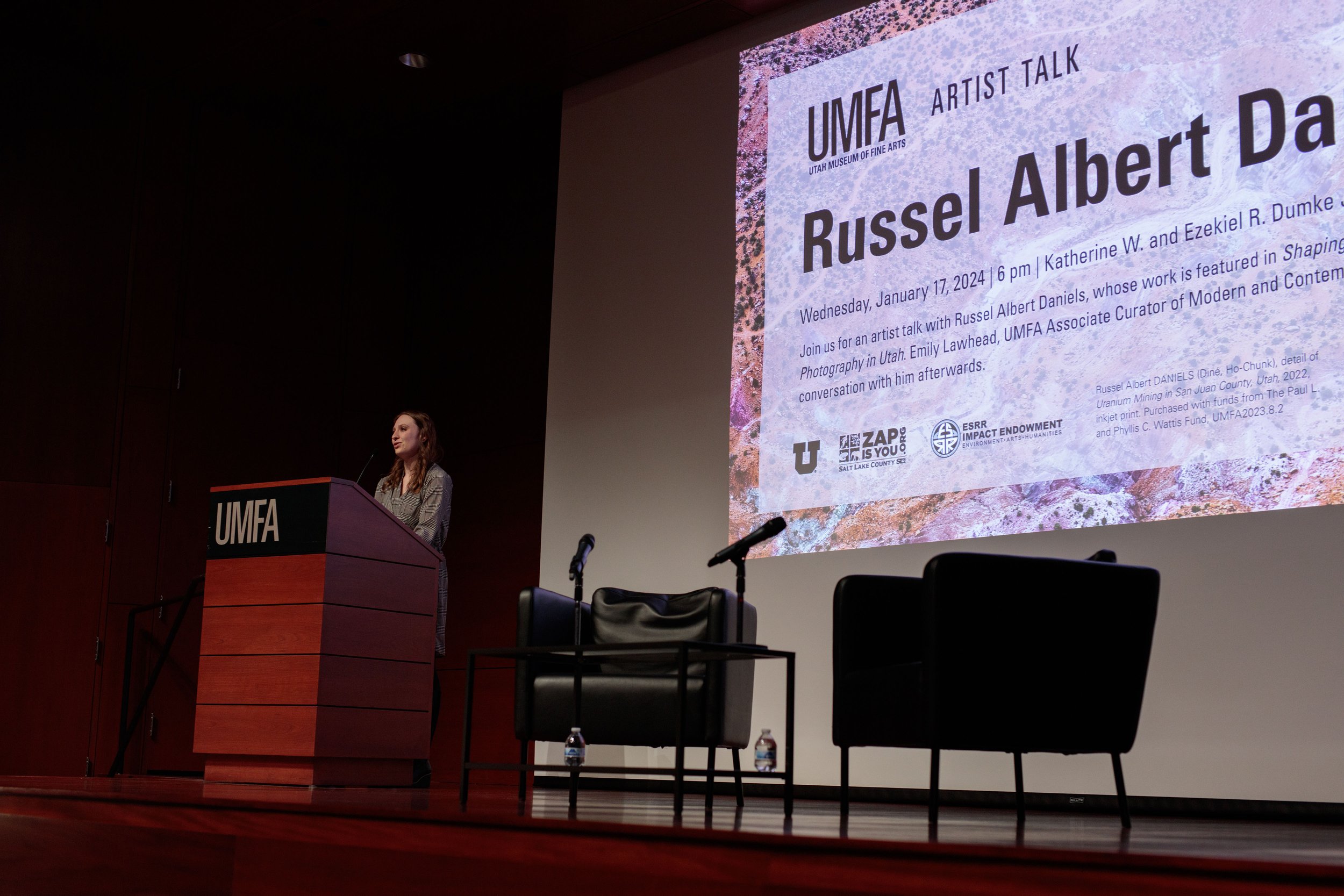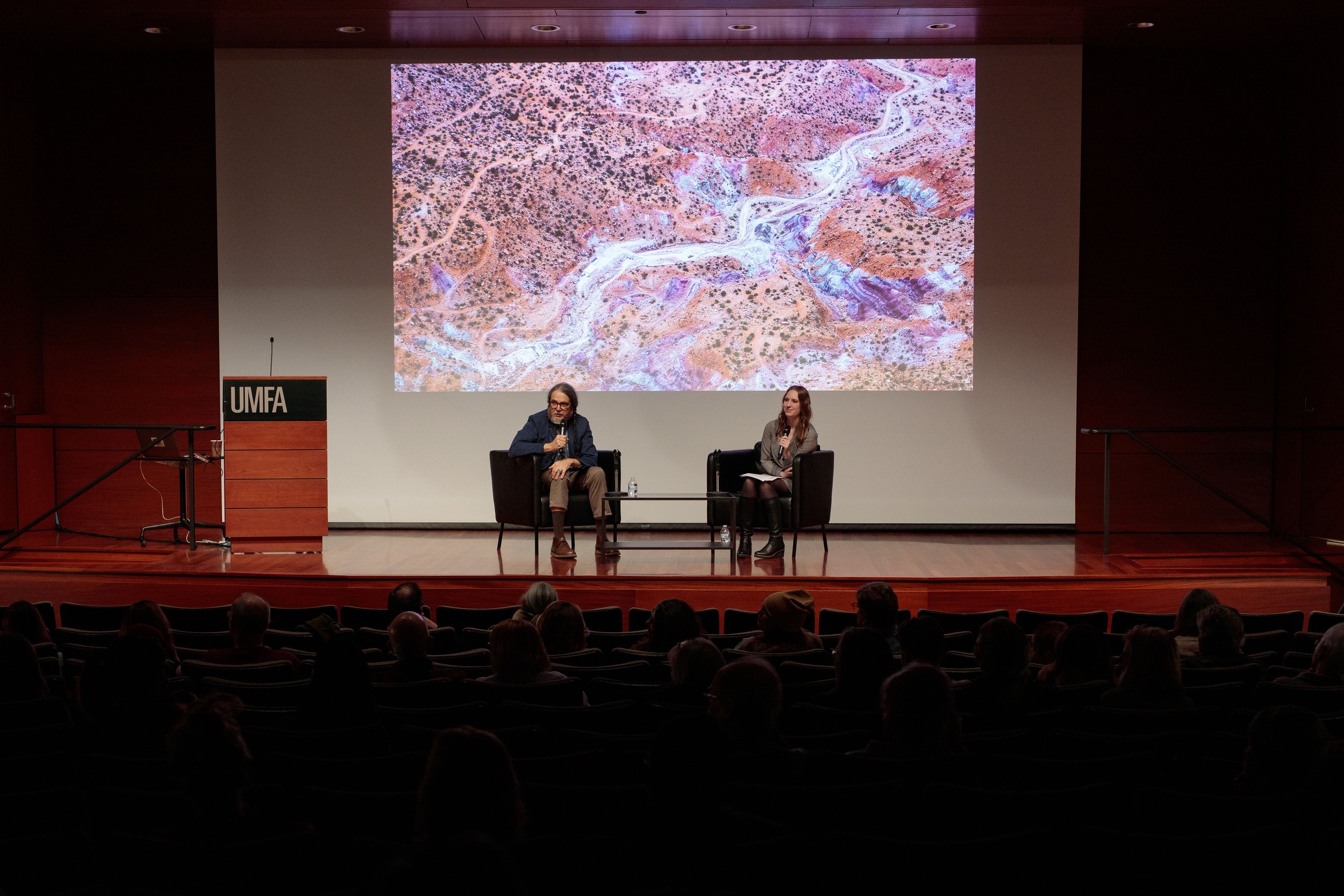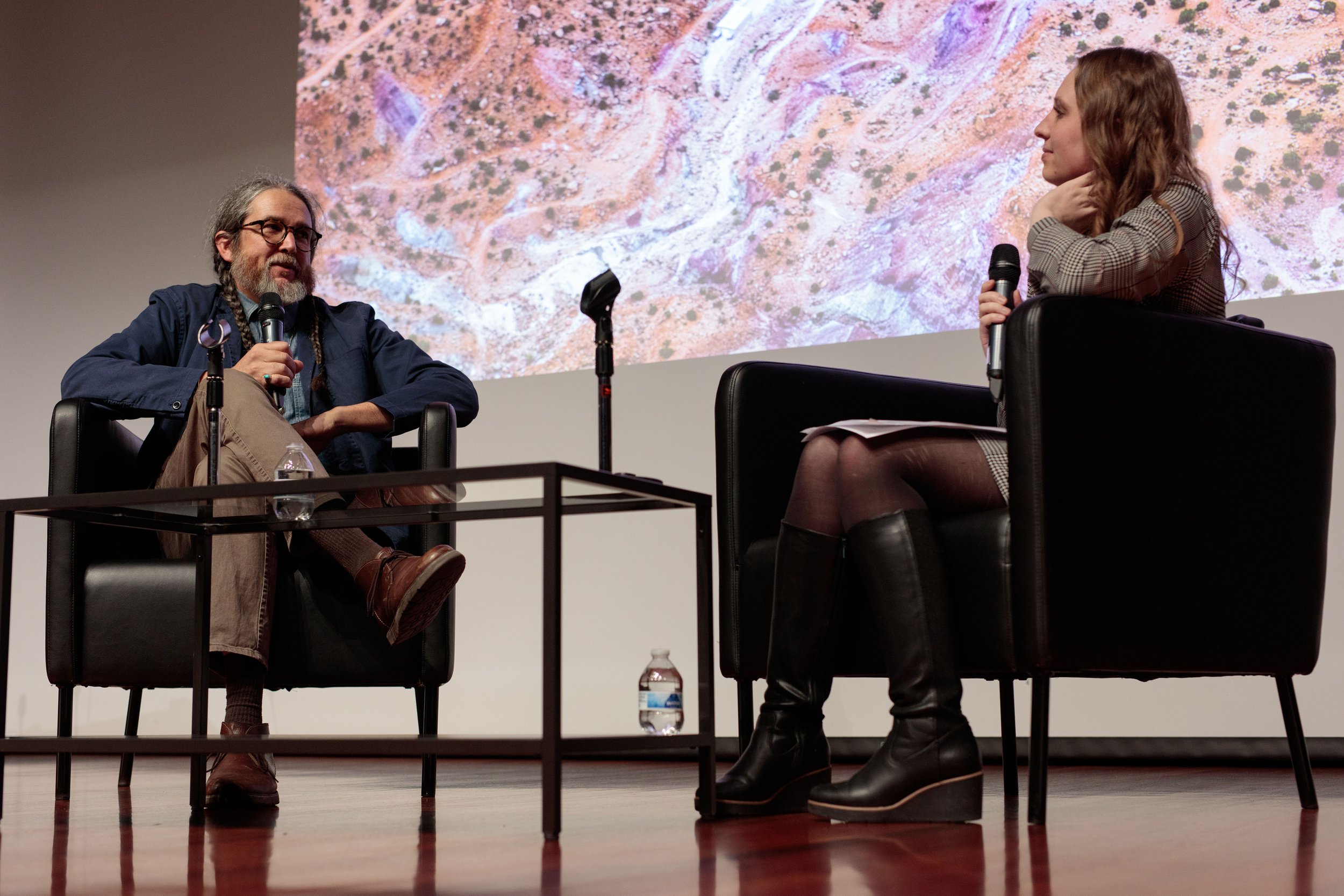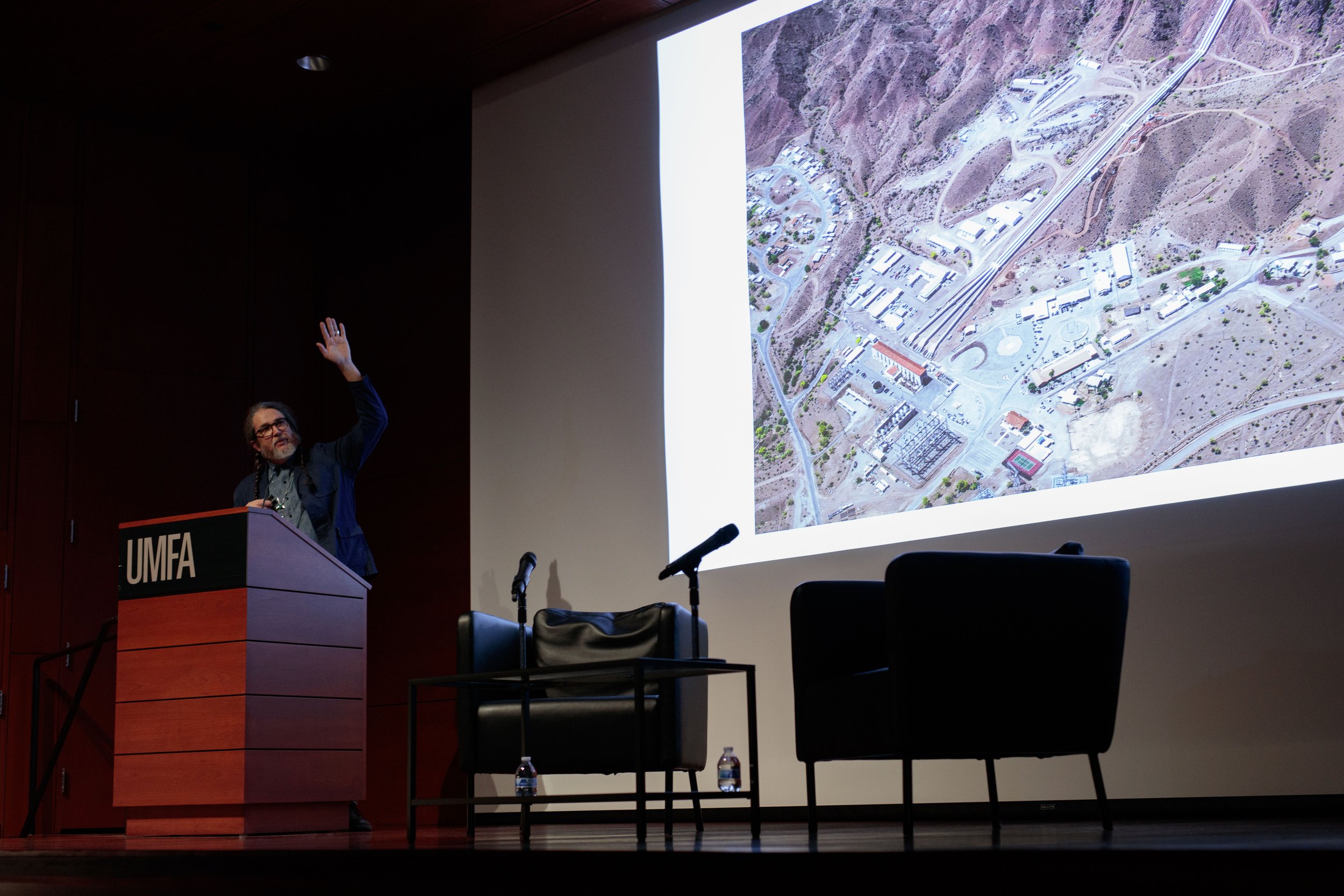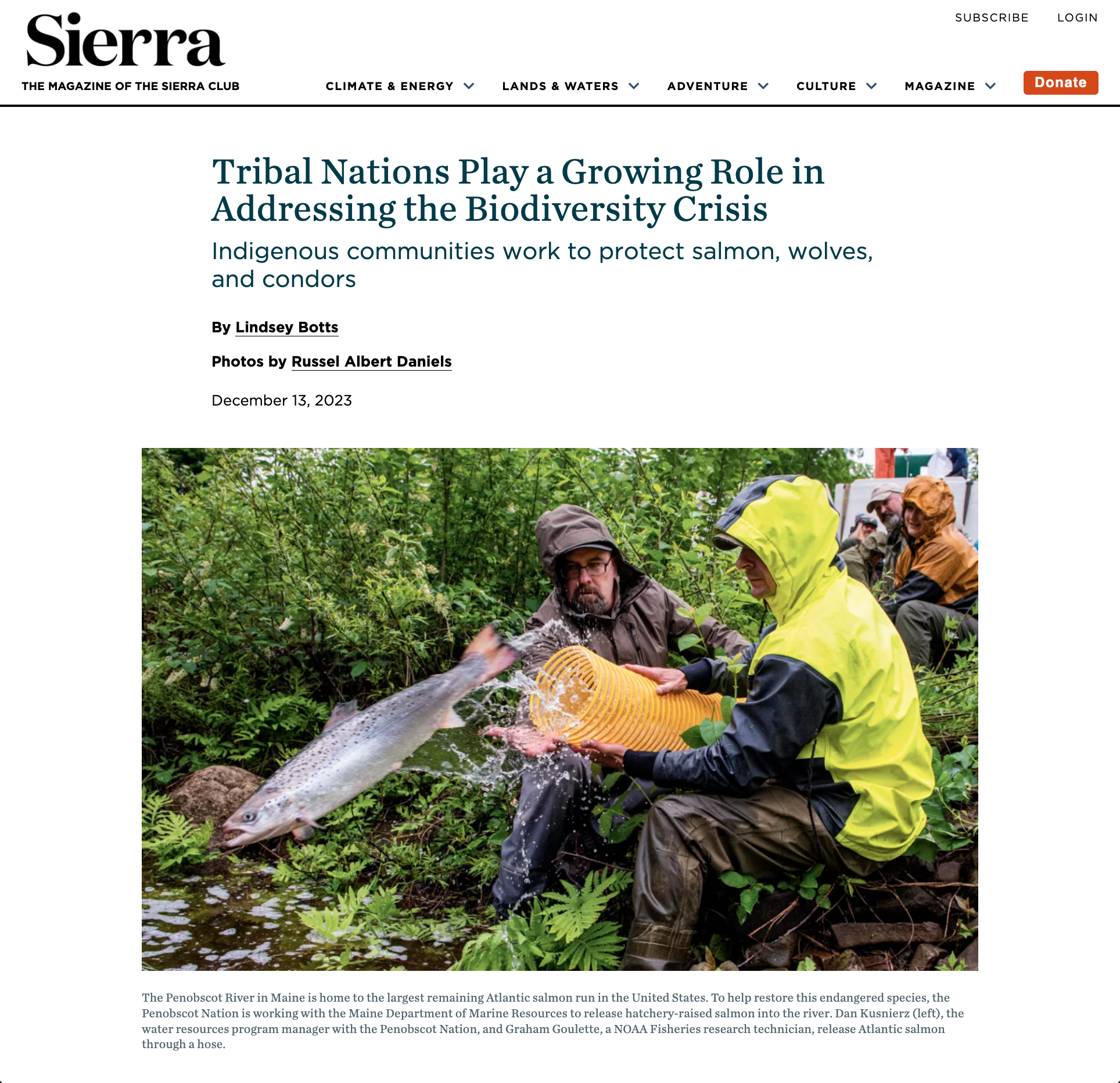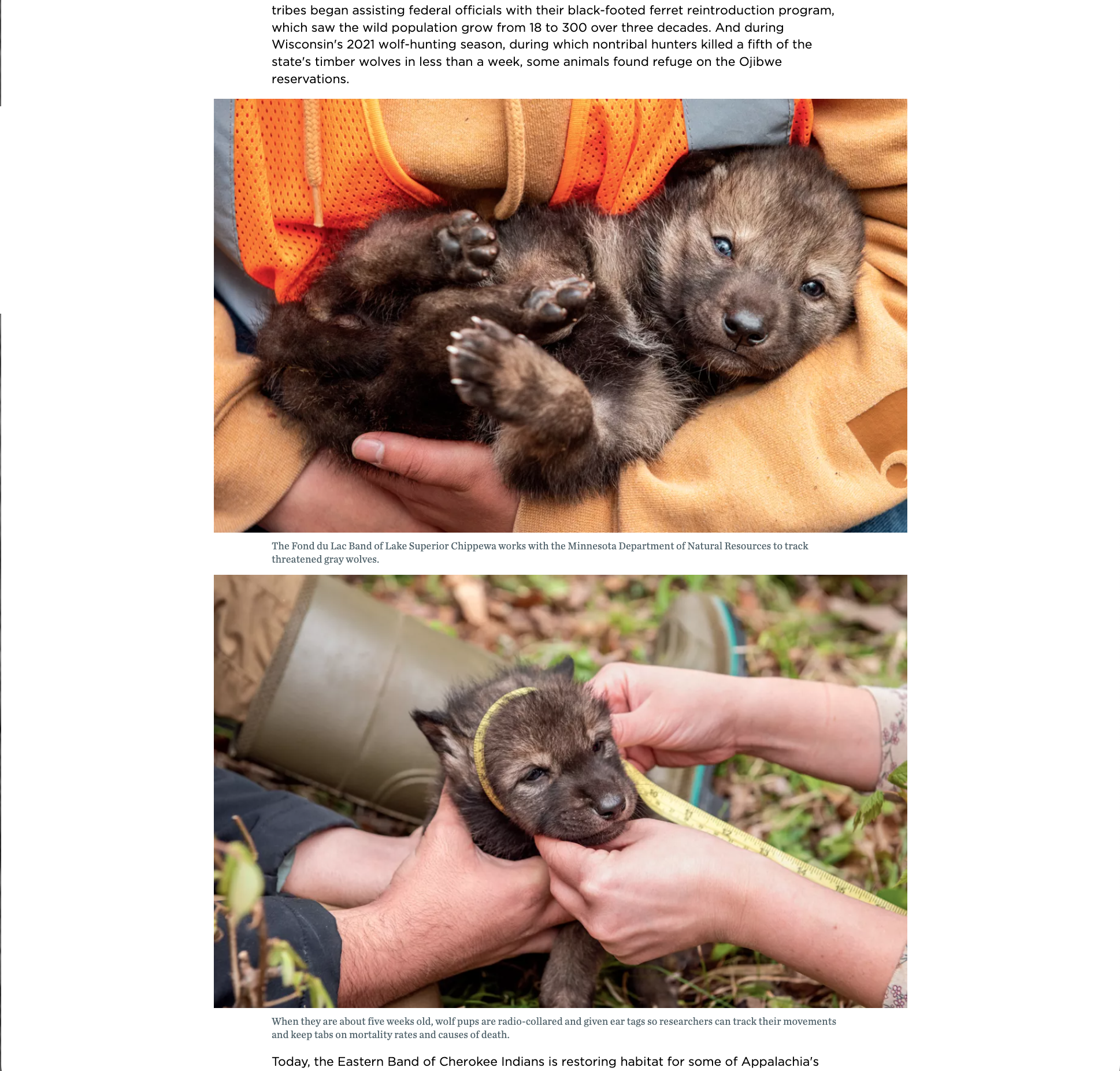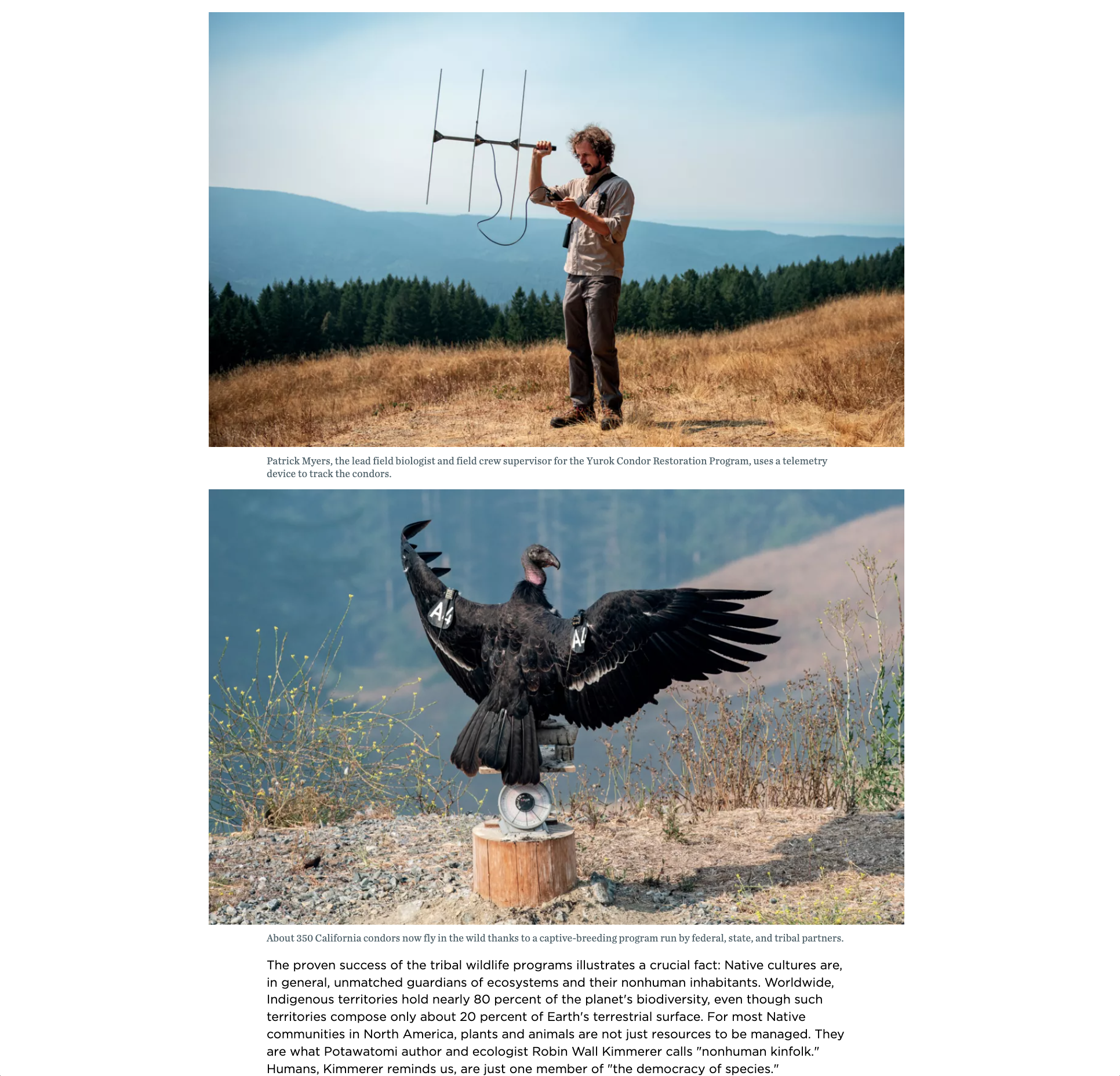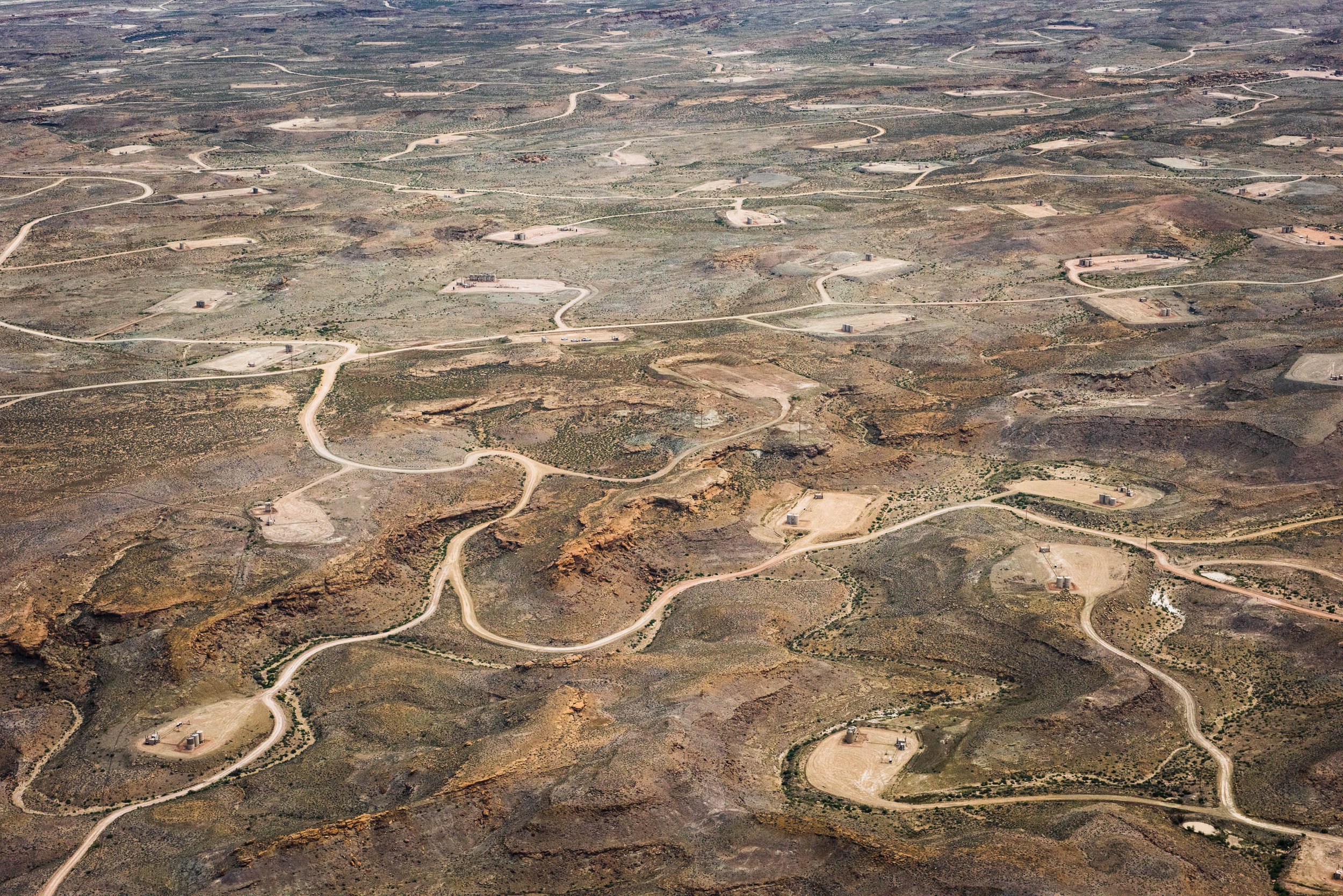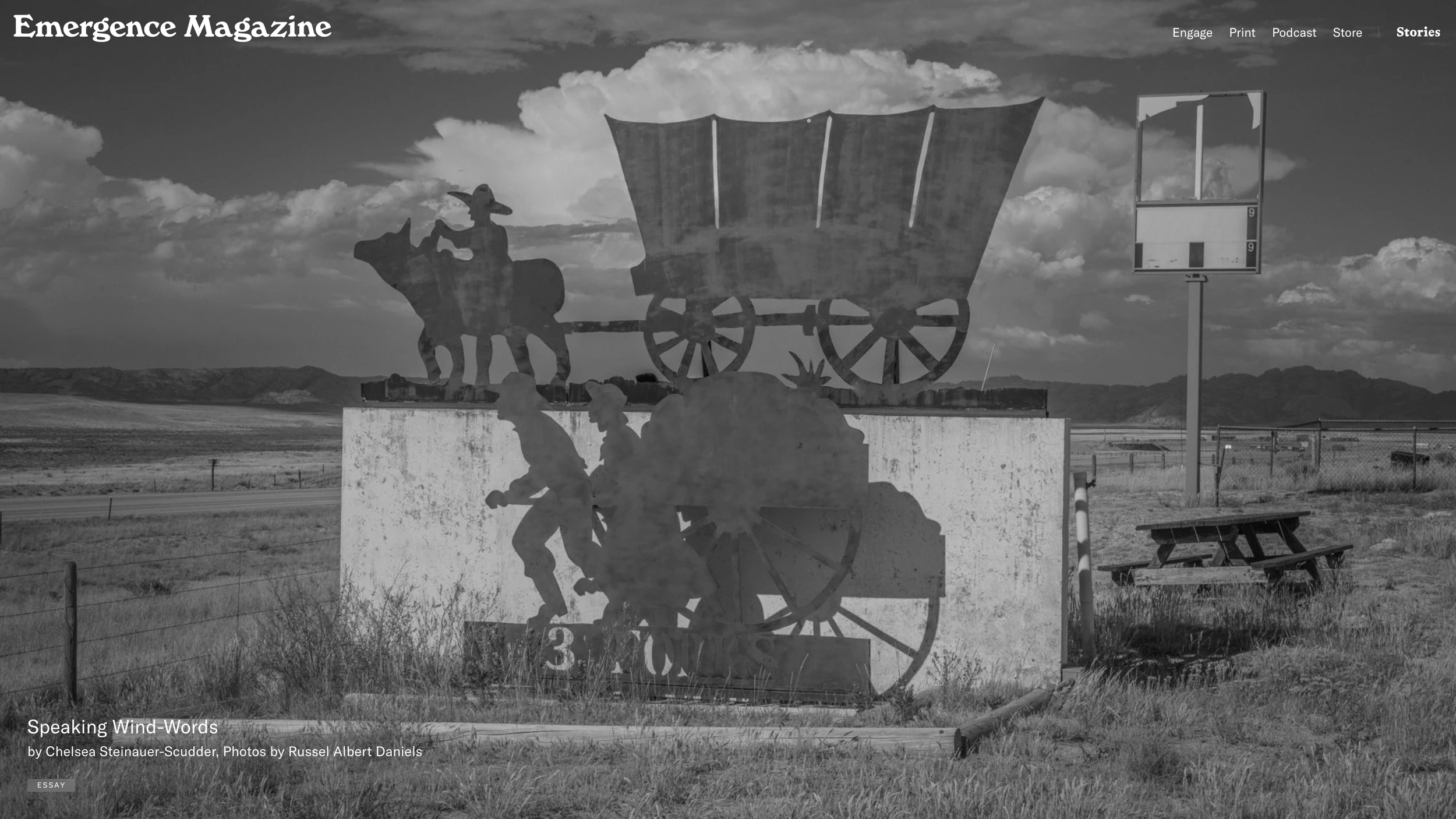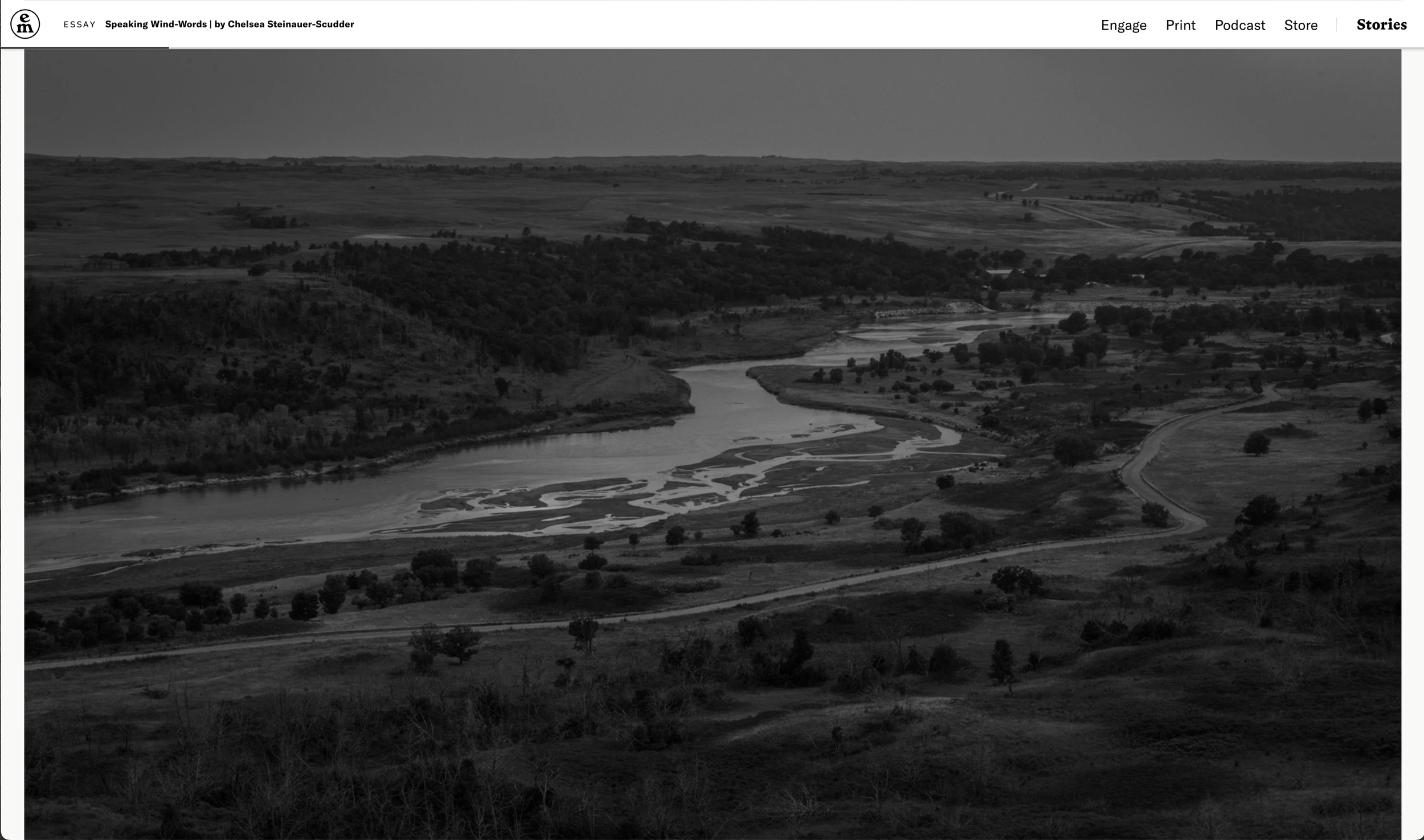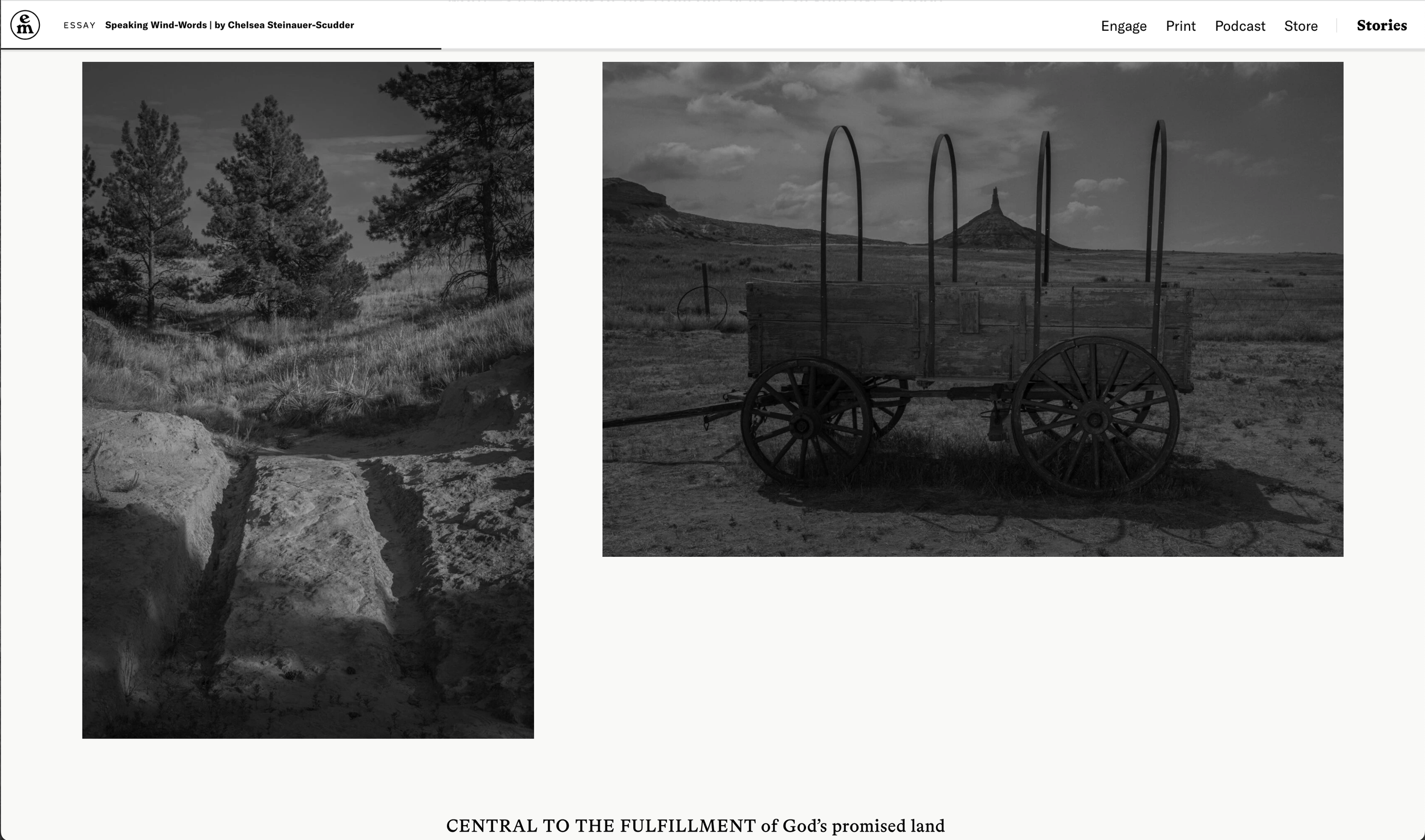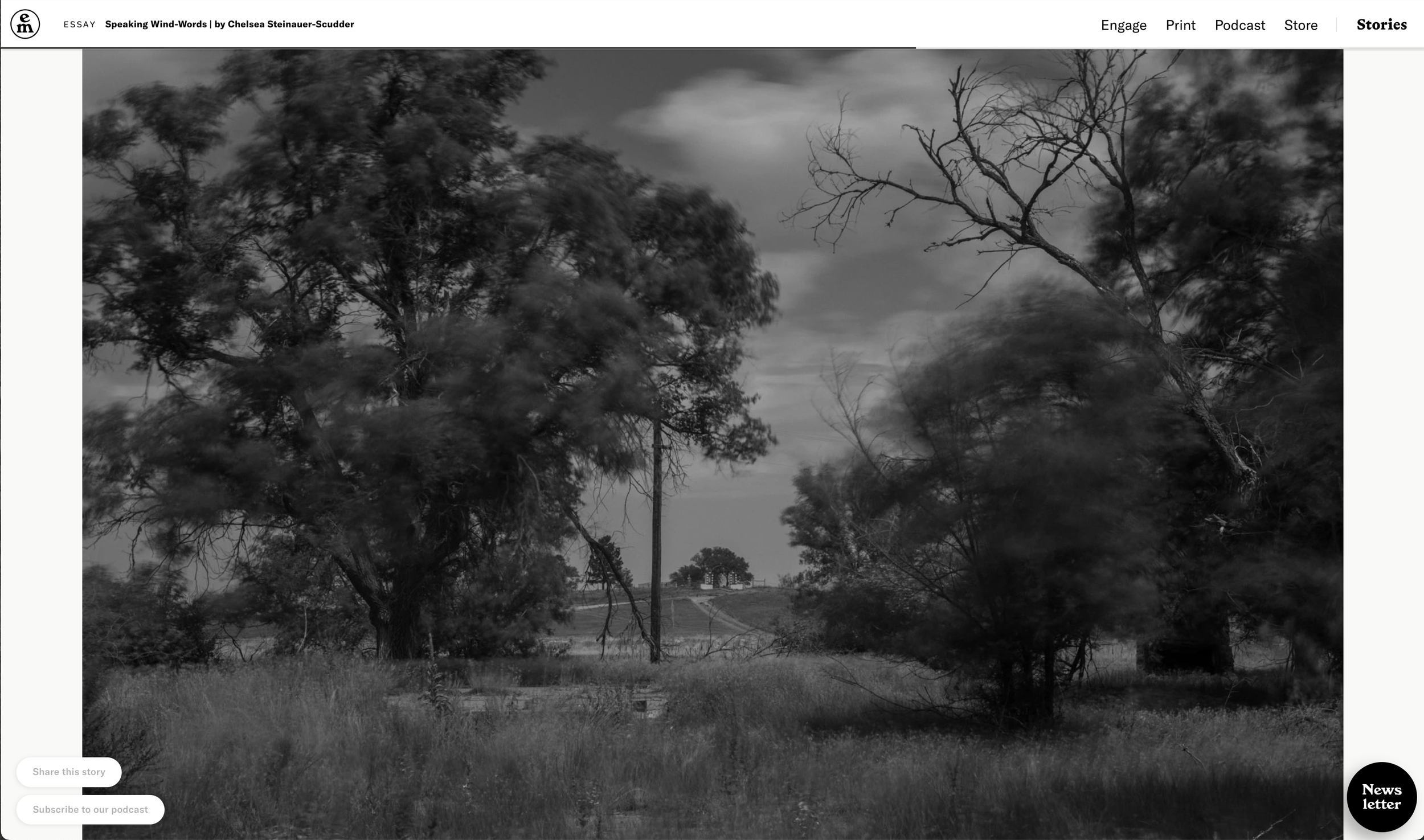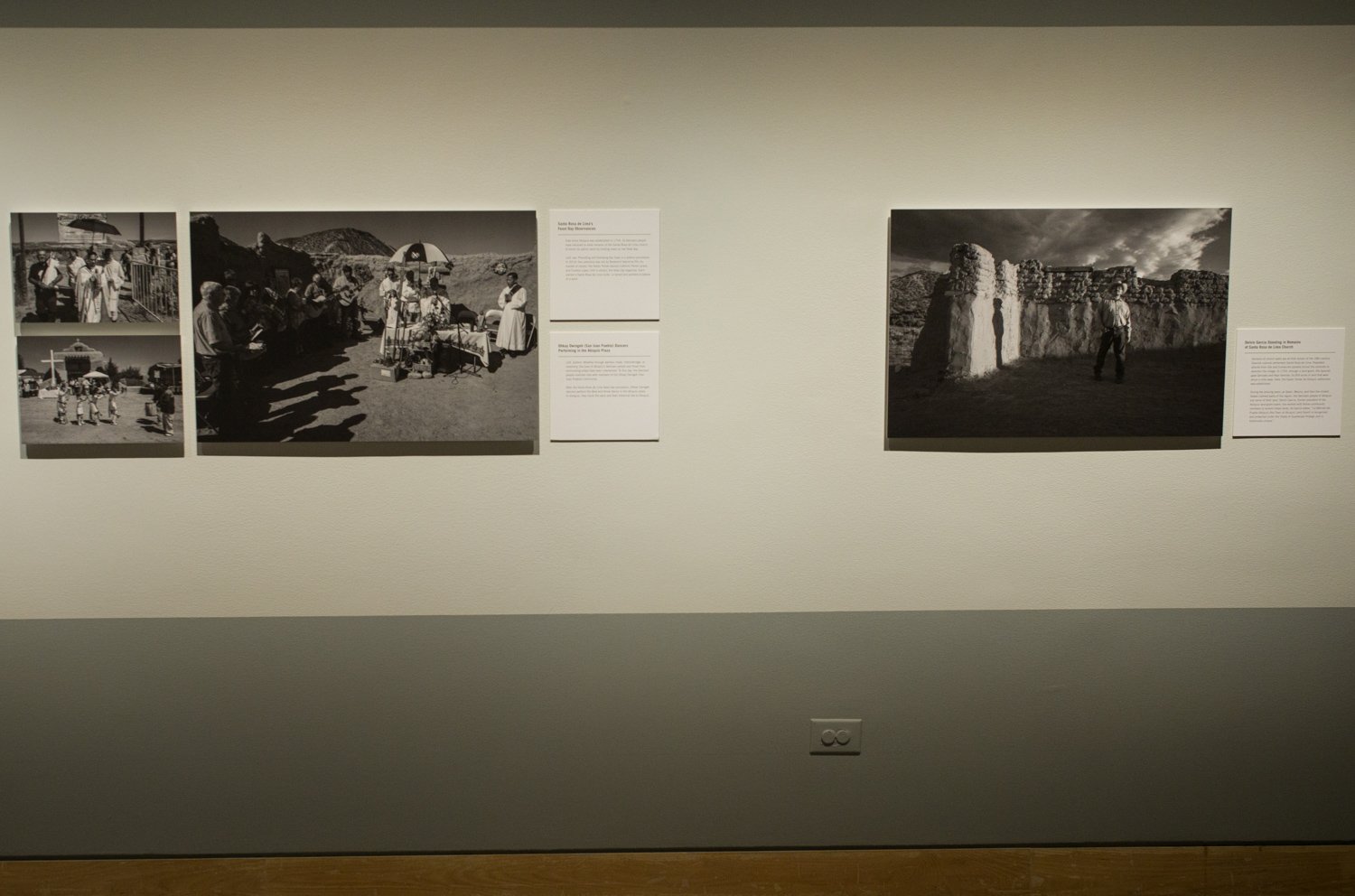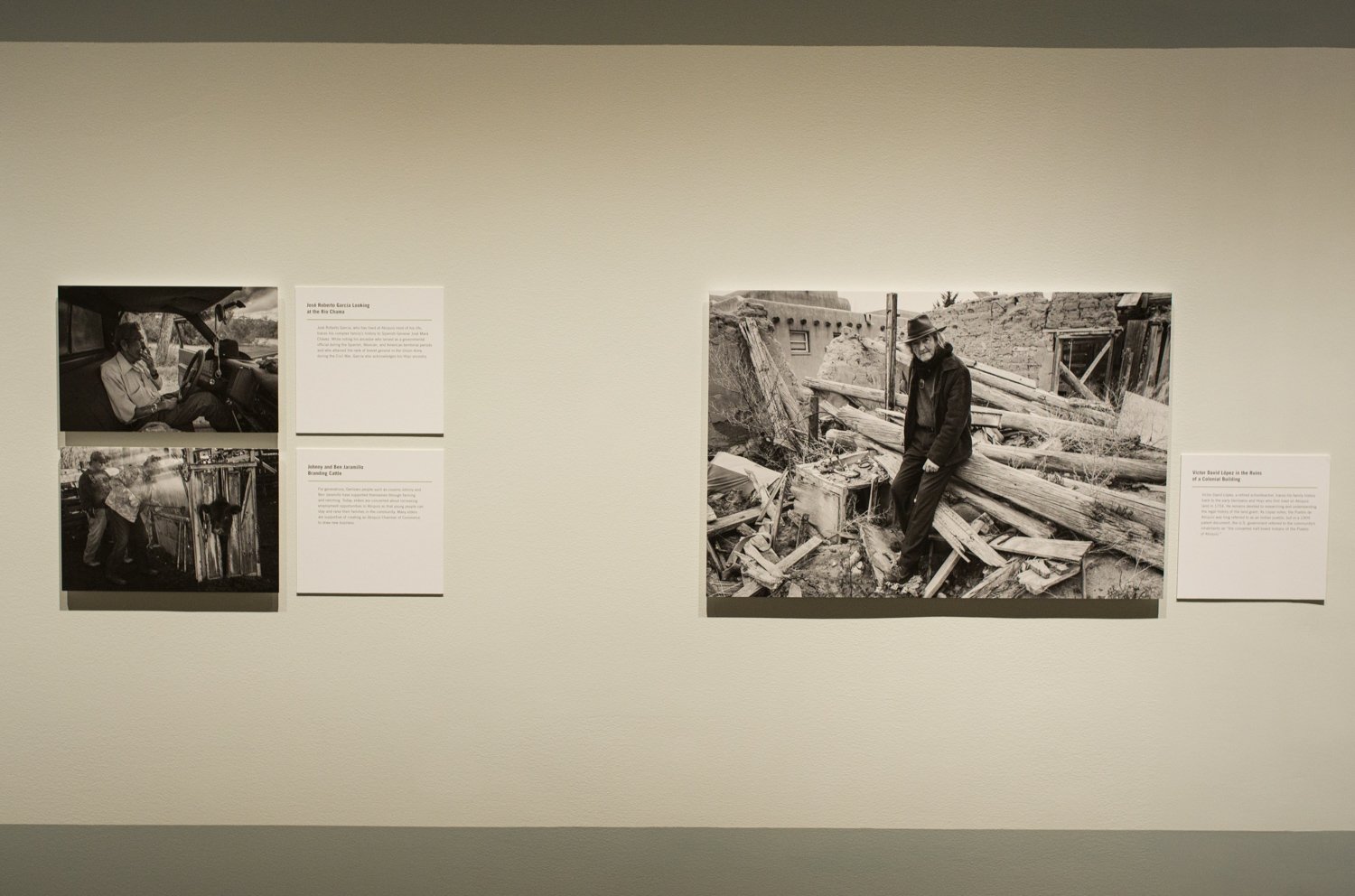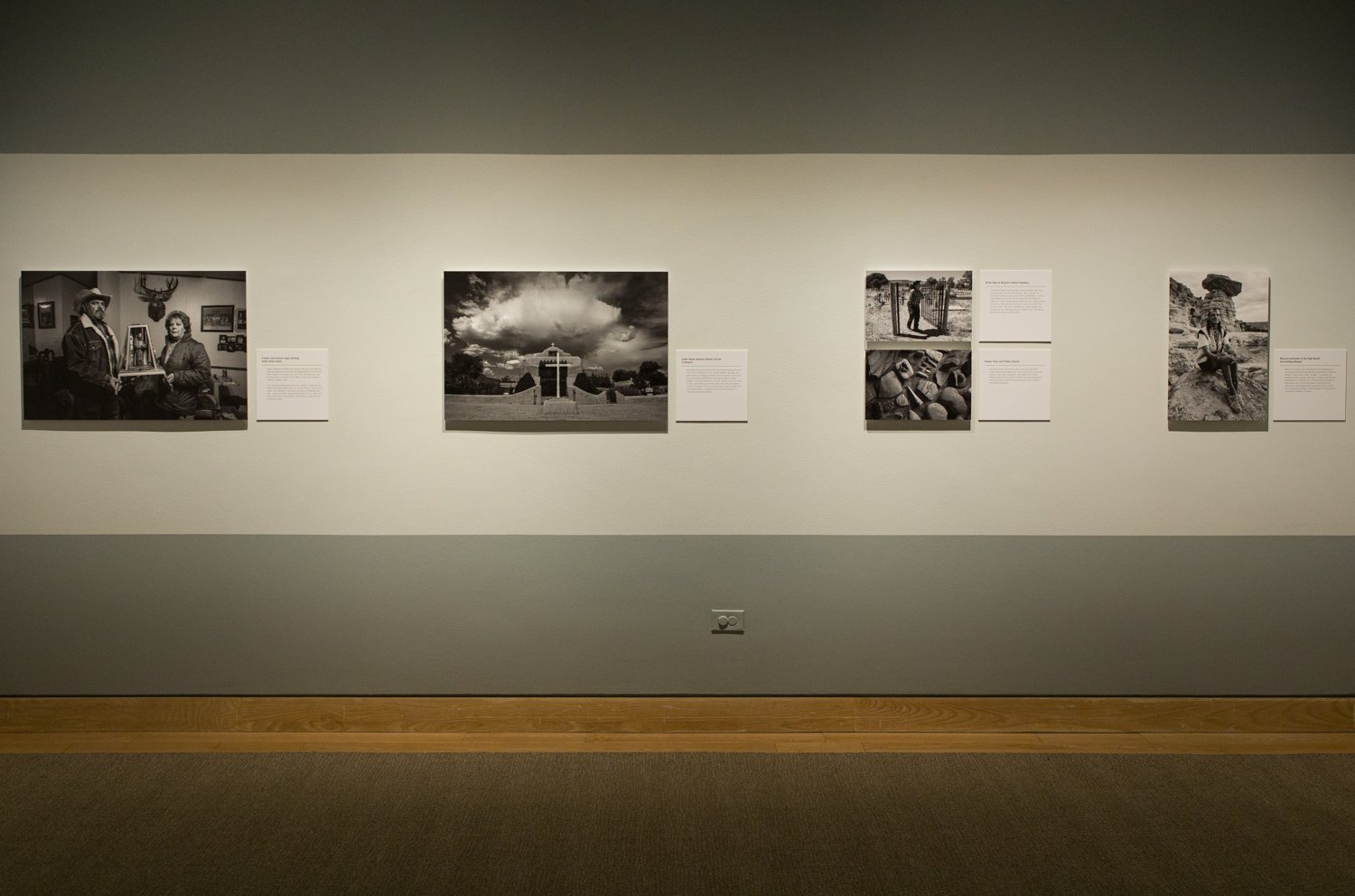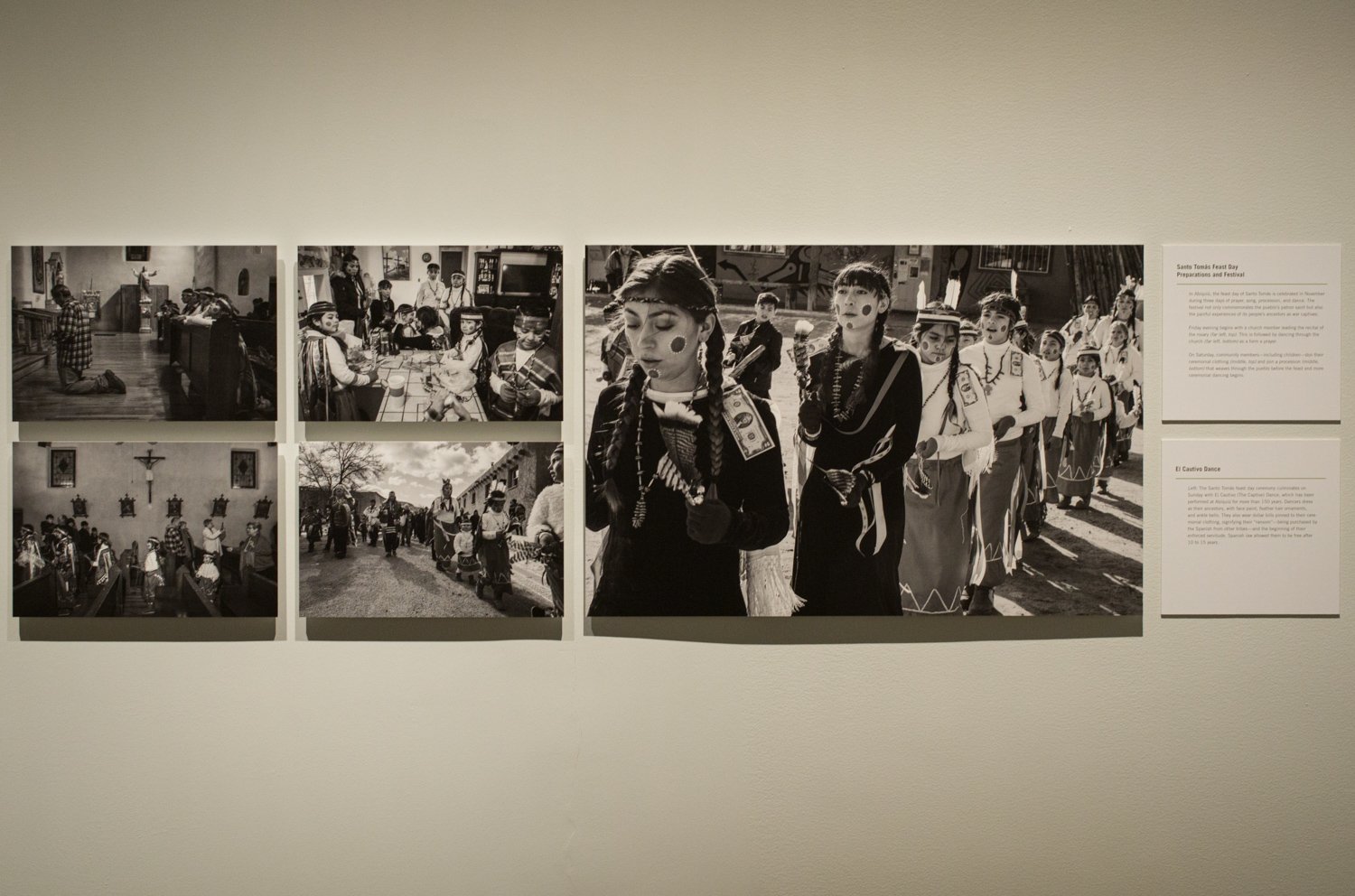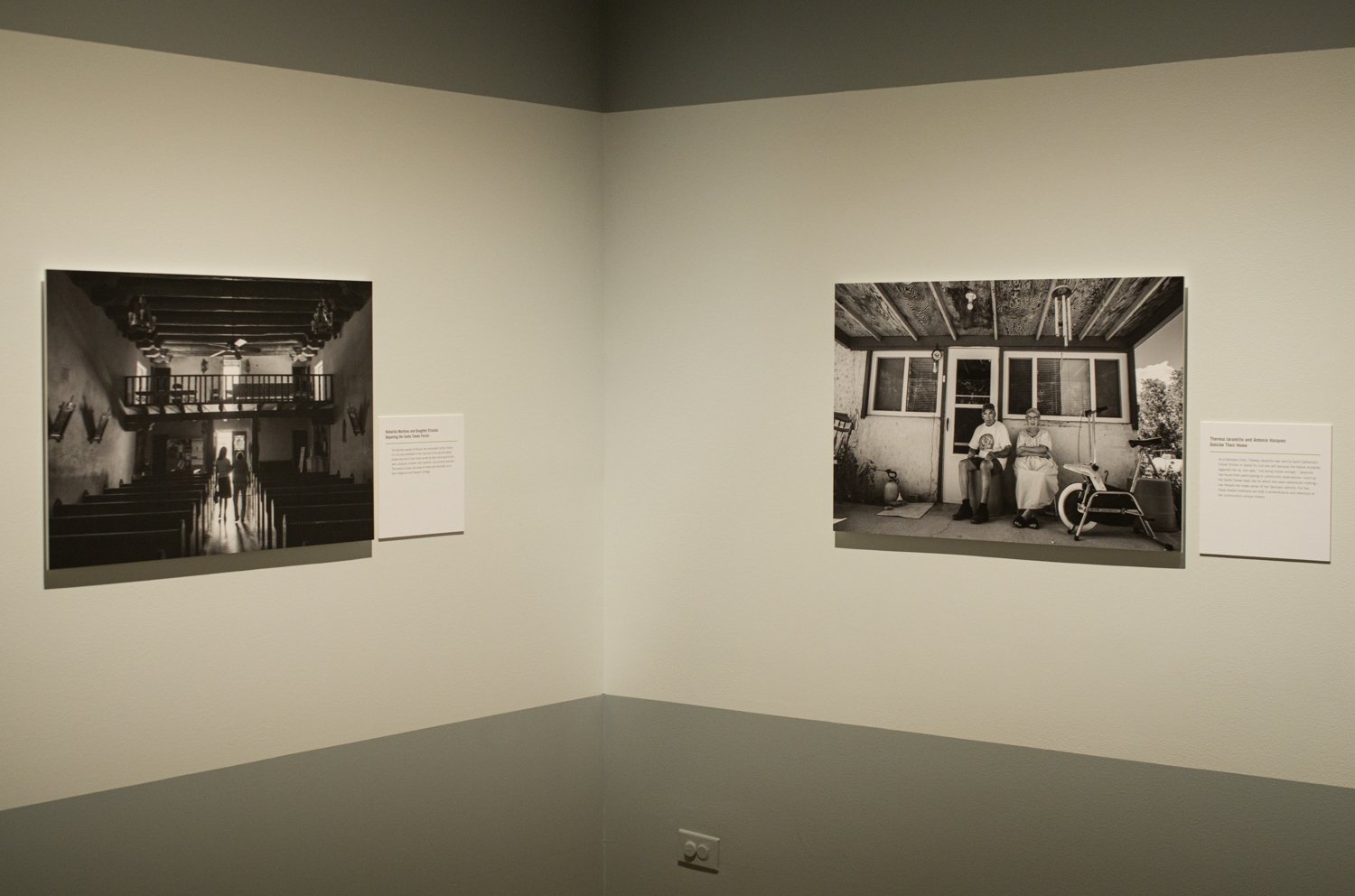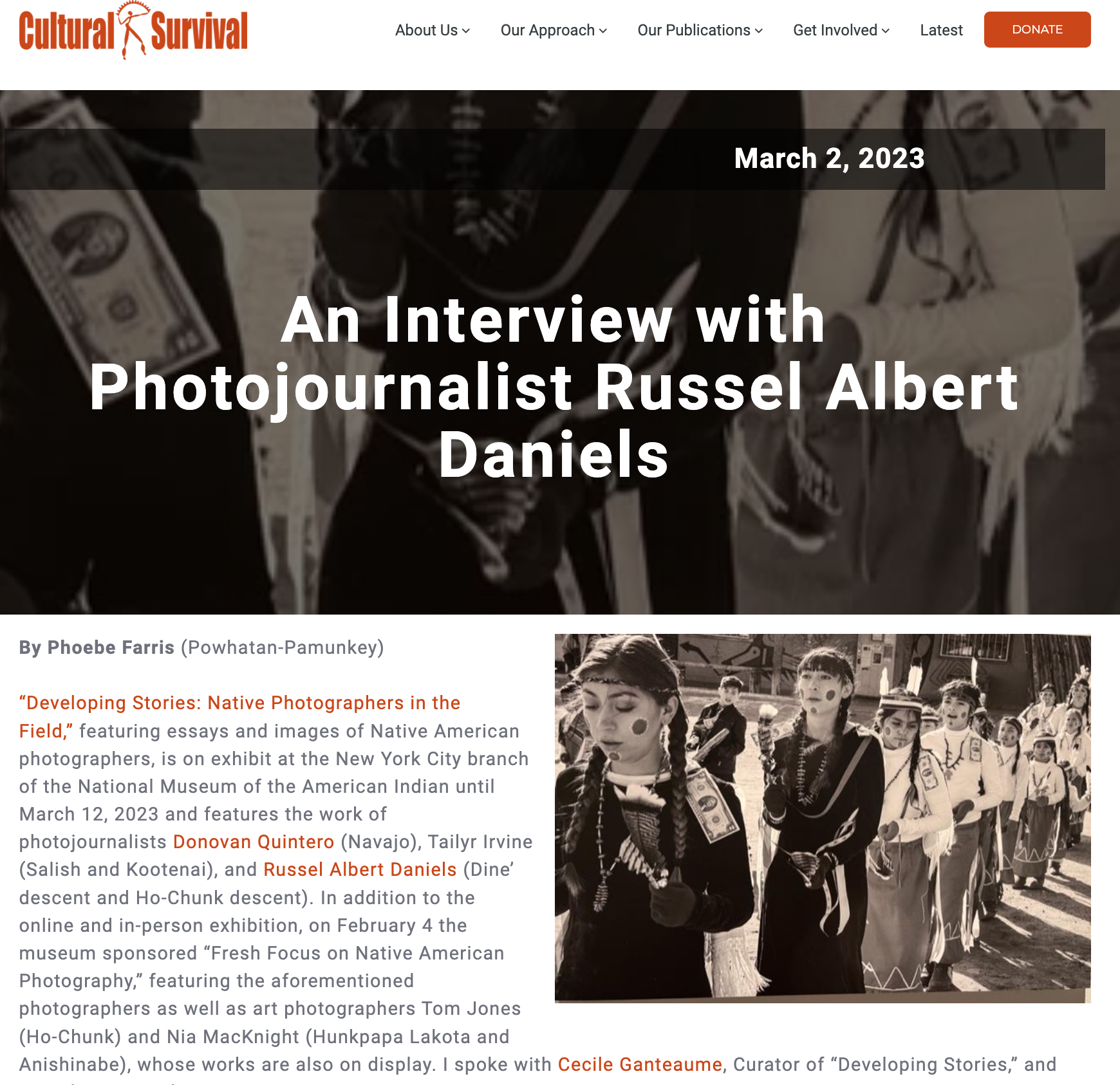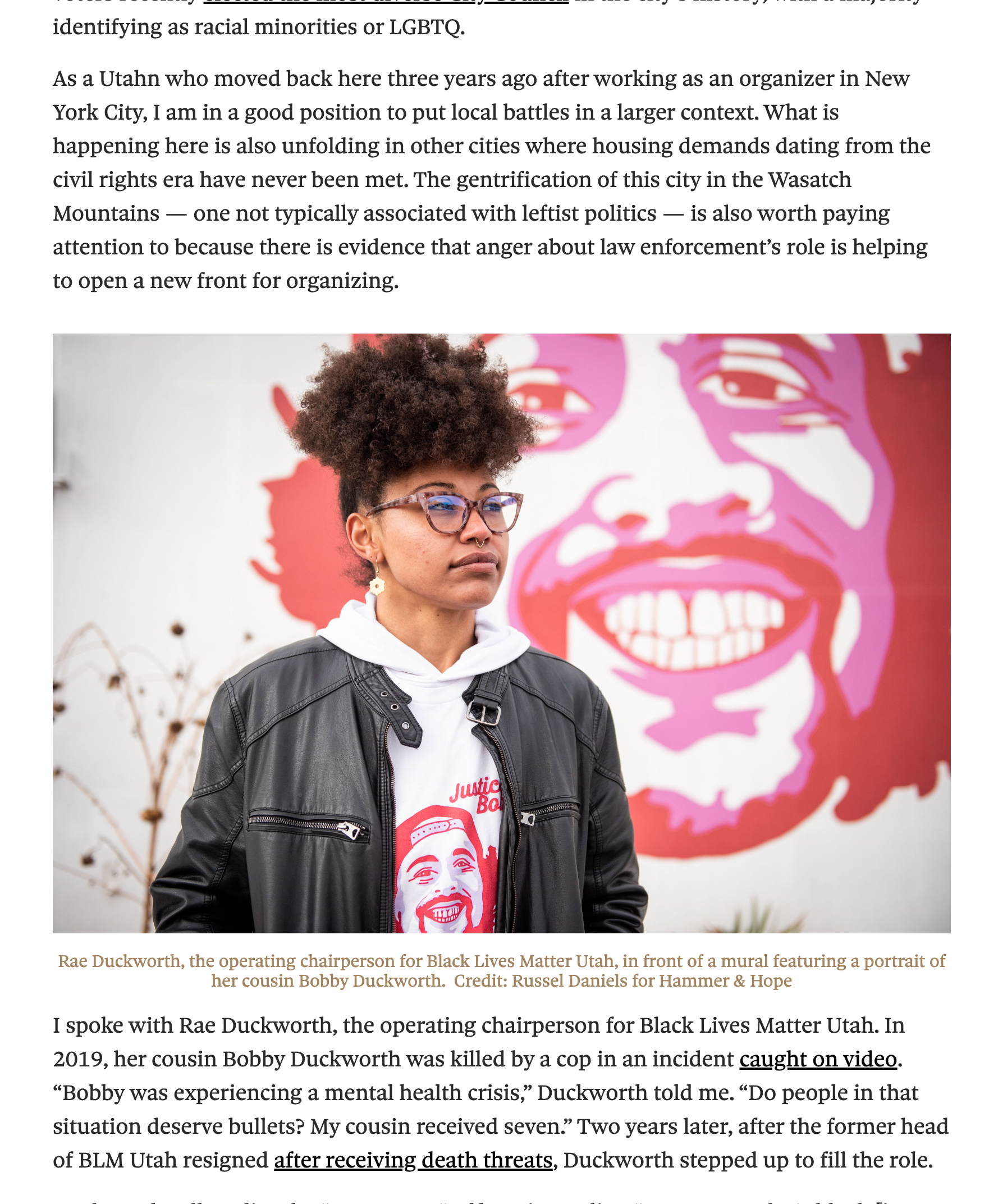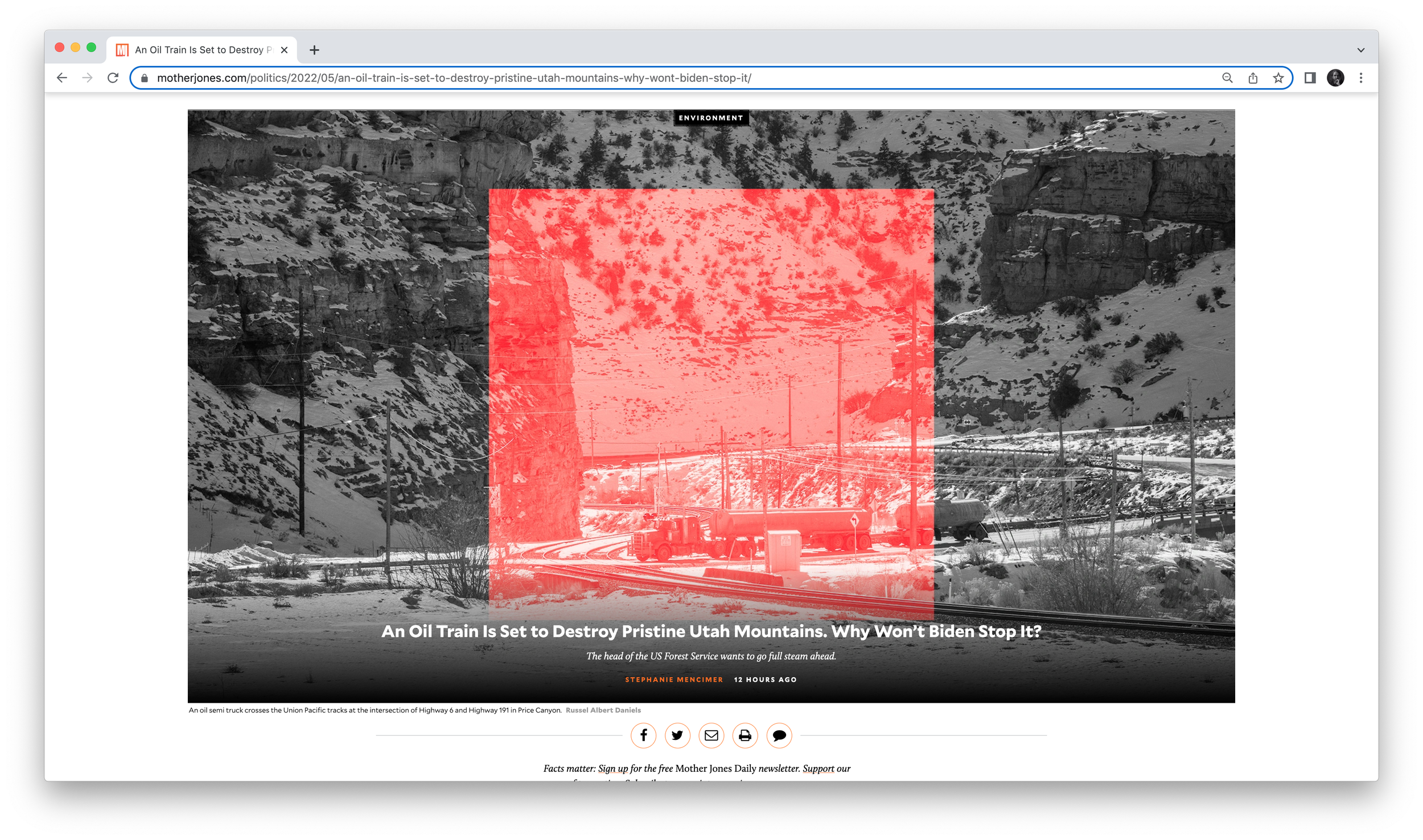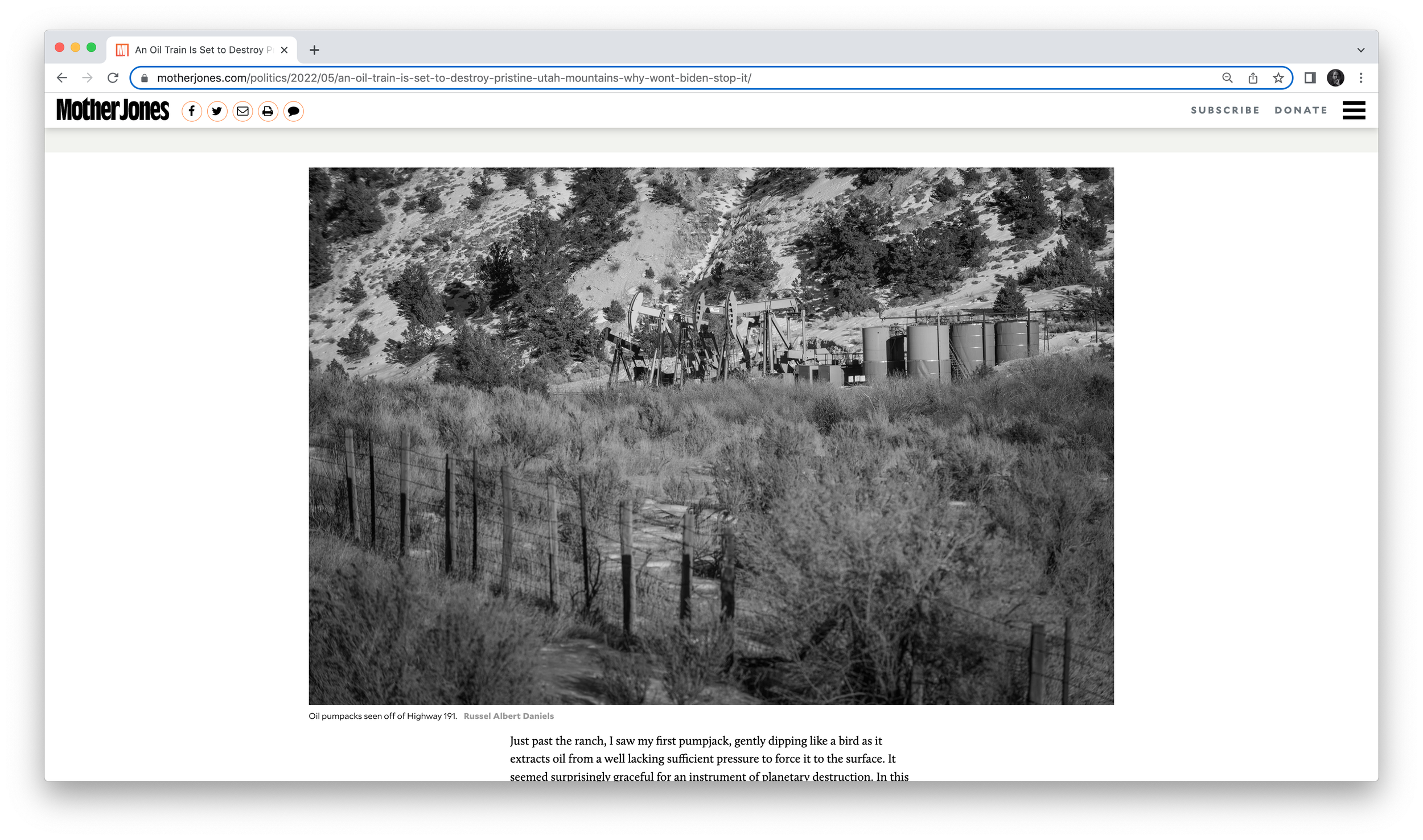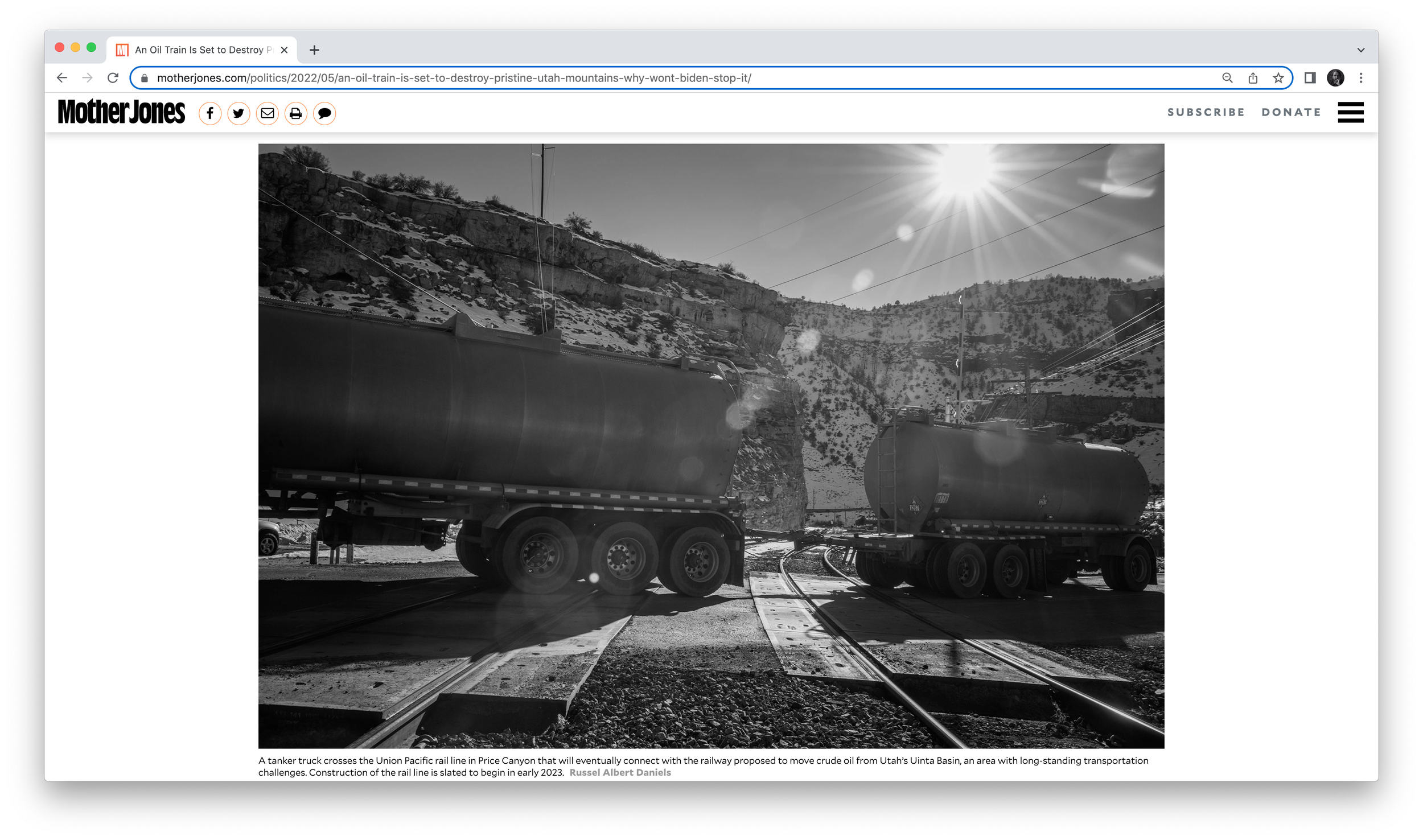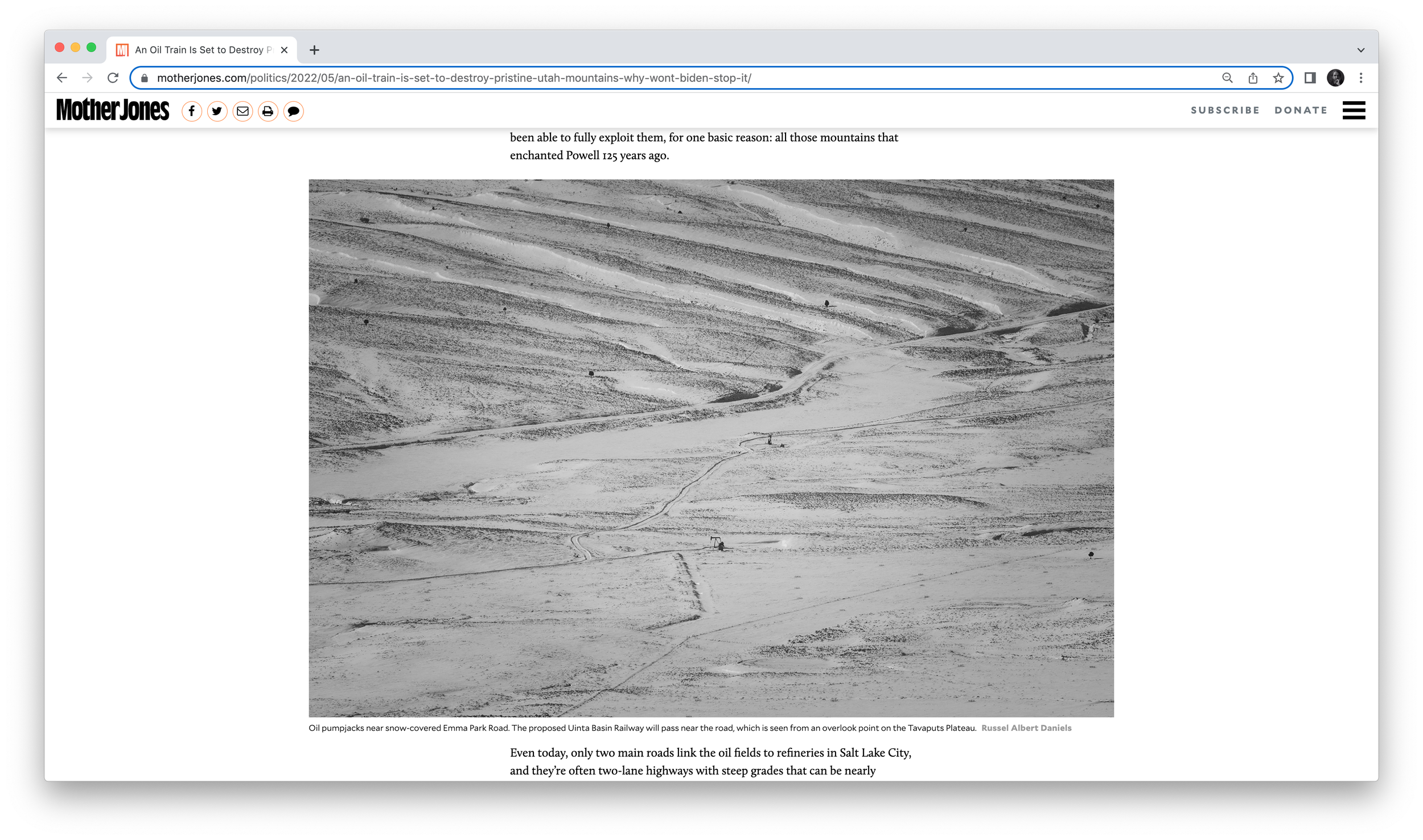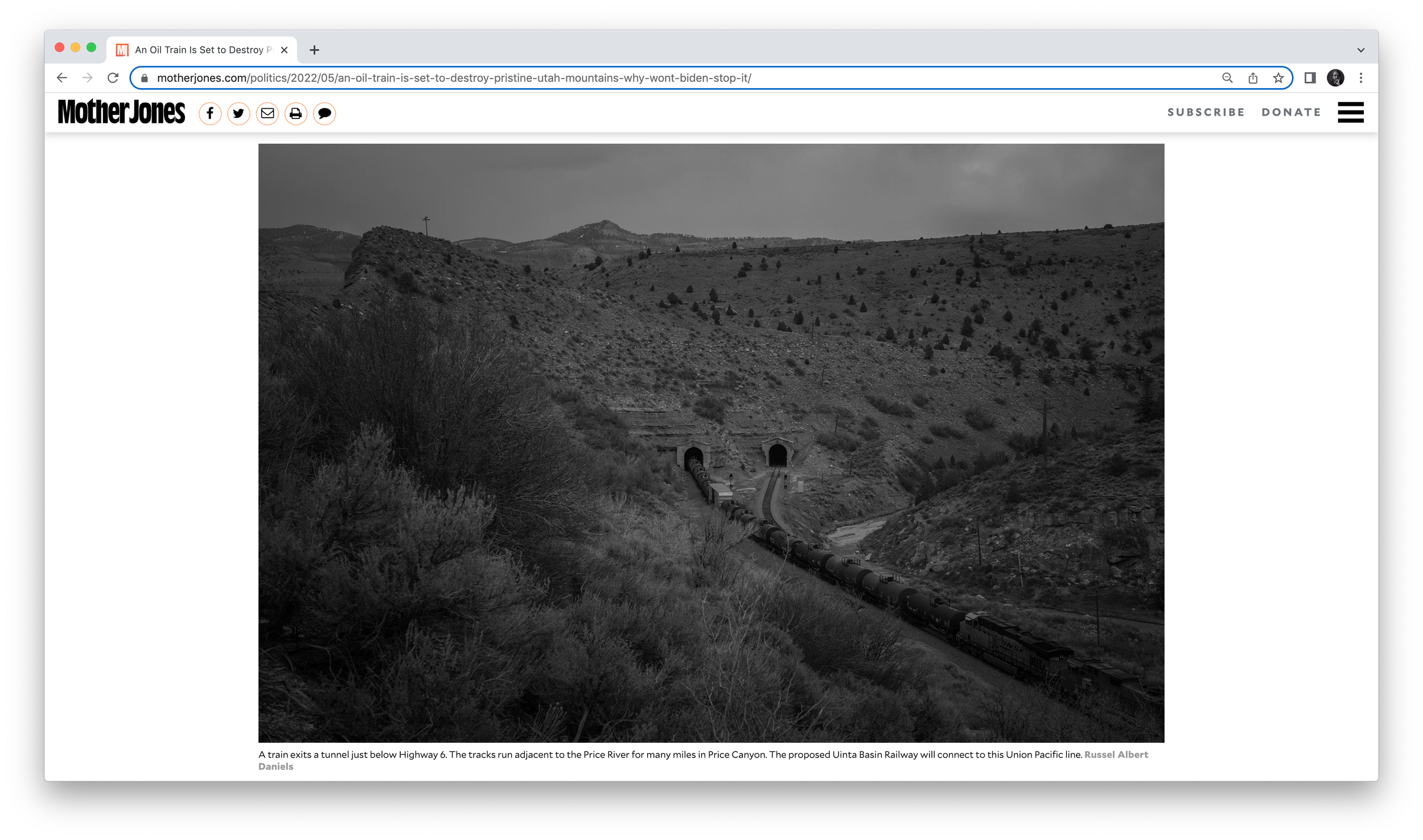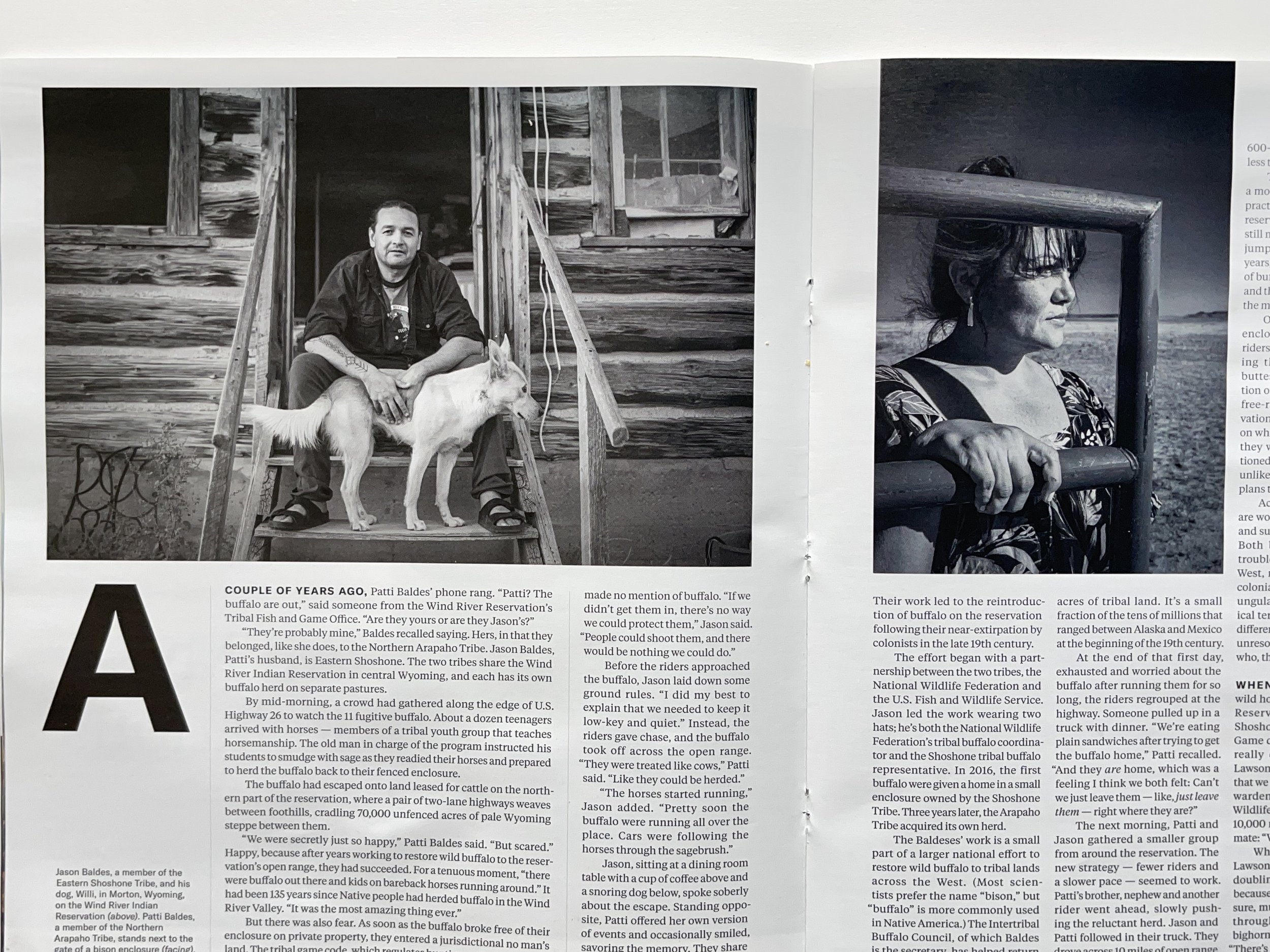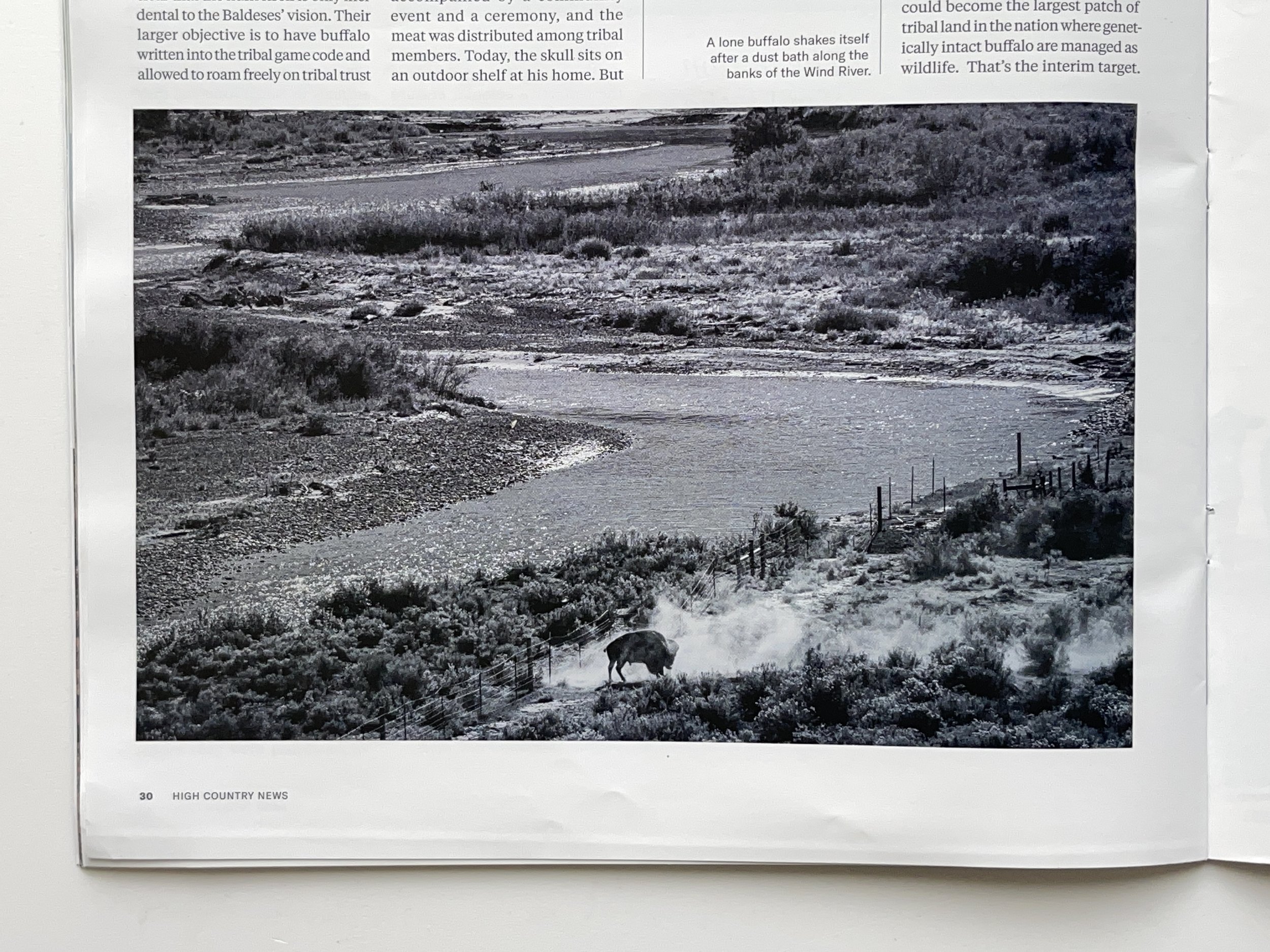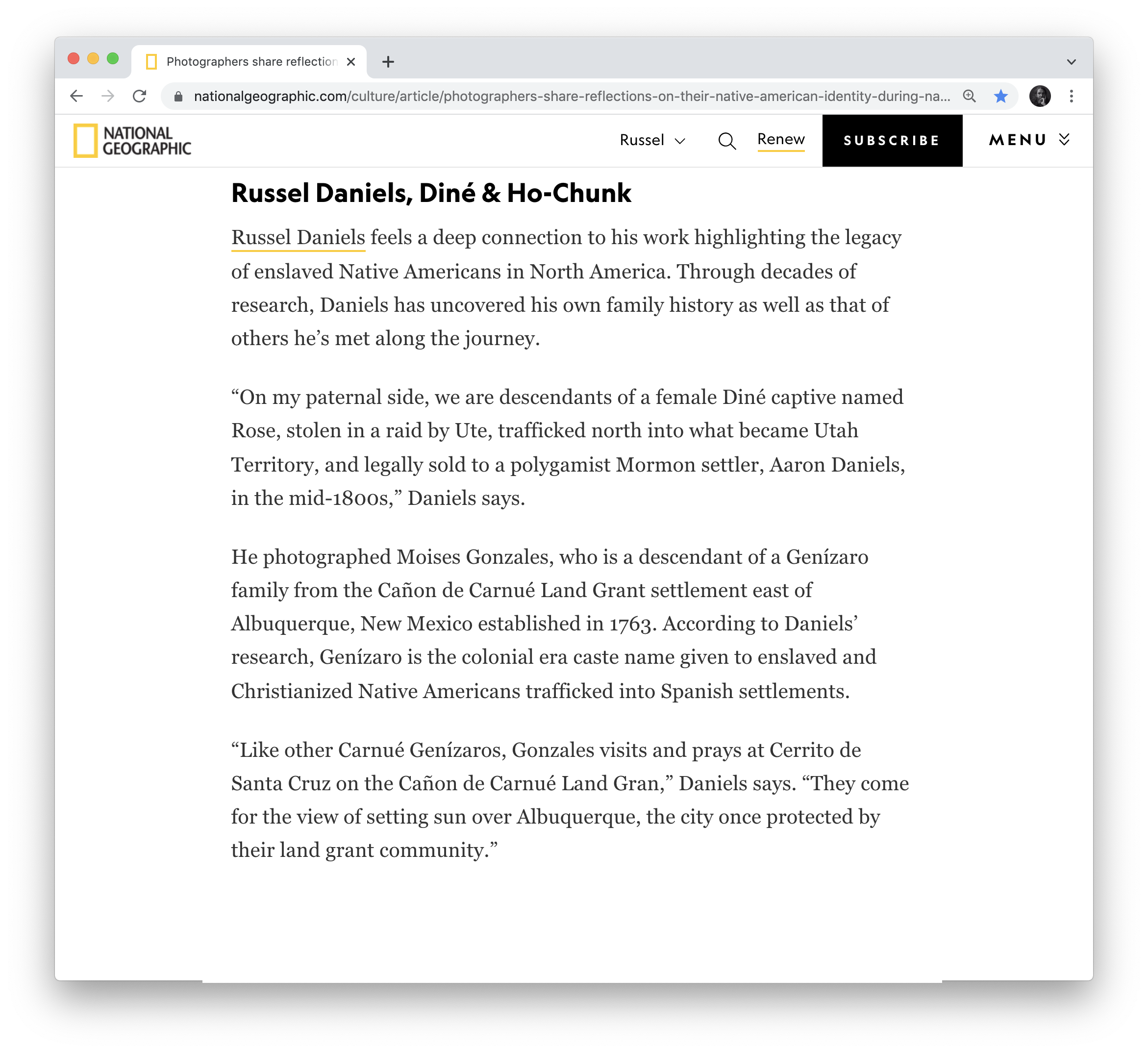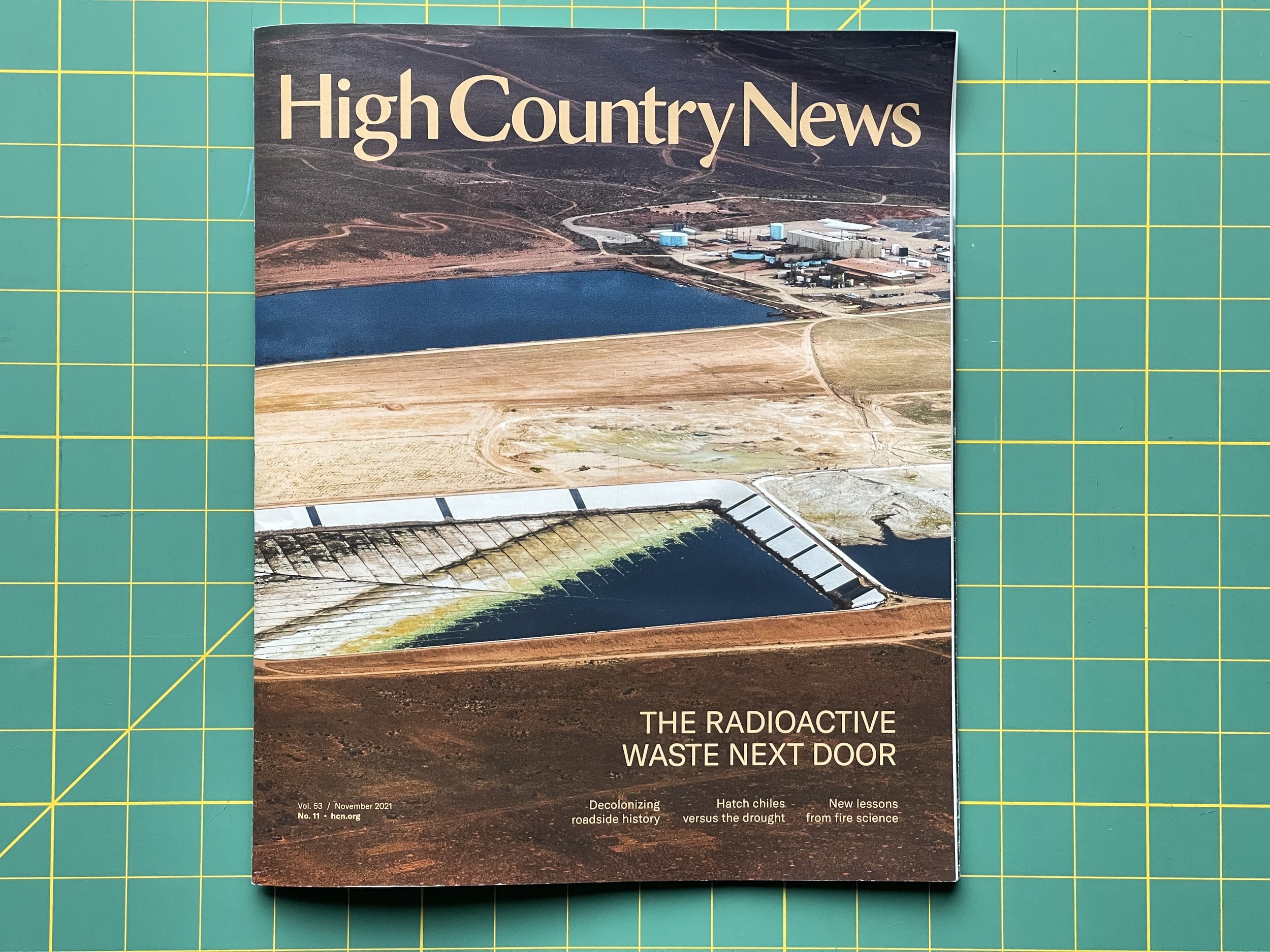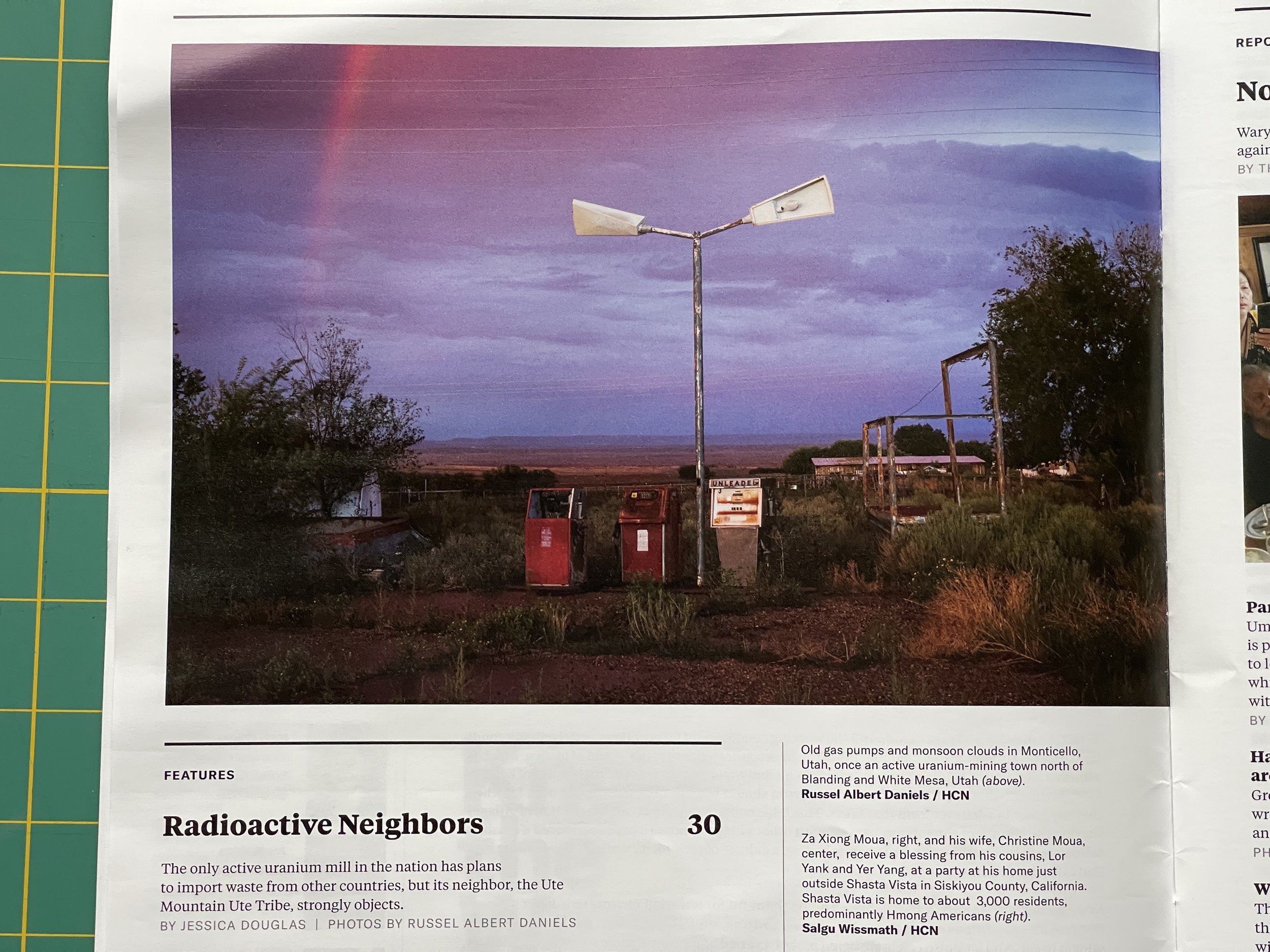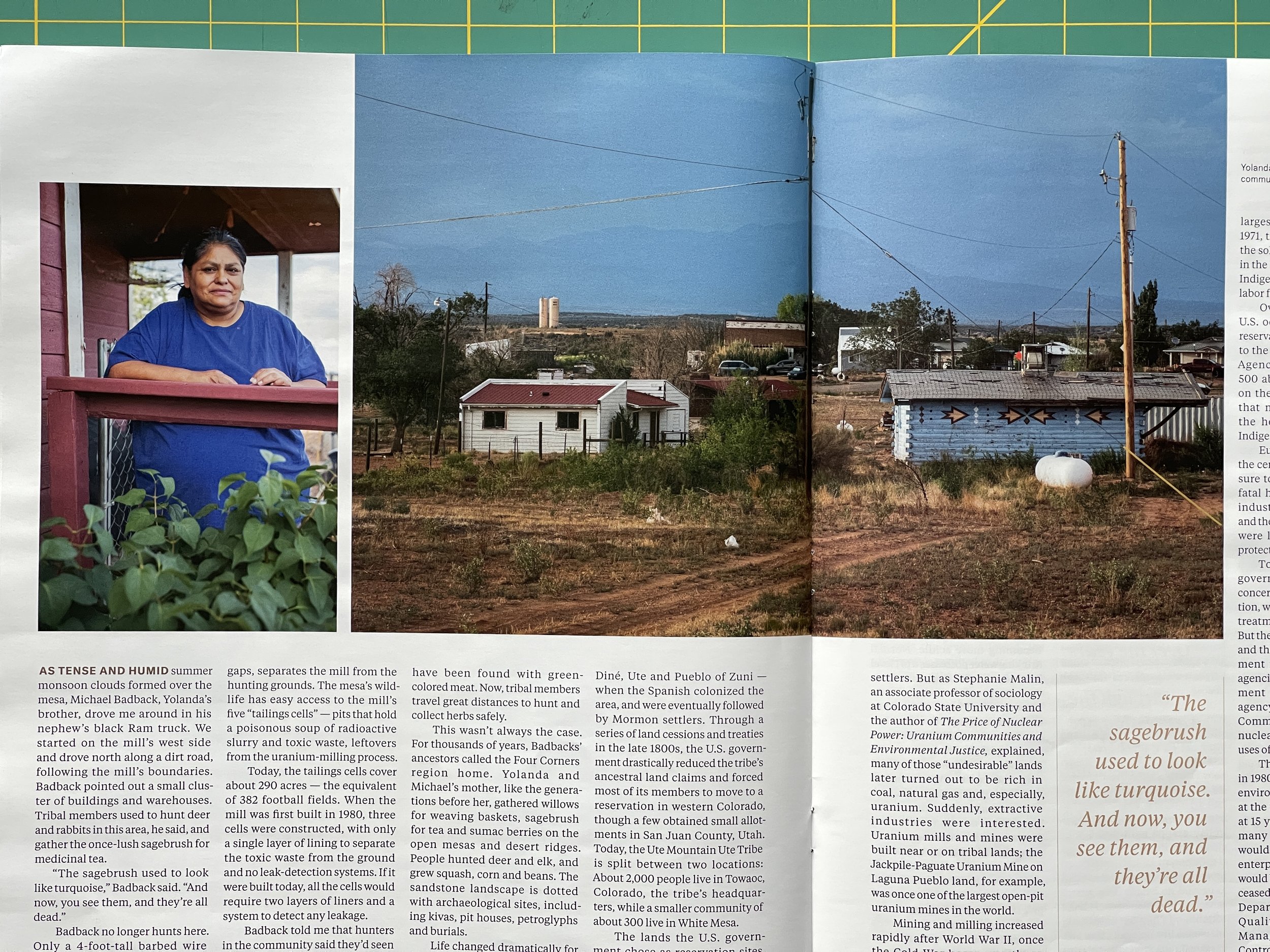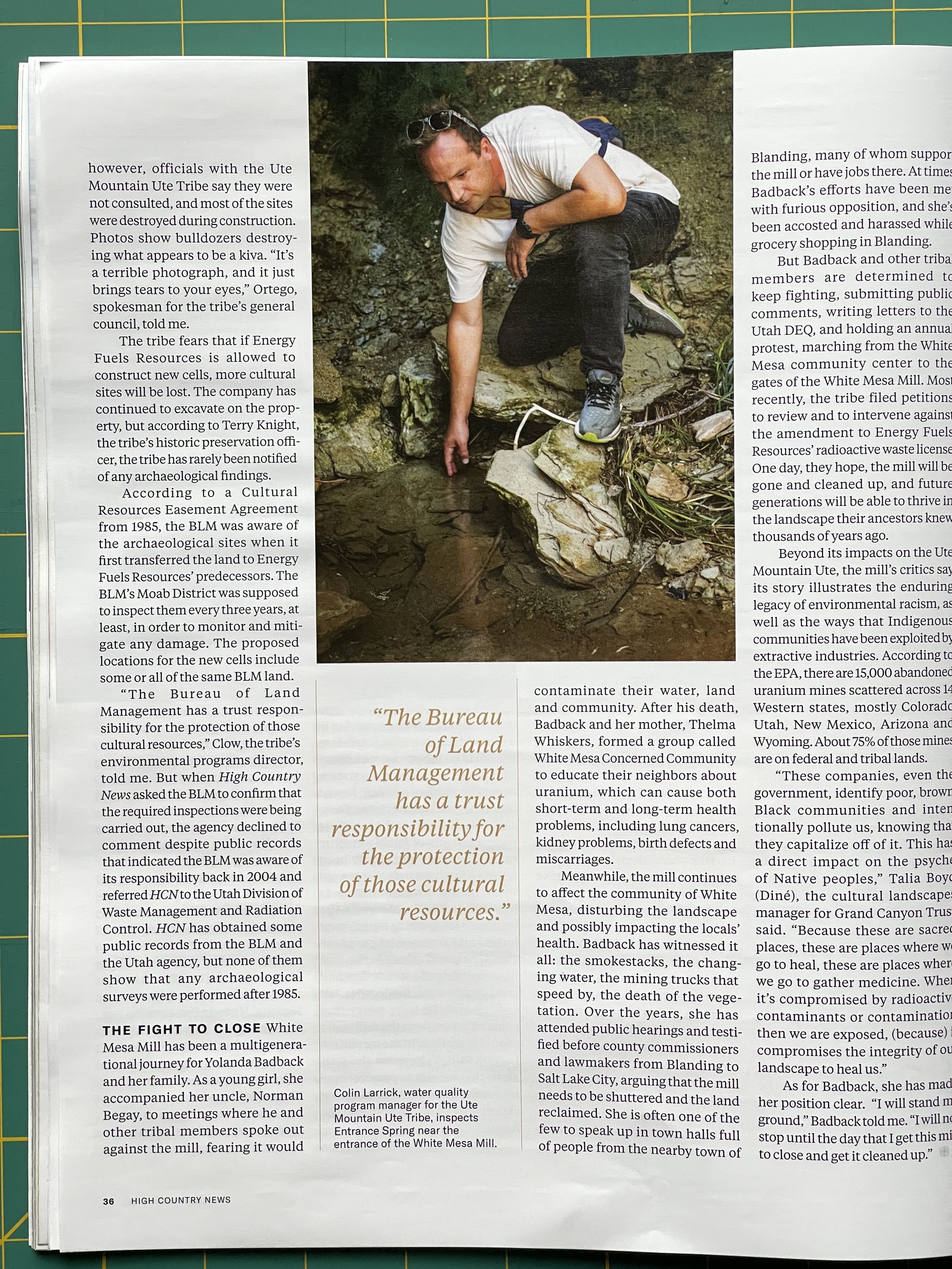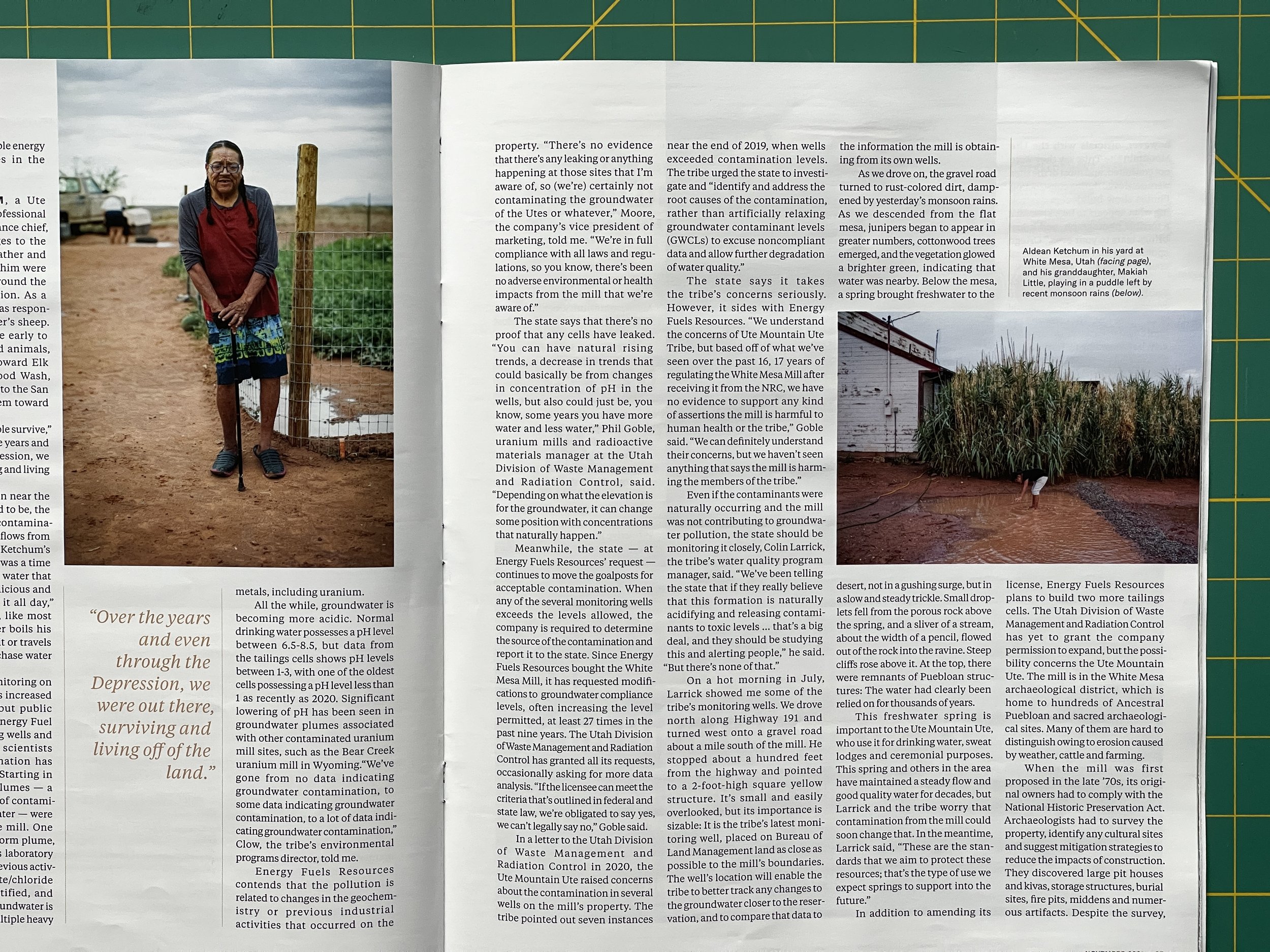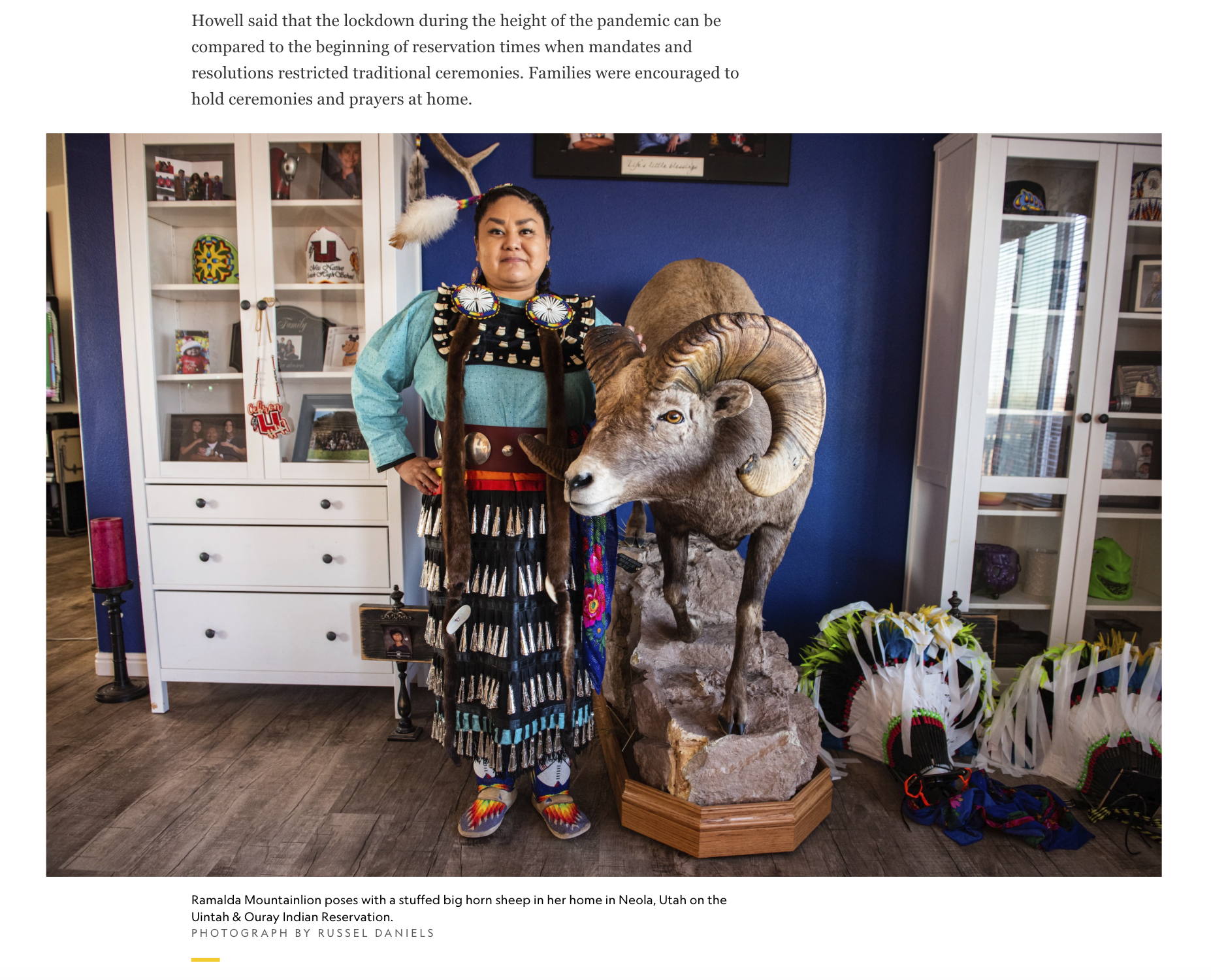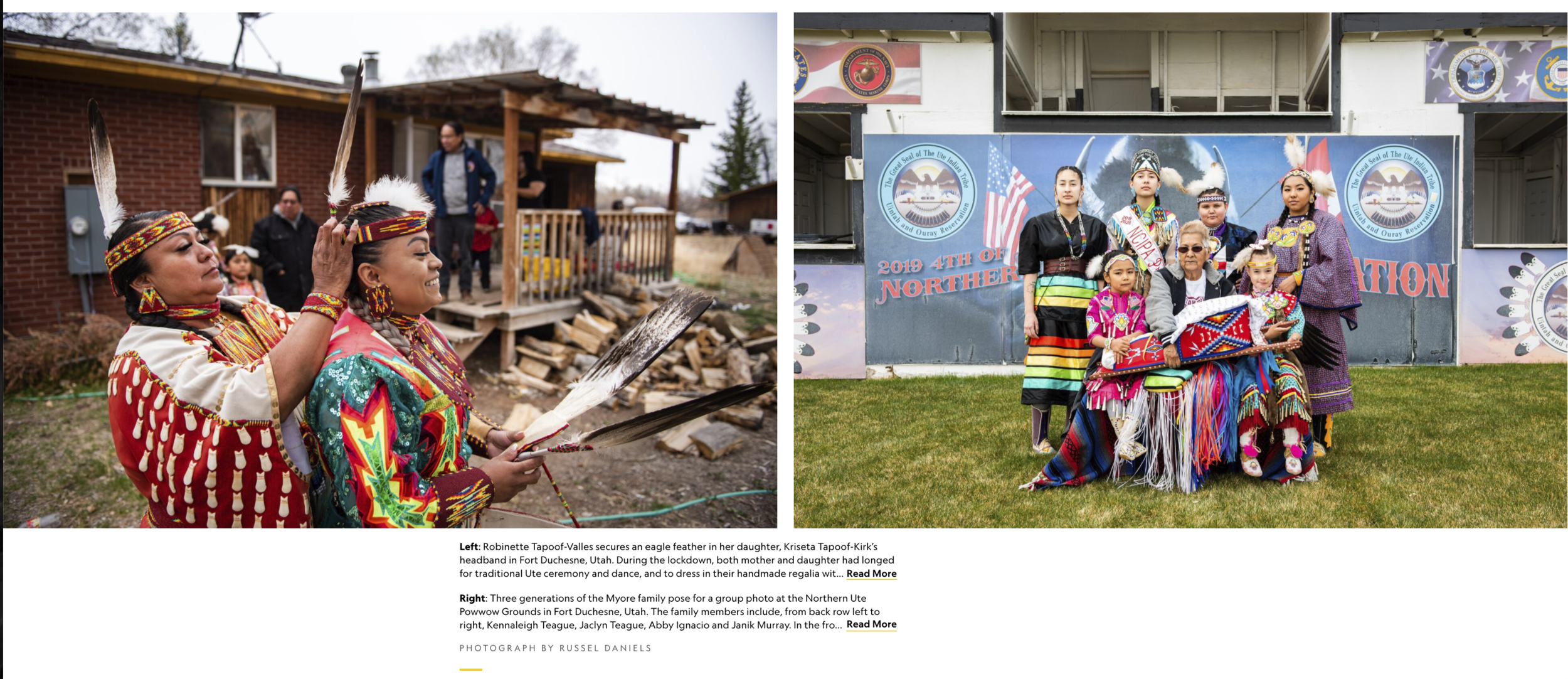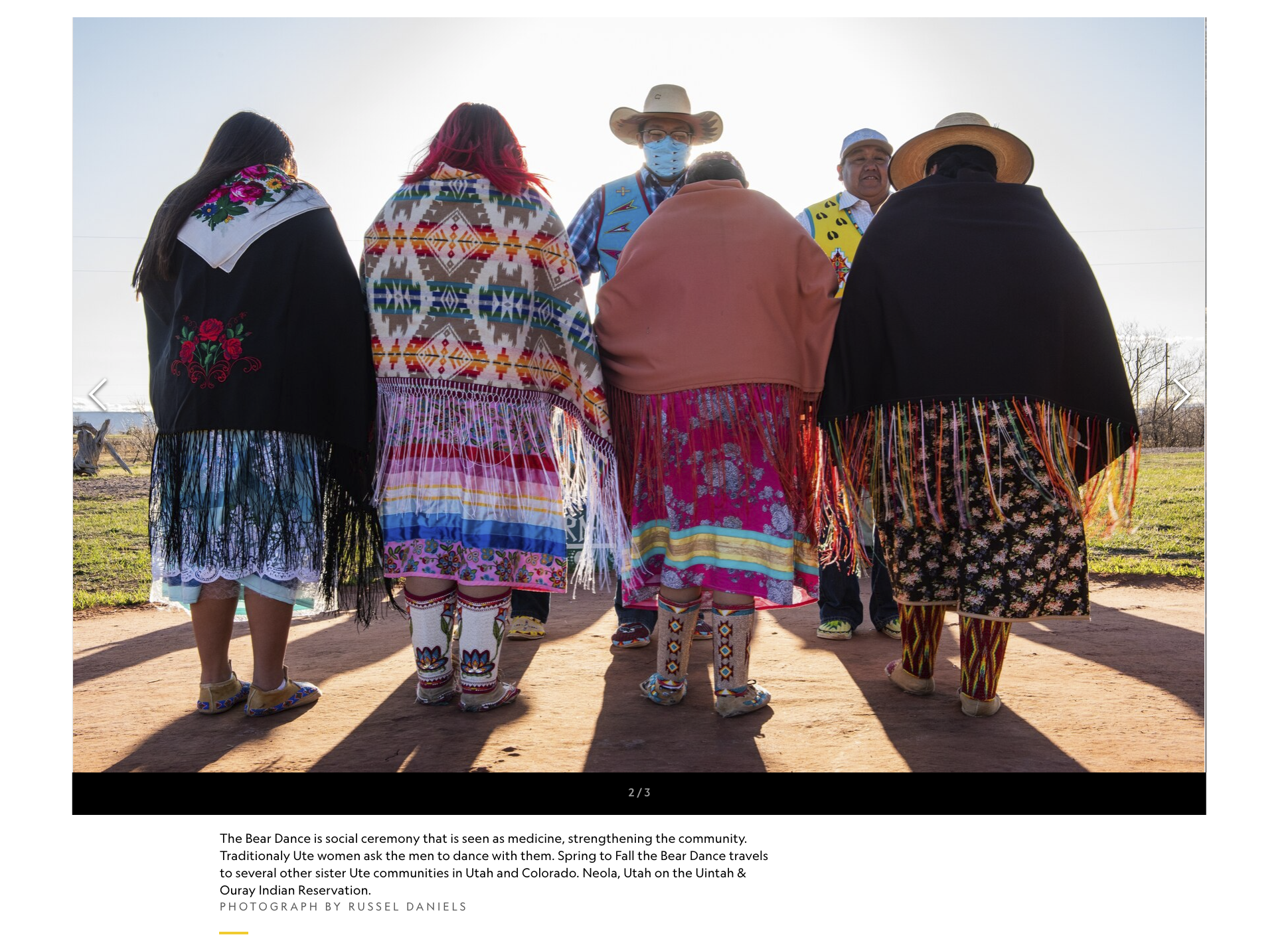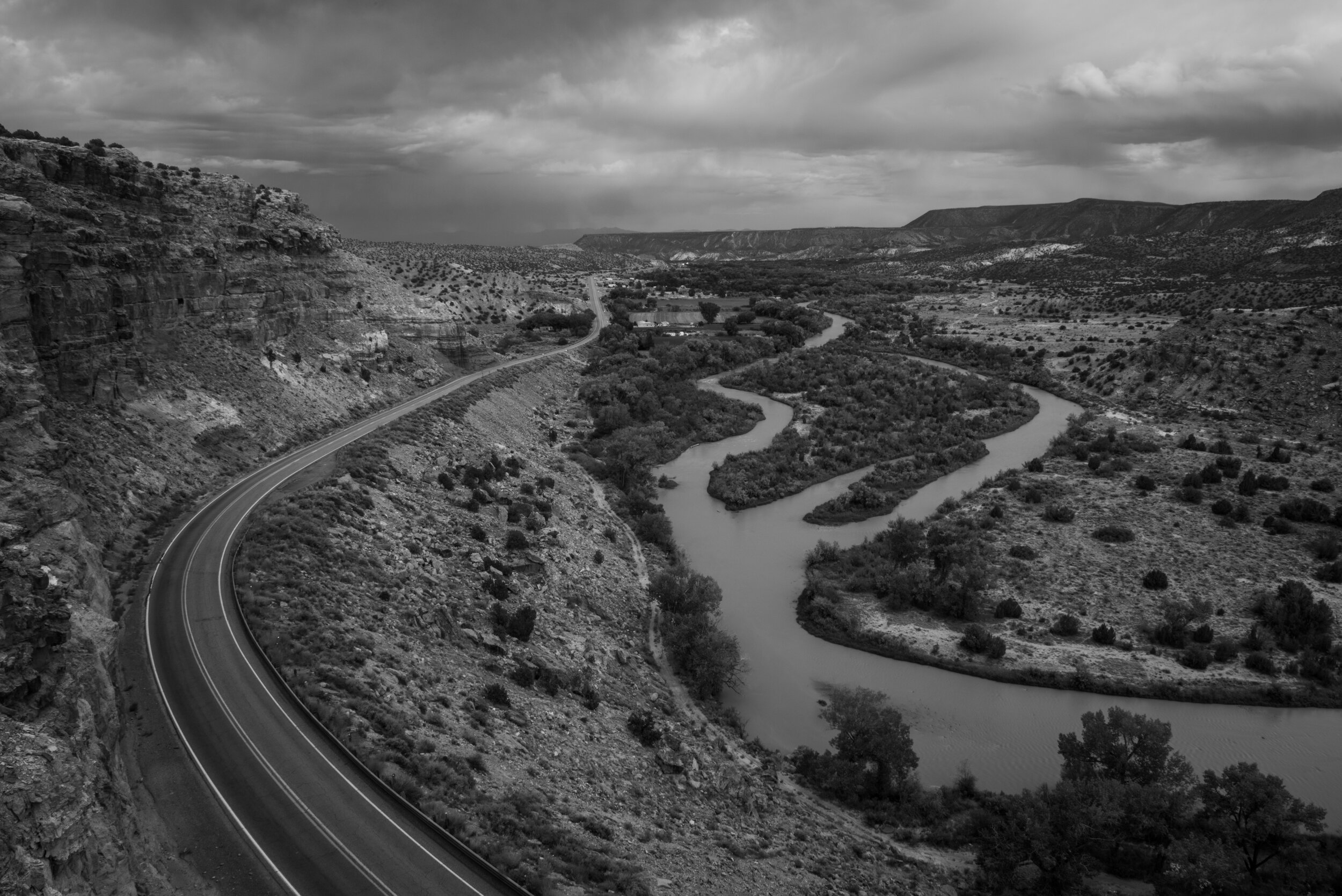Russel: It was an absolute honor to give an Artist Talk at the Utah Museum of Fine Arts. I spoke about how my ancestral connections to Utah and the Southwest have help create the visual storyteller and artist I am today — then went into a conversation with Emily Lawhead, UMFA associate curator – January 17 at 6PM at the UMFA auditorium.
It’s a dream come true to have my work supported by my hometown fine art museum. Thanks to these incredible ladies – (left to right) Scotti Hill, Nancy Rivera, and Emily Lawhead – for your continuous care and support.
Event photography by Adelaide Haley.
Russel: I spent the better part of last year visiting and documenting tribal wildlife-recovery efforts for this Sierra Magazine photo essay. I travelled to Maine, where the Penobscot Nation is reintroducing Atlantic salmon; to Minnesota to see the Fond du Lac Band's gray wolf program; and to the far northern reaches of California, where the Yurok Tribe is raising California condors. Lindsey Botts wrote the story AND made everything come together. I met some incredible people and witnessed some deep-rooted dedication. See the photo essay at the link in my bio.
From Lindsey’s article: Across the United States, tribal nations play a vital—if often unheralded—role in species conservation. In the Lower 48, tribes manage roughly 45 million acres, an area about the size of North Dakota. This relatively undeveloped land combined with Indigenous people's traditional ecological knowledge of wildlife populations mean that tribes are uniquely positioned to help recover threatened and endangered species.
Sierra Magazine link here.
From Russel: I am excited to announce that two of my photographs have been acquired by the Utah Museum of Fine Art for their permanent collection. One of the photos – Fracking in the Uinta Basin, Utah – is included in the exciting new UMFA exhibition — Shaping Landscape: 100 Years of Photography in Utah — curated by Emily Lawhead.
Exhibition statement: The history of photography in the United States is deeply tied to the American West. From 19th century survey expeditions to 21st century environmental movements, Western landscapes are activated as some of the most prominent subjects in American photographic history. This exhibition traces 150 years of Utah landscape photography from the UMFA’s expansive collection. The artworks offer insight into how generations of photographers have used this technology to construct an image of Utah. They also confront humanity’s impact on this land since the 1870s – the railroads, highways, mines, and other forms of infrastructure that puncture the “natural” landscape and shape our perception of this place.
I want to thank the UMFA, Emily Lawhead, and Adelaide Haley for the support and interest in my work — It is a true honor to have my work in the collection. Both of my acquired photos are recent aerial landscapes of mineral extraction in Utah that I made on assignment for both Mother Jones and High Country News. A big thanks to my photo editors and confidants for trusting my vision: Bear Guerra, @jessicadougs Mark Murrmann & Stephanie Mencimer.
Much of this work generously funded by @waterdesk including aerial support by Light Hawk & Eco Flight.
It is truly incredible to see my work exhibited next to Edward Burtynsky, William Henry Jackson, Olive Garrison, John Telford, Ernesto Pujol and more.
The exhibition runs from September 16, 2023 to March 3, 2024
photo of me by Goldin @niteswimmers
From Russel: “I’m so thrilled about this! Emergence Magazine Volume 4 just published and it’s really beautiful. Included is my photo essay illustrating Chelsea Steinauer-Scudder’s masterful, beautiful, heart breaking, soul-shaking essay – Speaking Wind - Words”
The online feature includes an audio reading: here
You can pick up the Volume 4 print magazine: here
Recent work: In general folks around here don’t talk about the Uinta Basin, most people don’t even know where it’s located let alone it’s century long boom n bust oil and gas history — @motherjonesmag writer Stephanie Mencimer @smencimer and I spent a week poking around in the middle of Utah’s “waste land,” a toxic hydrocarbon landscape: hundreds of miles of oil jacks, gas fracking sites, evaporative wastewater ponds, oil shale mines, and Gilsonite mining scars; we spent 2 nights on the White River floating through castle rock country, cottonwood gallery’s, herds of sheep and ended up in a volatile place called Mordor which we also saw from 1200’ above when we chartered a Cessna to show us what most people don’t see, thousands of oil and gas sites and dozens of wastewater pools spread through out the basin and along side the White River.
The White River is a tributary to the Green River which is the main tributary to the Colorado River.
––––––––––––––––––––––––––
The risk of a significant spill in a critical Colorado River tributary in Utah isn’t a hypothetical. As John Weisheit told a local paper in 2014, “Anyone who depends upon the Colorado River should look upstream to Utah… It’s not ‘if,’ but ‘when.’”
––––––––––––––––––––––––––
A stellar photo edit by Mark Murrmann / Mother Jones visual team.
Thanks to John & Suzette Weisheit, Rica Fulton, Cody Pery, and Ben Kraushaar for the unforgettable river trip.
Thanks to @lighthawk for the aerial support.
––––––––––––––––––––––––––
“It’s a special kind of suicide to be continuing to use federal public lands to beget decades more of fossil fuel expansion at the same time we’re looking at the demise of the [Colorado] river just from the greenhouse emissions,” McKinnon says.
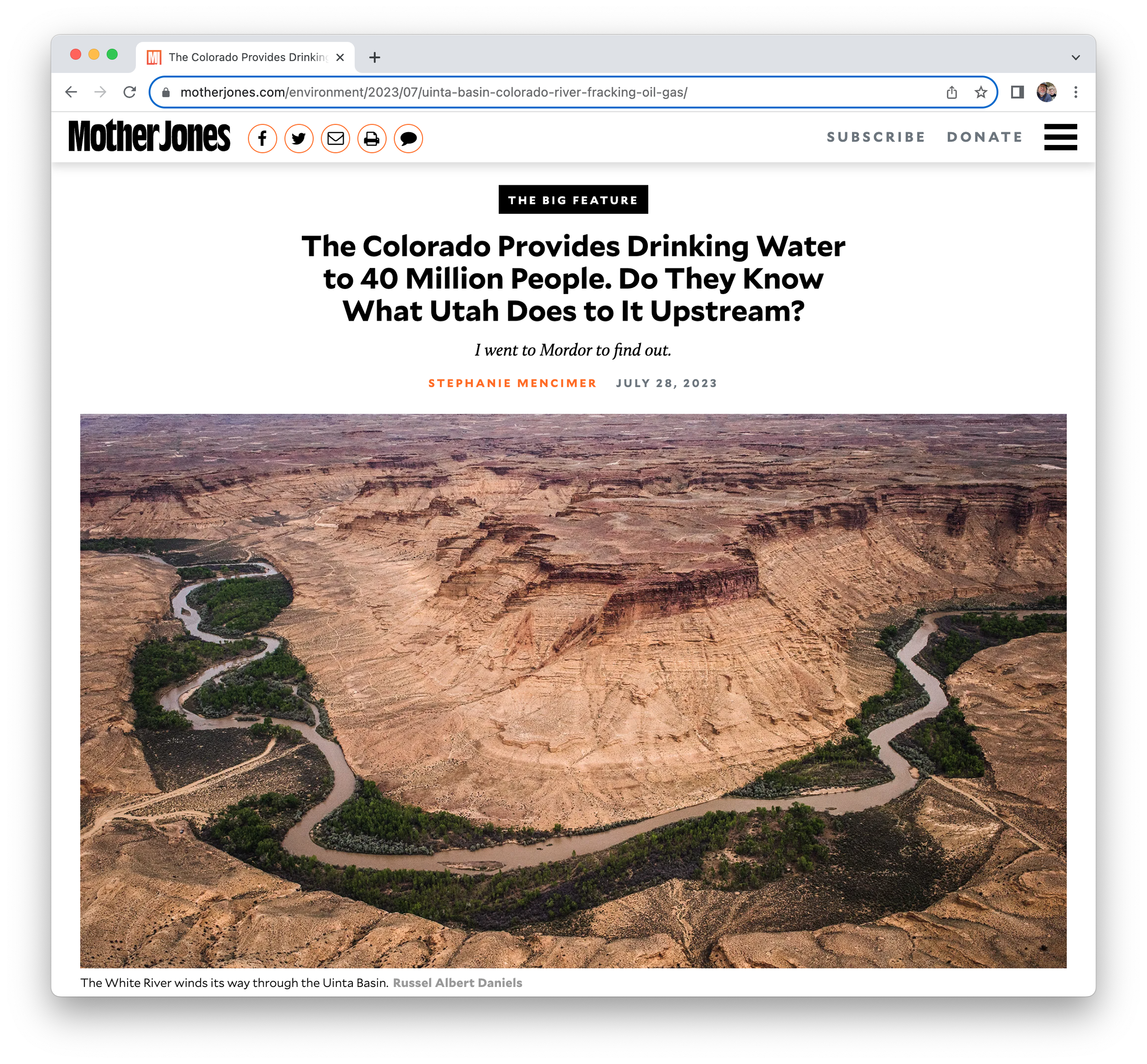
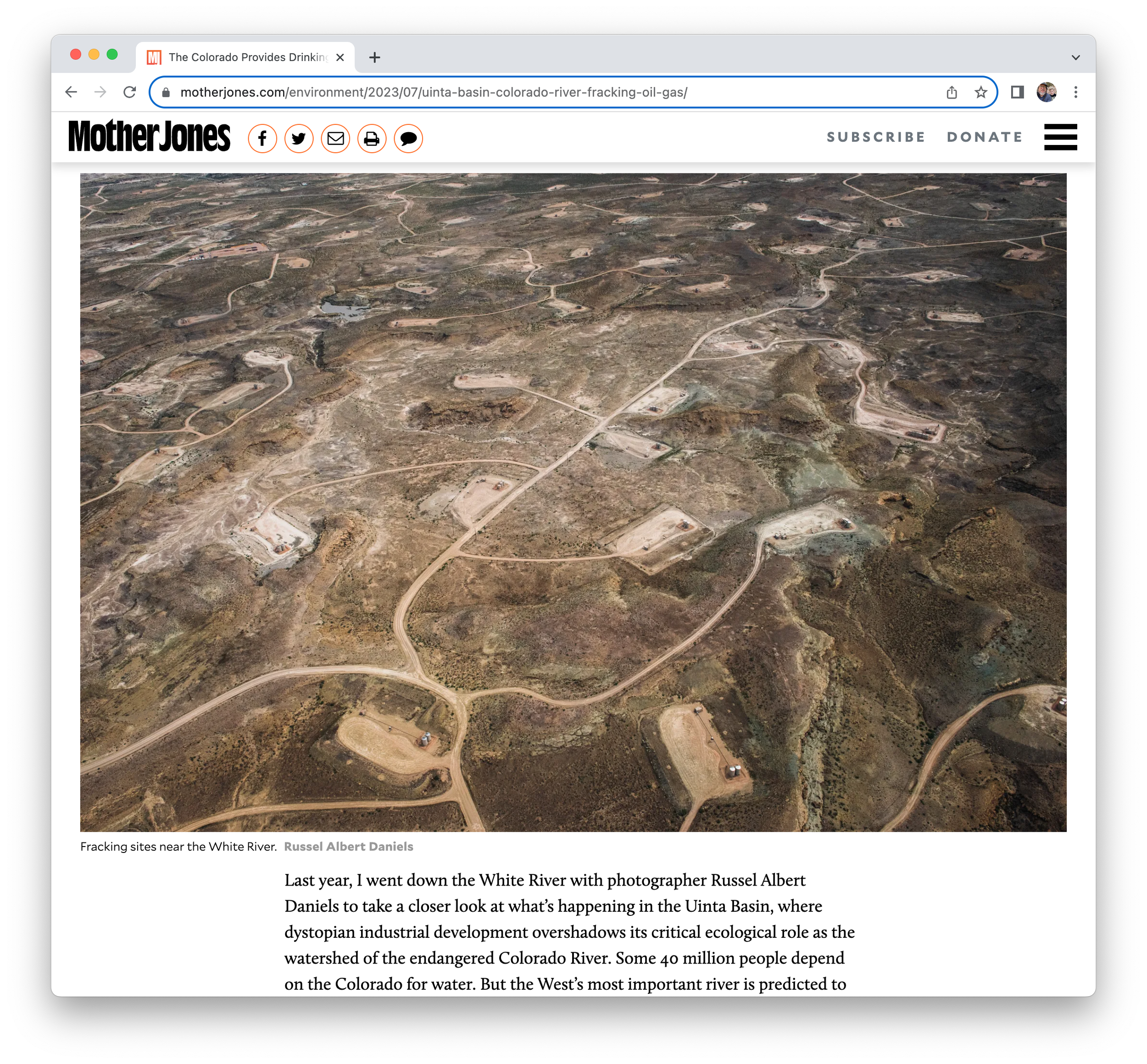
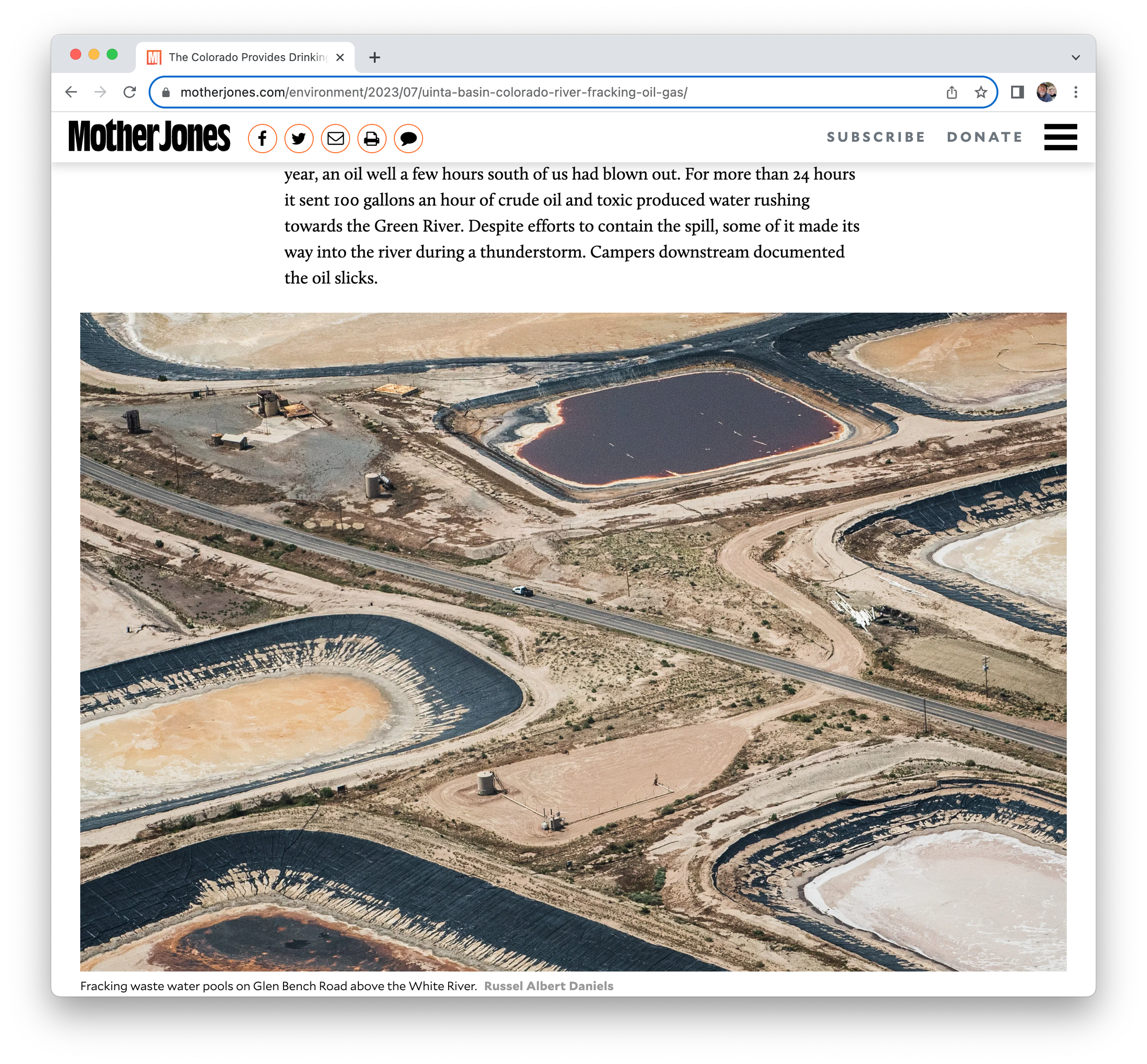
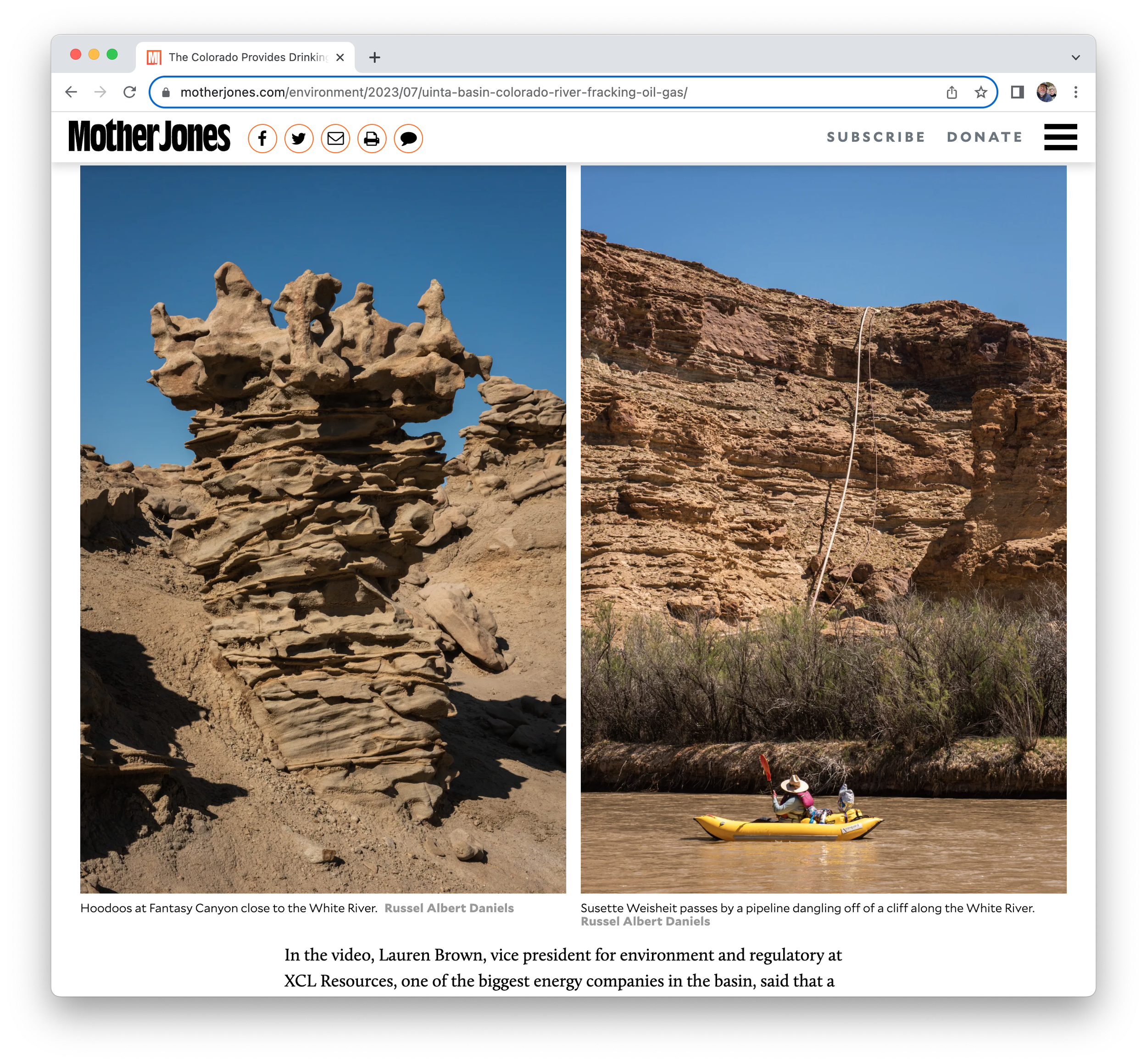
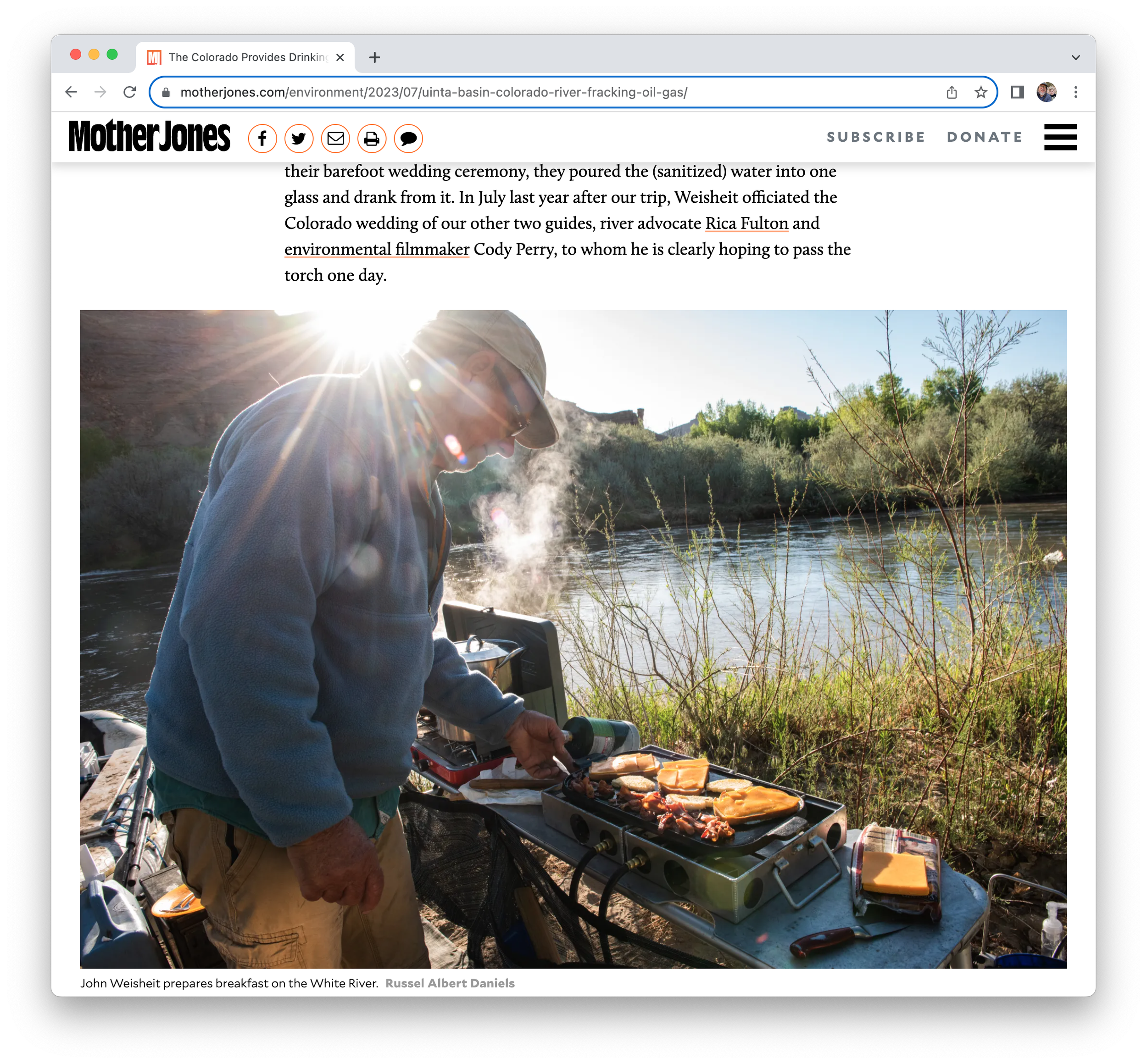

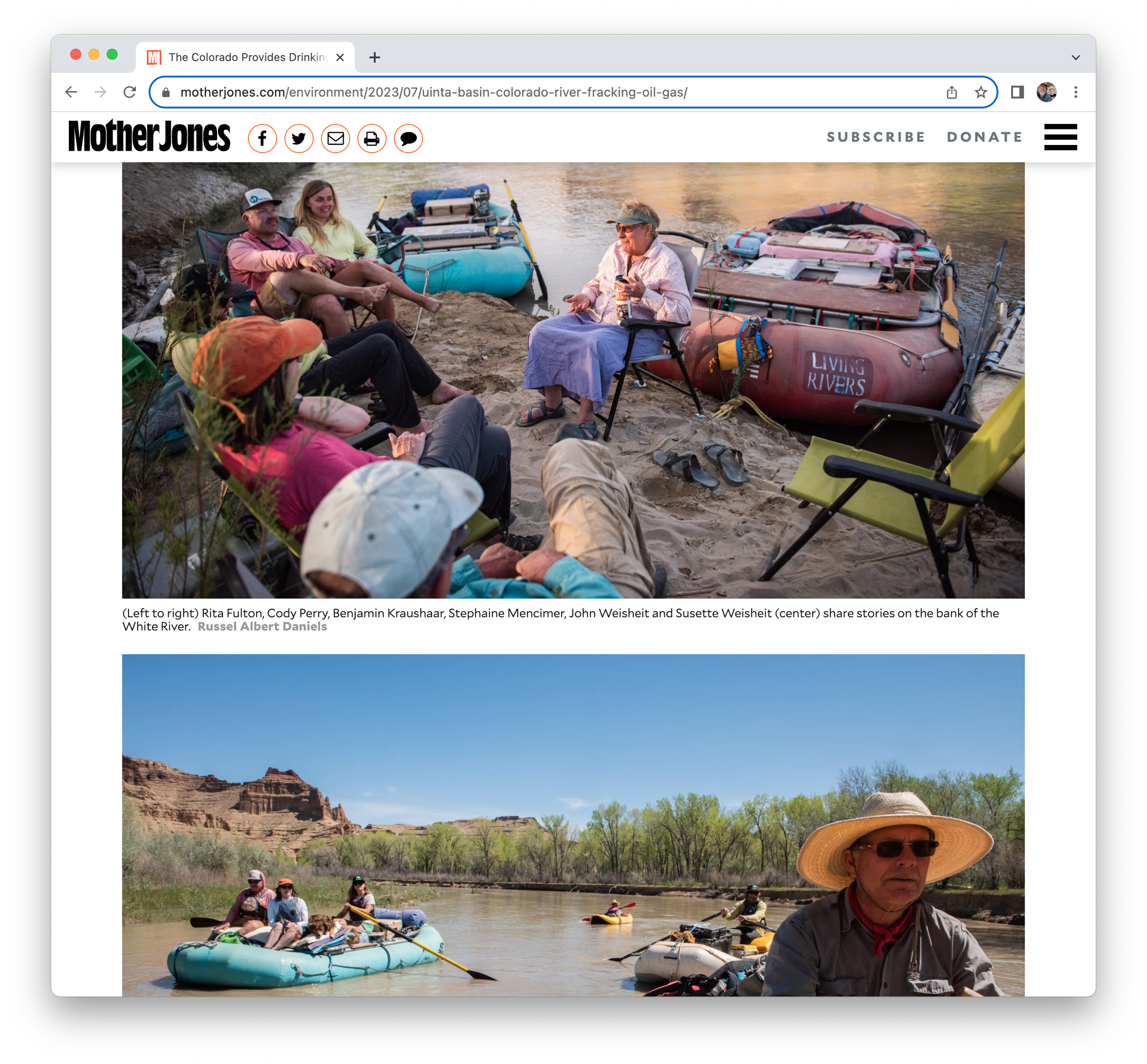


Russel contributed to Mary Hudetz / ProPublica’s incredible Chaco Canyon repatriation story. Published July 2023.
“There’s somehow this perspective that this kind of research will enhance us or benefit us,” said Theresa Pasqual, director of the historic preservation office for the Pueblo of Acoma. “What it does is it bolsters their careers; it bolsters their professional, academic standing. Let’s be real about it.”
———–
The Repatriation Project by ProPublica is an colossal investigative dive into the unfulfilled promises of the Native American Graves Protection and Repatriation Act.
America’s institutions maintain control of more than a hundred thousand remains of Native Americans as well as sacred items. A federal law, the Native American Graves Protection and Repatriation Act, was meant to help return them, but decades after its 1990 passage, many tribes are still waiting.

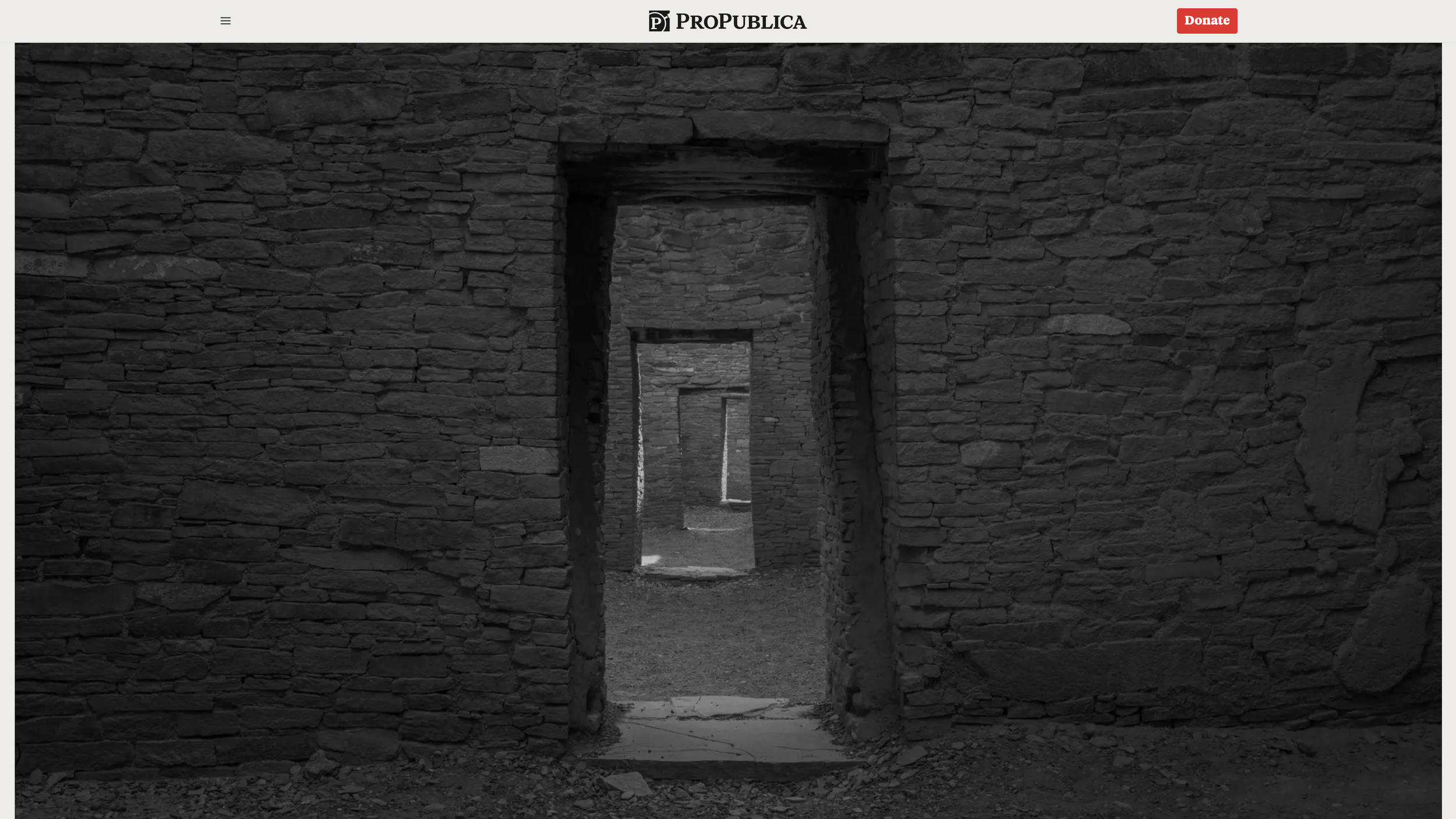
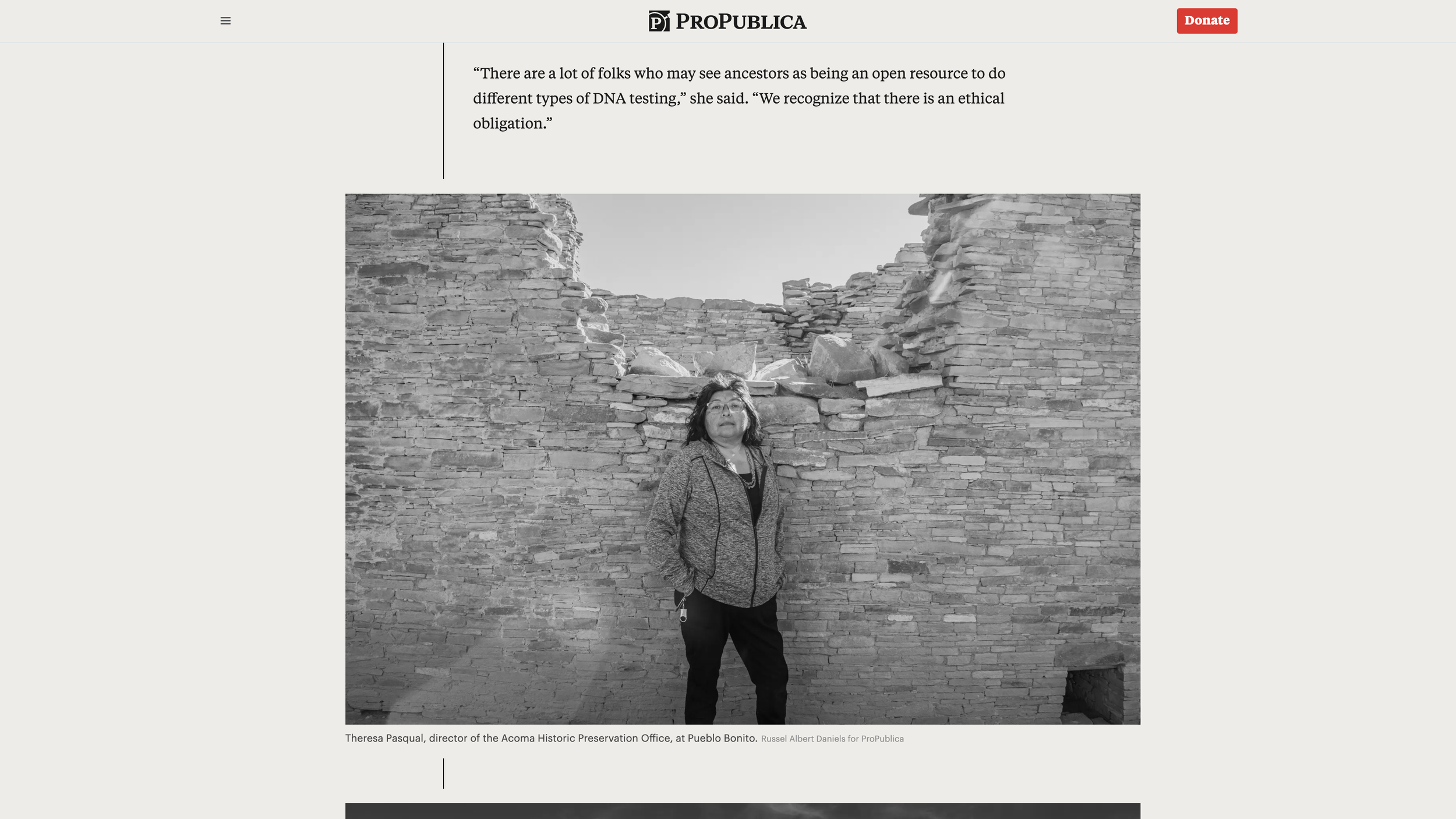

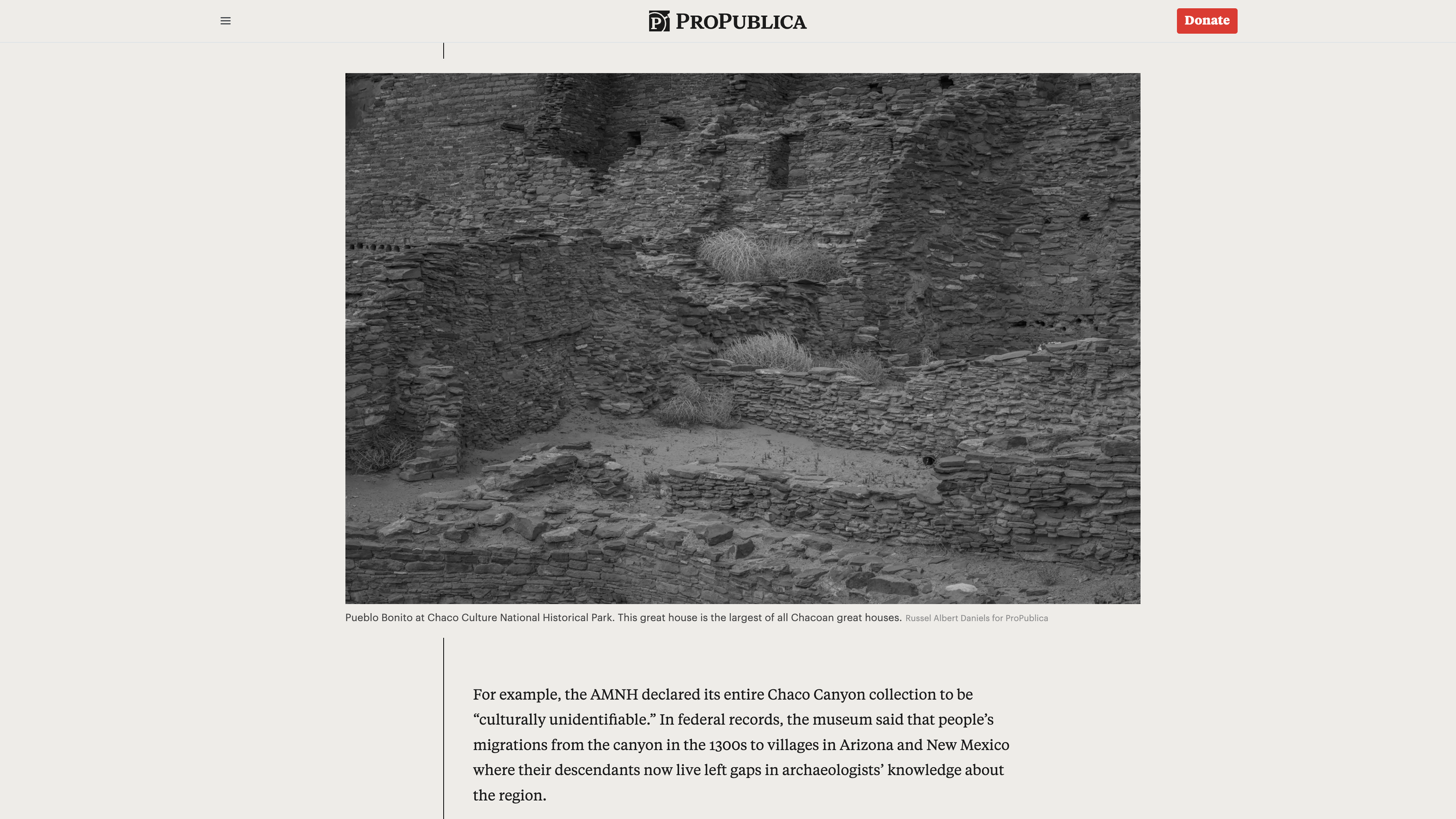
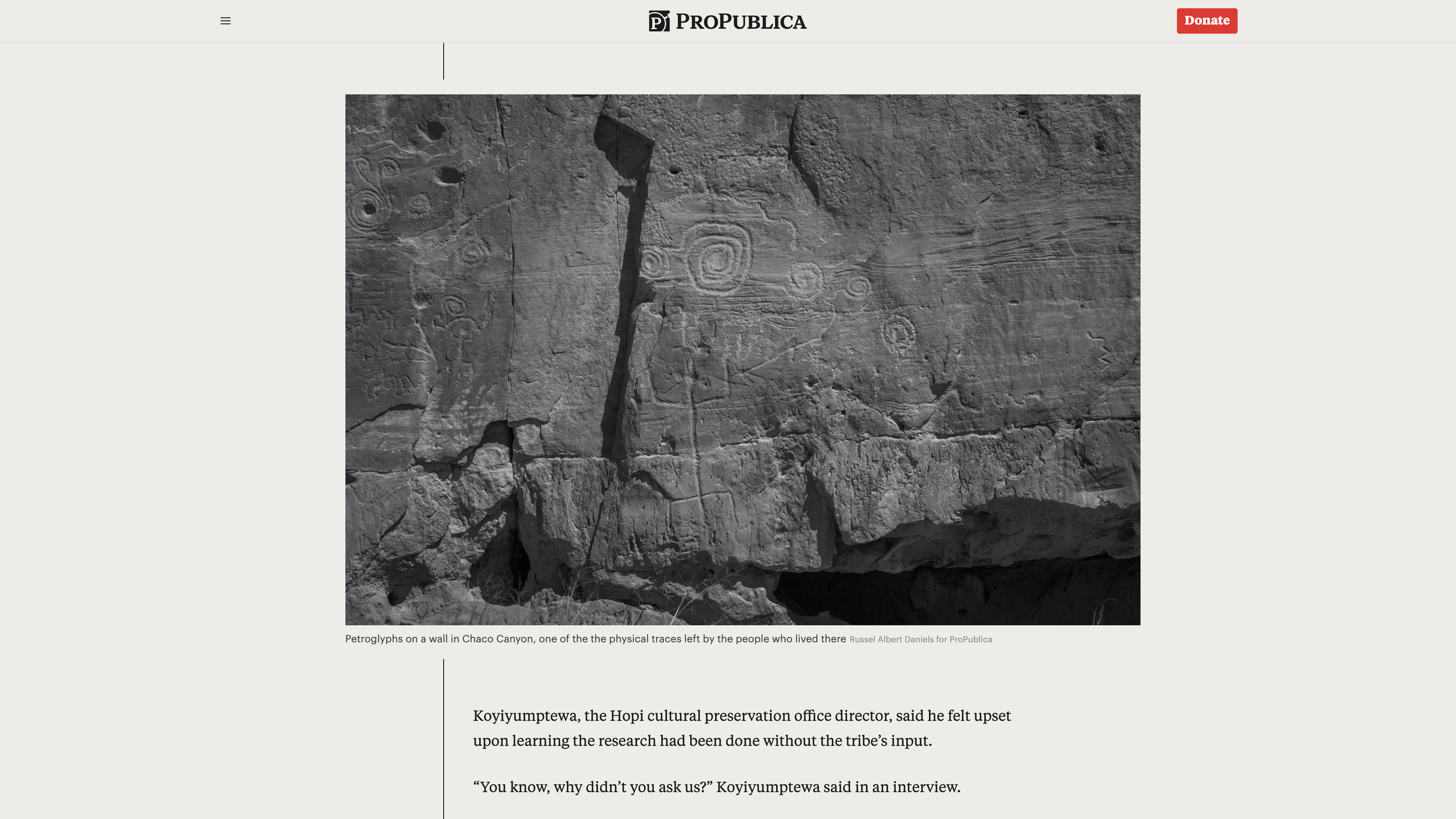
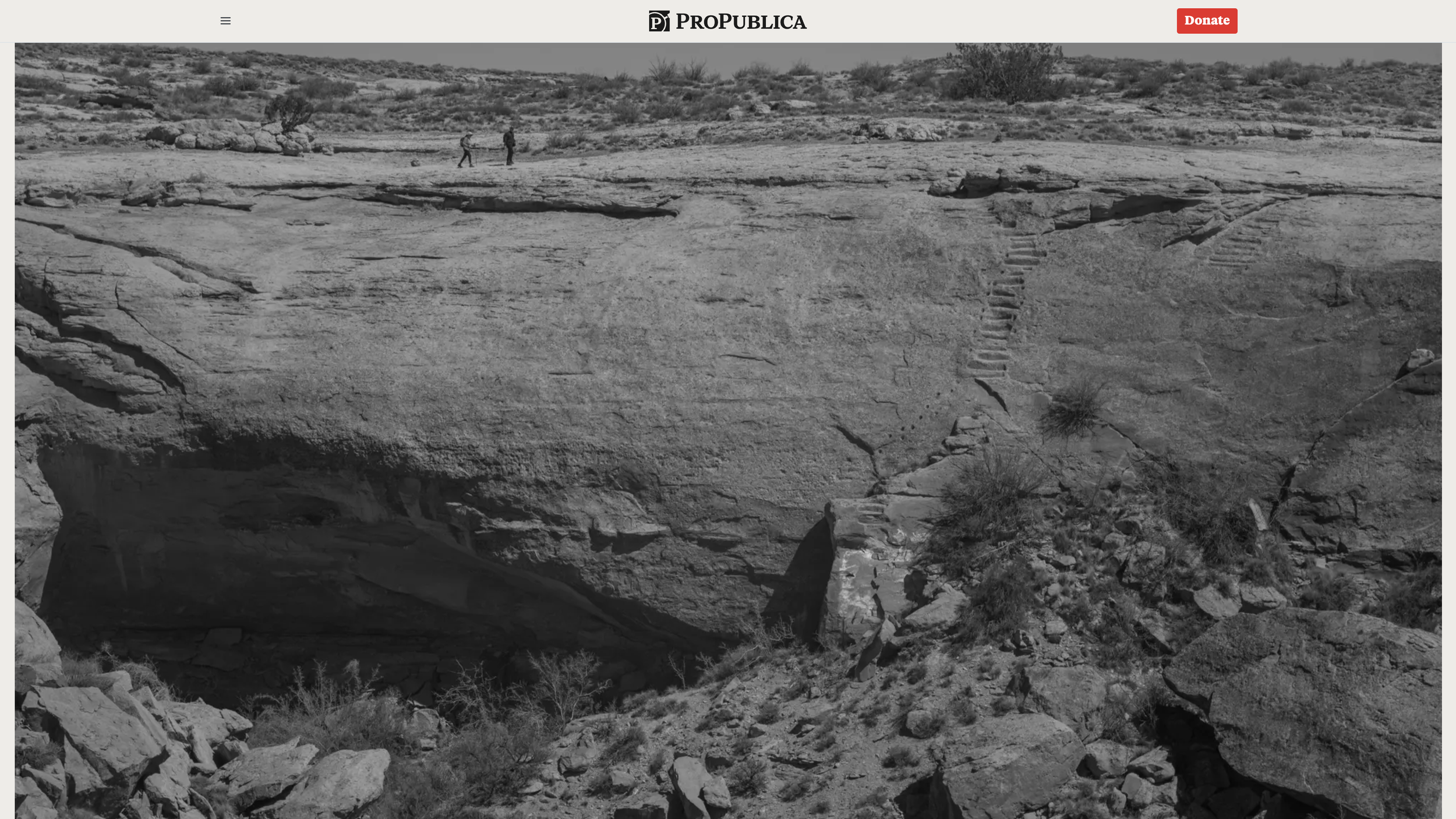
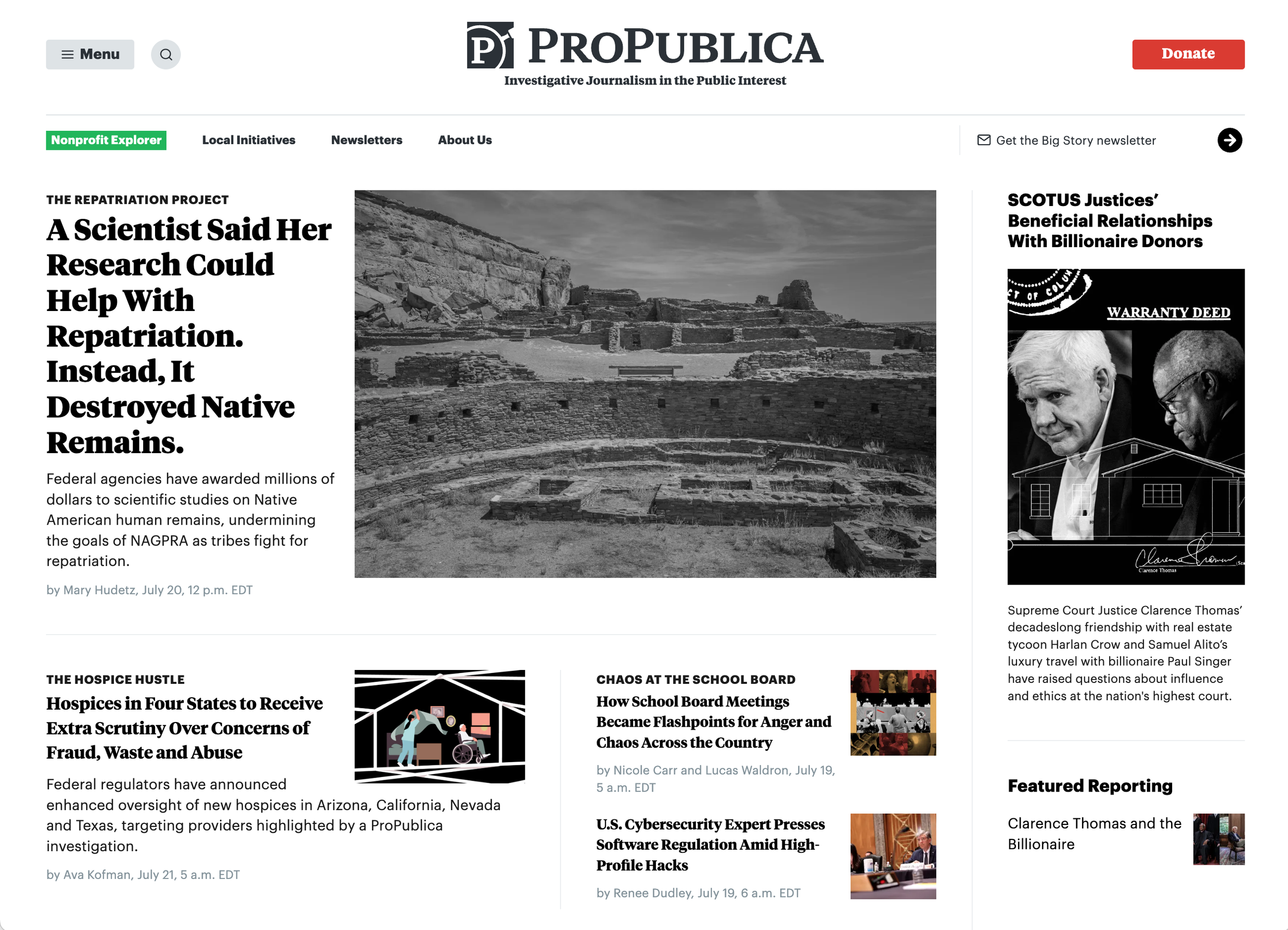
The next 3 posts are web clips from Russel’s photography assignment in collaboration with High Country New & ProPublica. Read this blockbuster investigative series –Waiting for Water: Tribes’ Fight for a Promised Resource – HCN here & ProPublica here. Published July 2023.
-The U.S. Supreme Court ruled in 1908 that tribes with reservations have a right to water. But ProPublica and High Country News found that in the drought-stricken Colorado River Basin they face unique obstacles: a state that aggressively opposes them, a process that sometimes doesn’t provide infrastructure to access water and growing competition from other users.
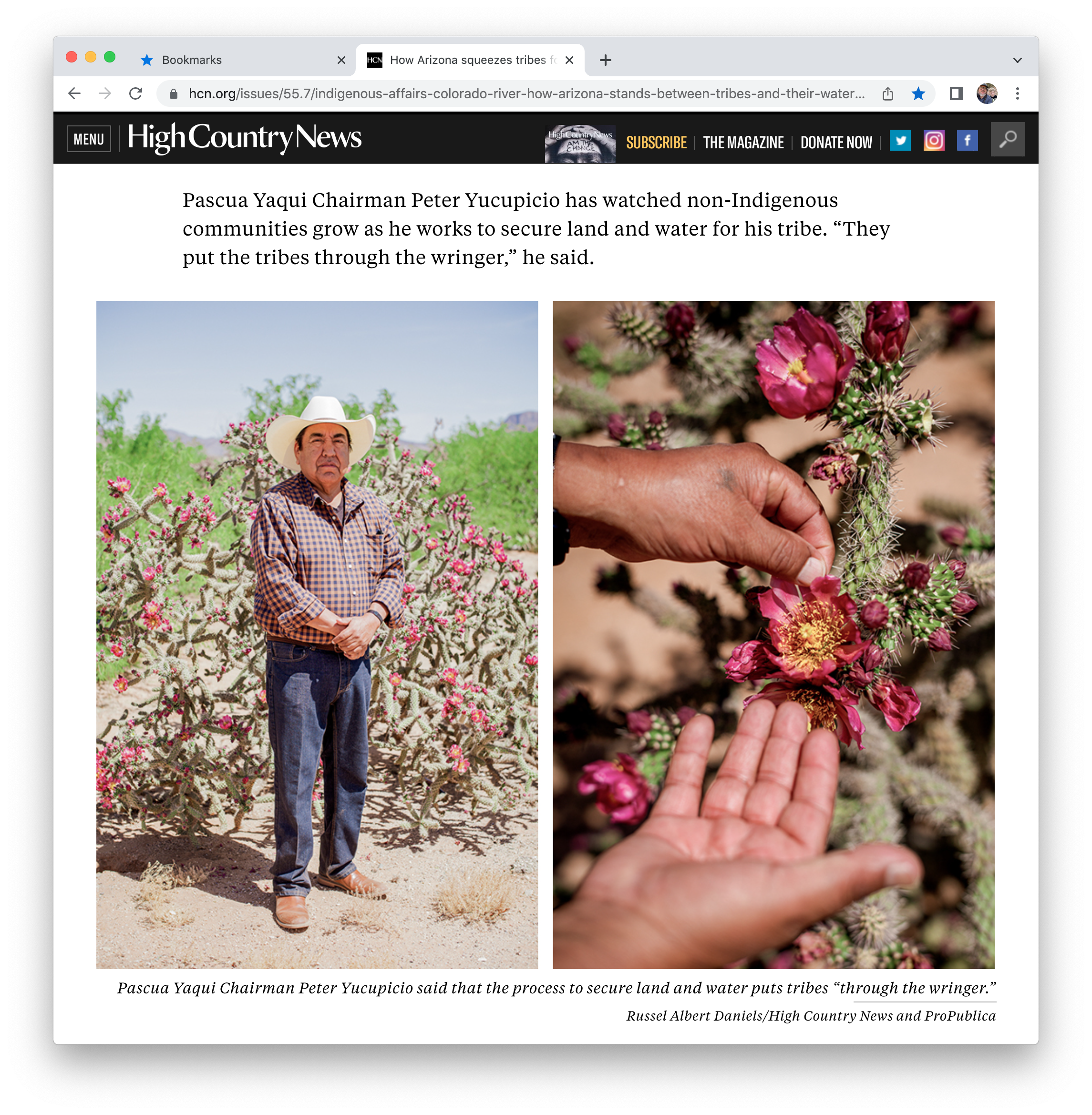

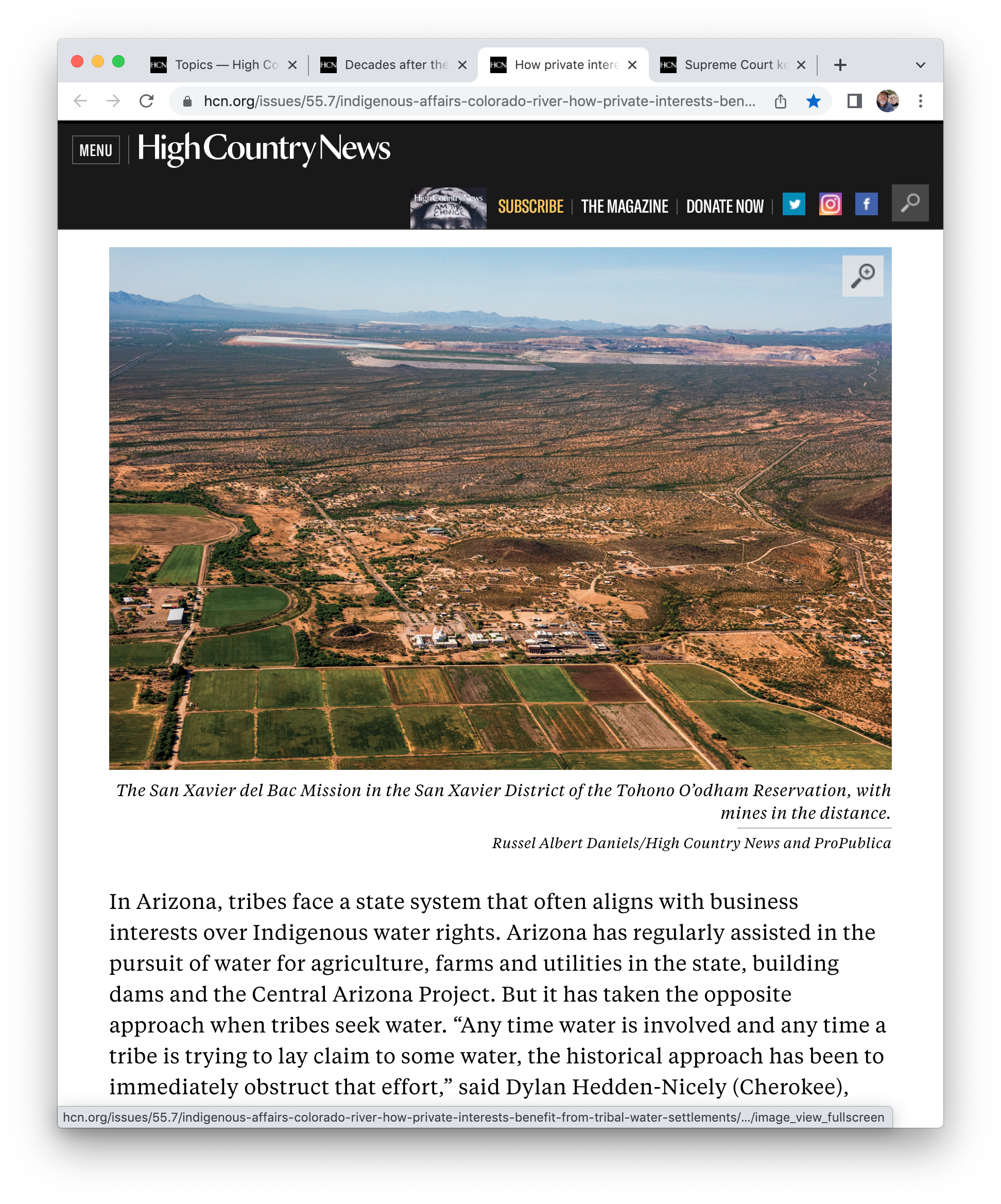
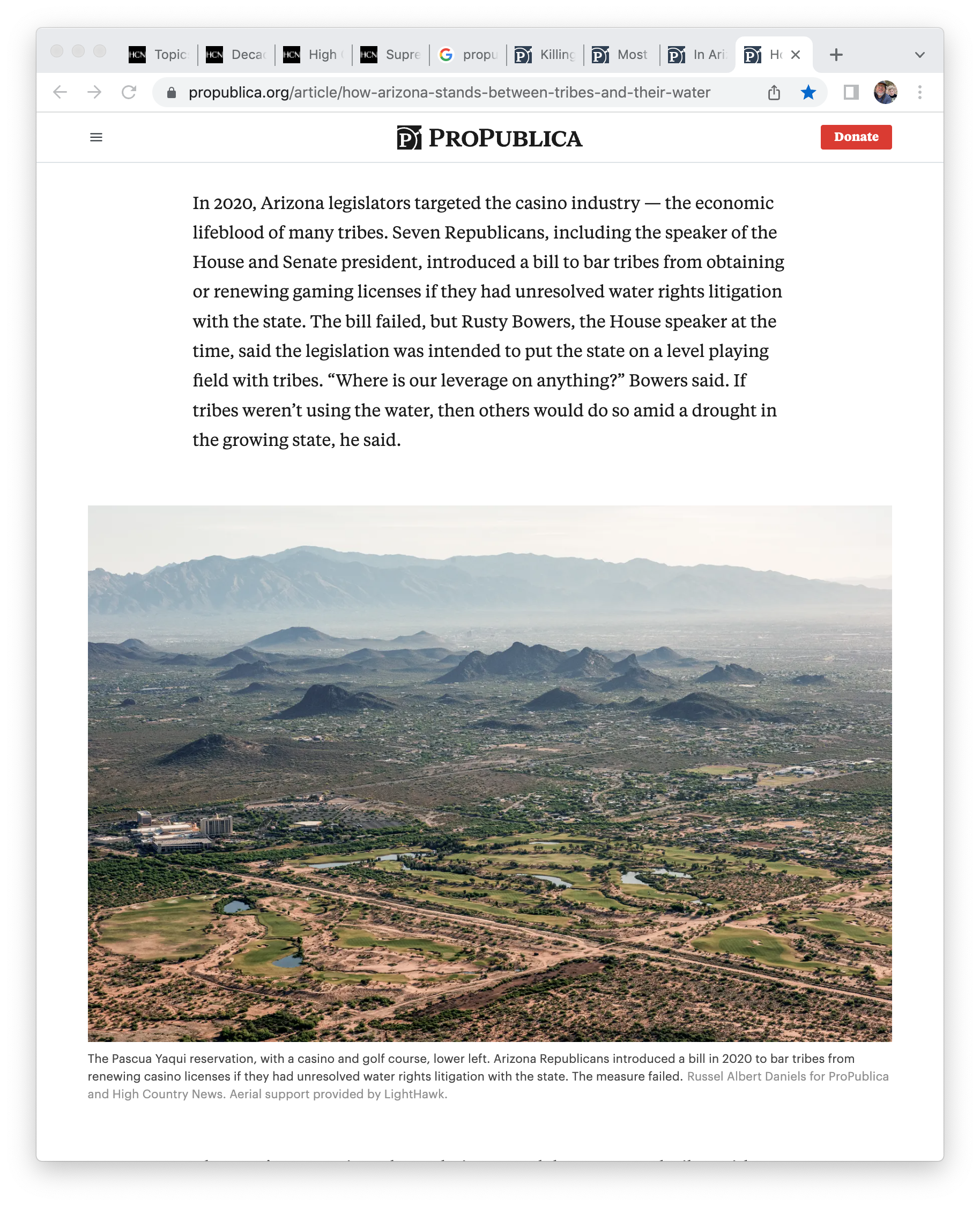
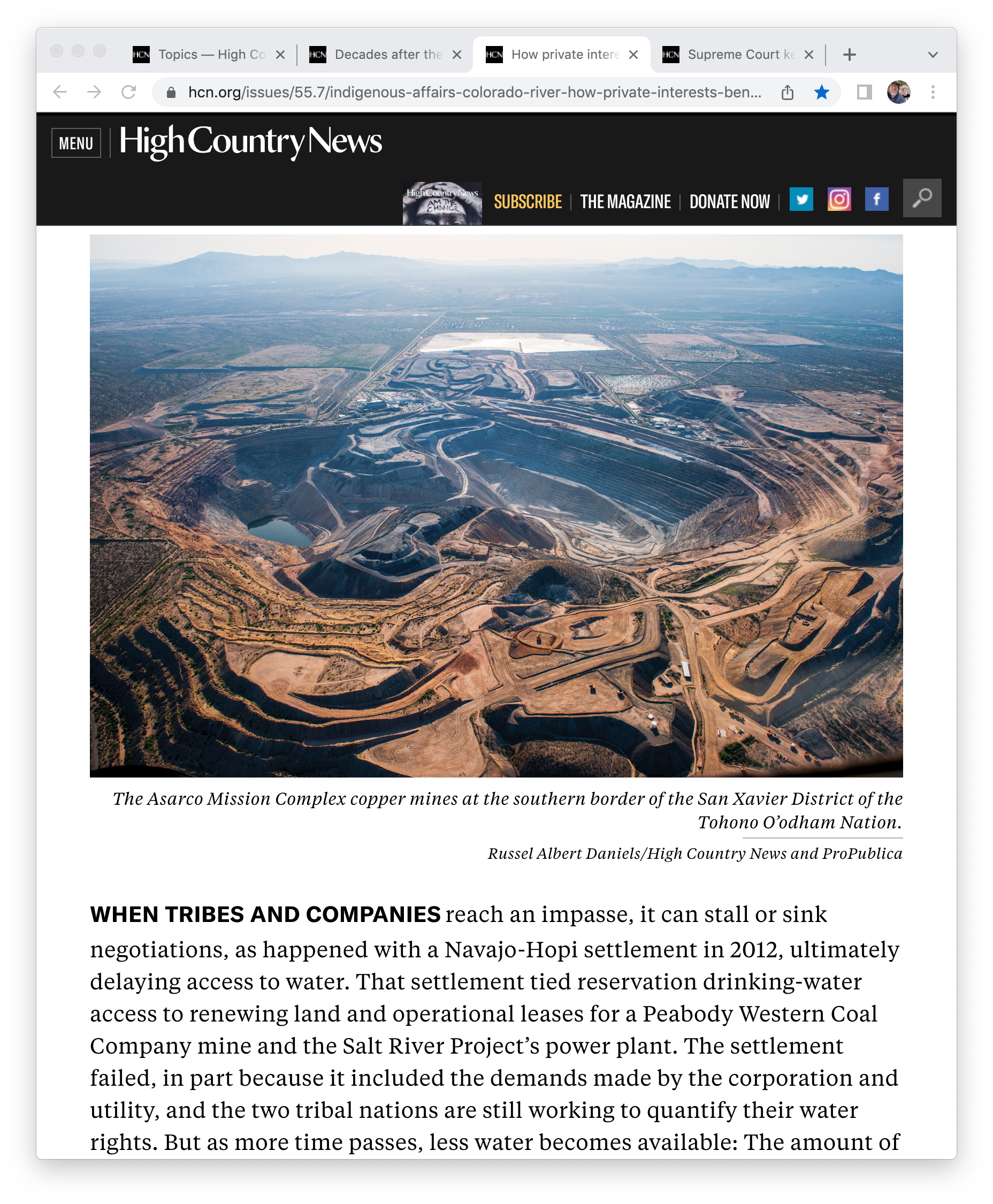
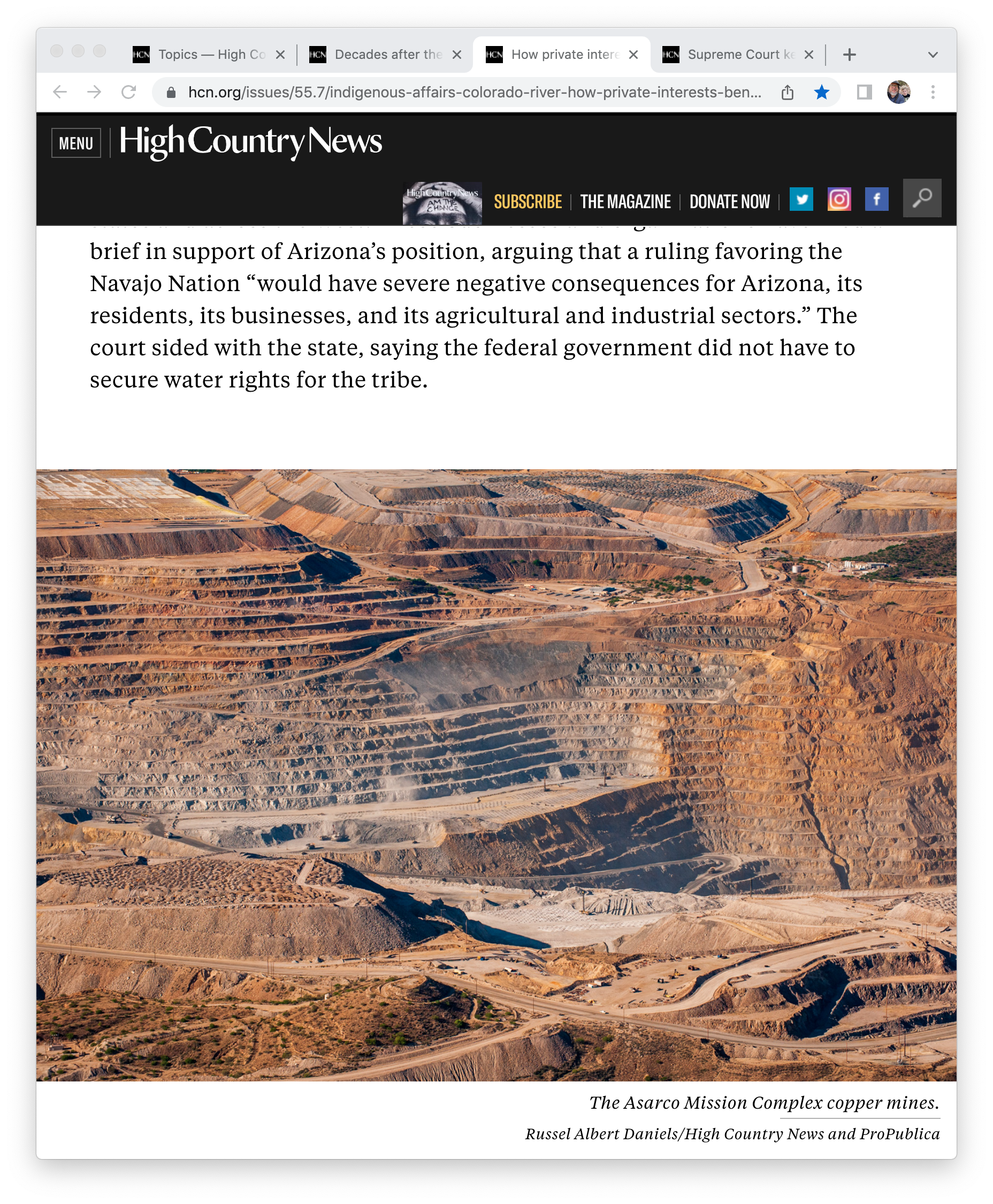
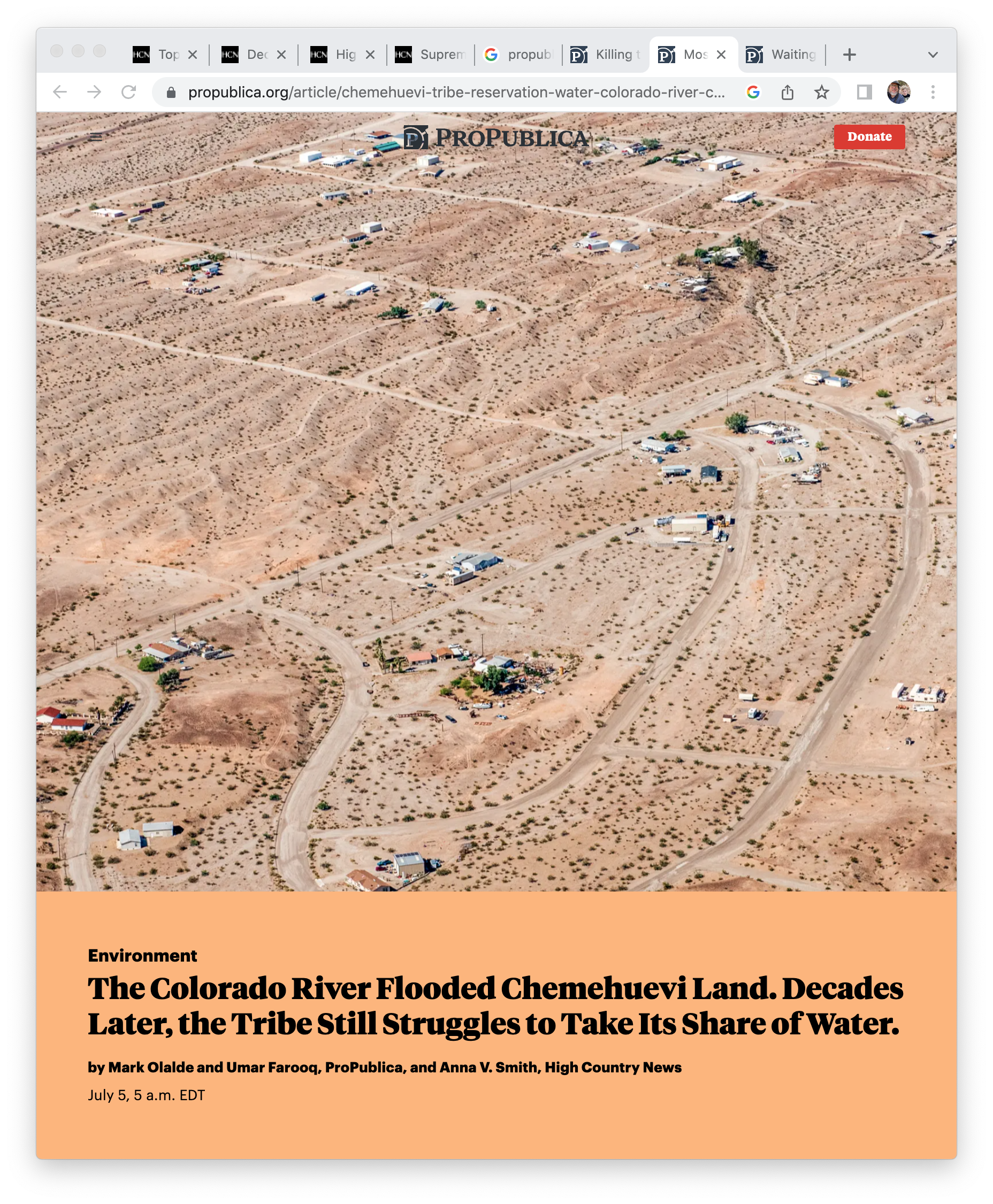

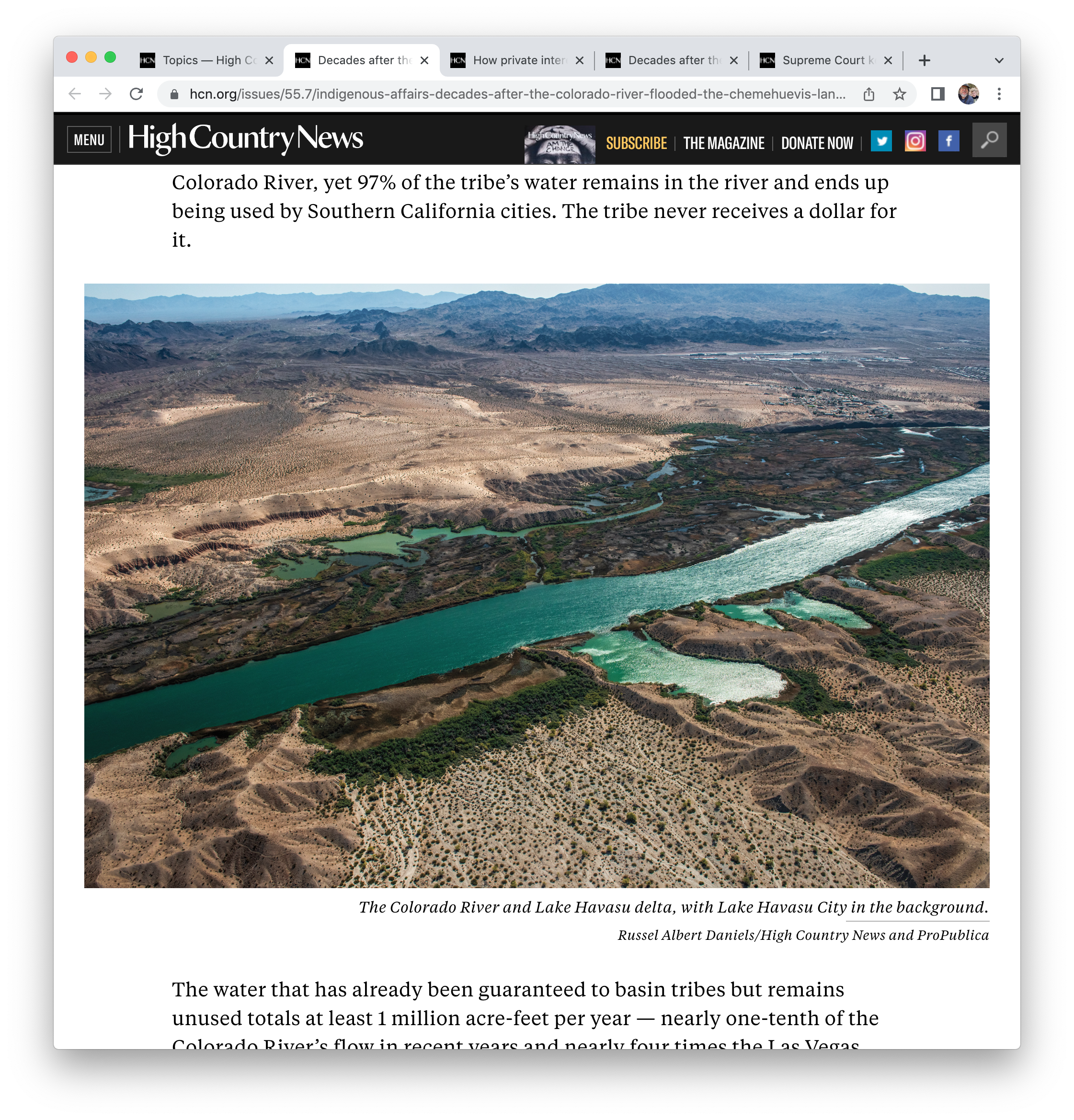
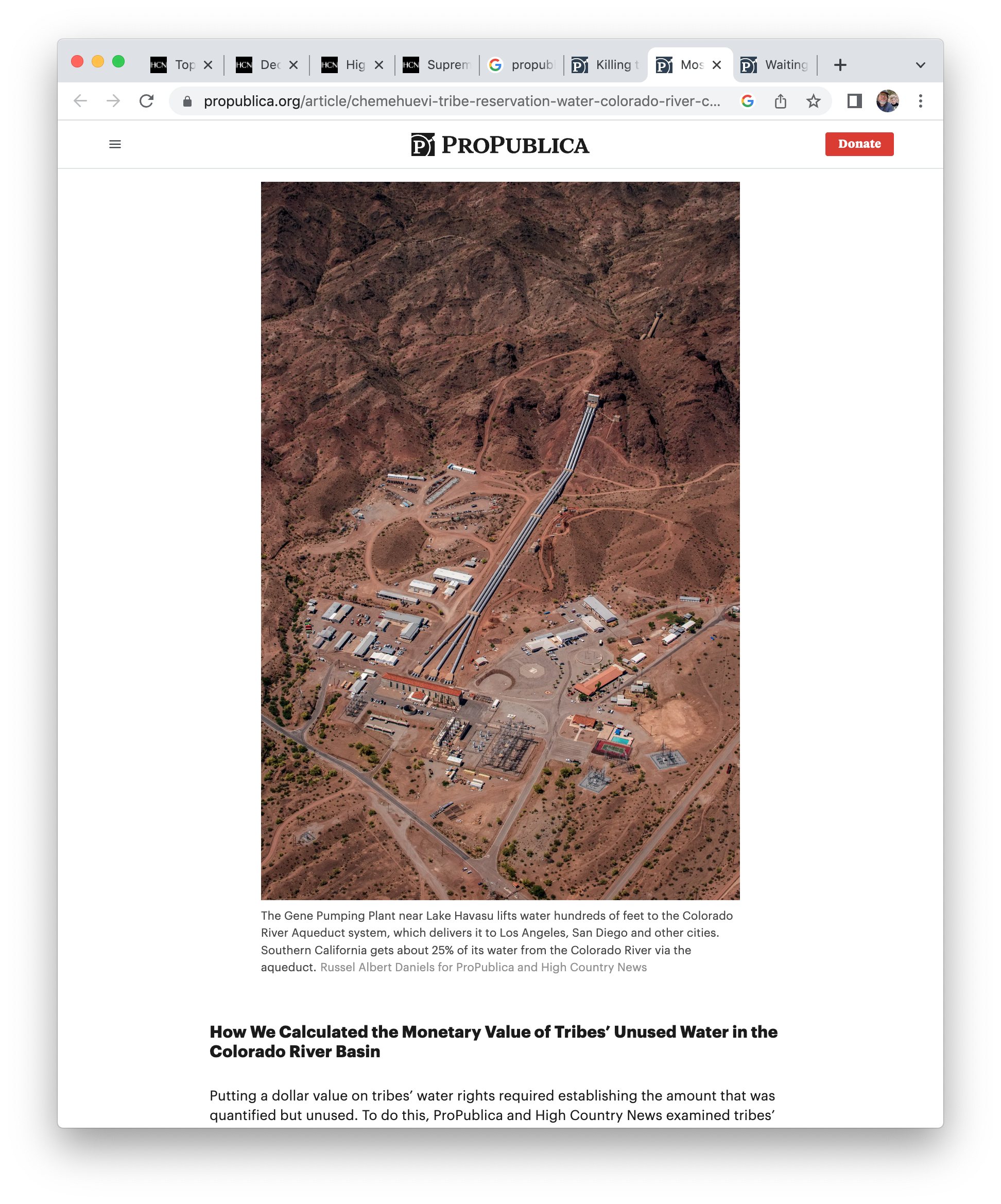
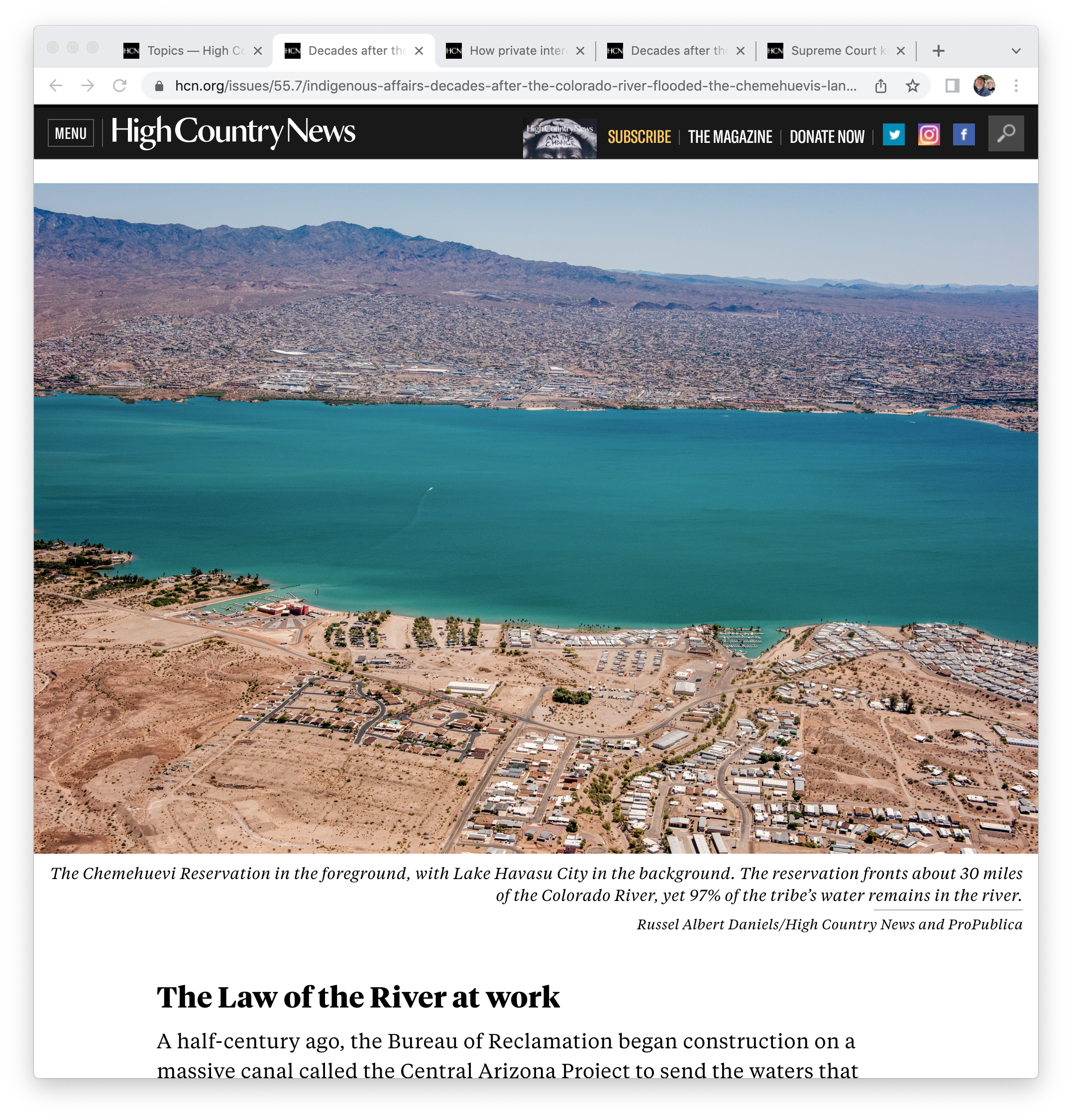
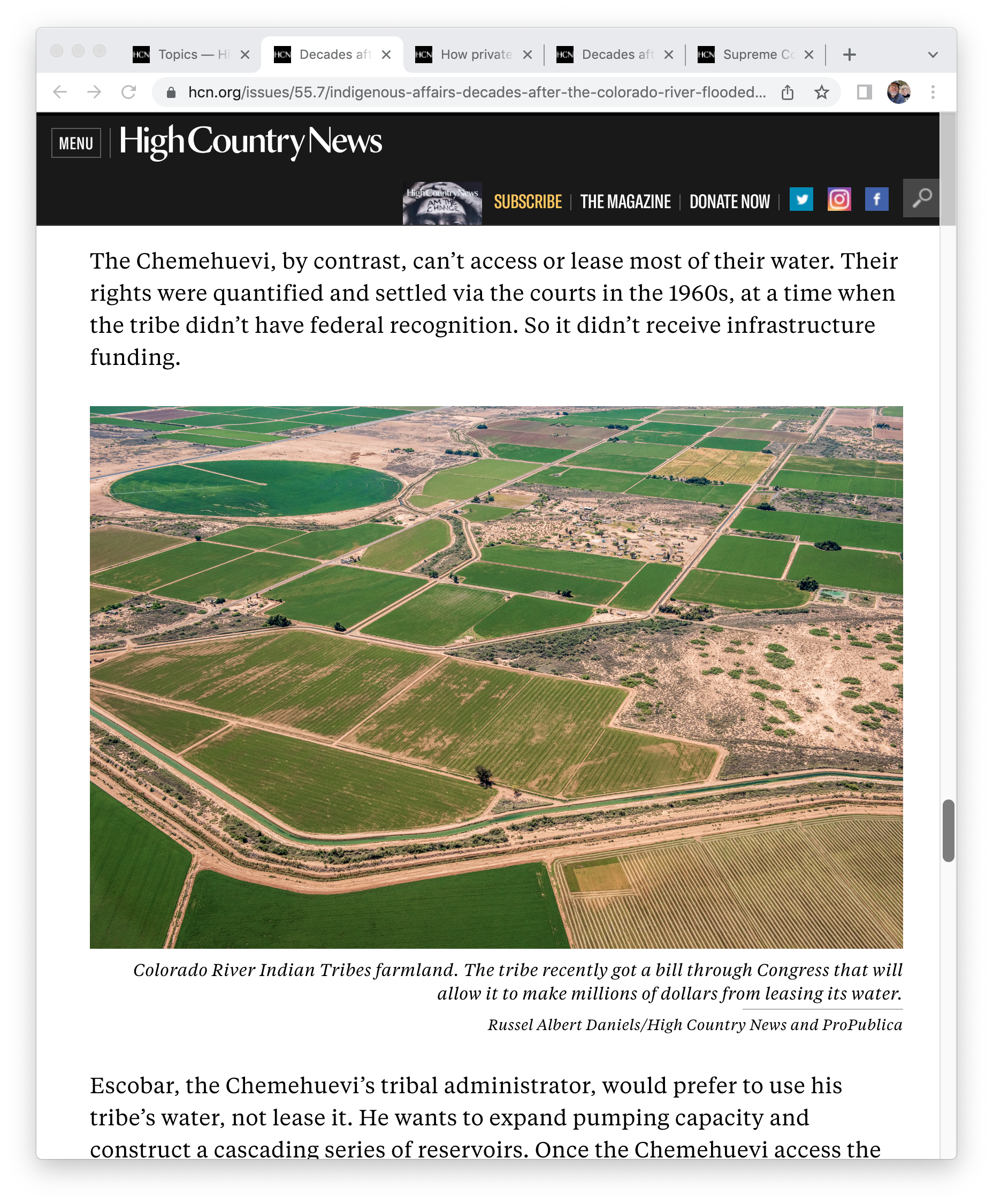
Russel’s The Genízaro Pueblo of Abiquiú exhibition at the New York City Smithsonian National Museum of the American Indian. February 2023.
Tailyr Irvine, Donovan Quintero, and Russel in conversation with Native America Calling, discussing their recent Smithsonian NMAI photo essay’s.
Russel in conversation at the NYC NMAI. February 4, 2023
Russel interviewed by Phoebe Farris for Cultural Survival here.
Russel’s photo story about Utah based ochre harvester Elpitha Tsoutsounakis in The New York Times American Rituals:
“These ancient stars exploded, and there was iron dust everywhere,” Ms. Tsoutsounakis said. “It is in our bodies, it is in our blood, it is in the landscape. It is in the ochers. It is everywhere.”
After “assembling” ocher from places that have already been disturbed, like washes, load cuts and mine tailings, Ms. Tsoutsounakis returns to her studio in Salt Lake City to mix the iron material with a binder to then grind, swatch and catalog.
Thank you Amanda Webster!
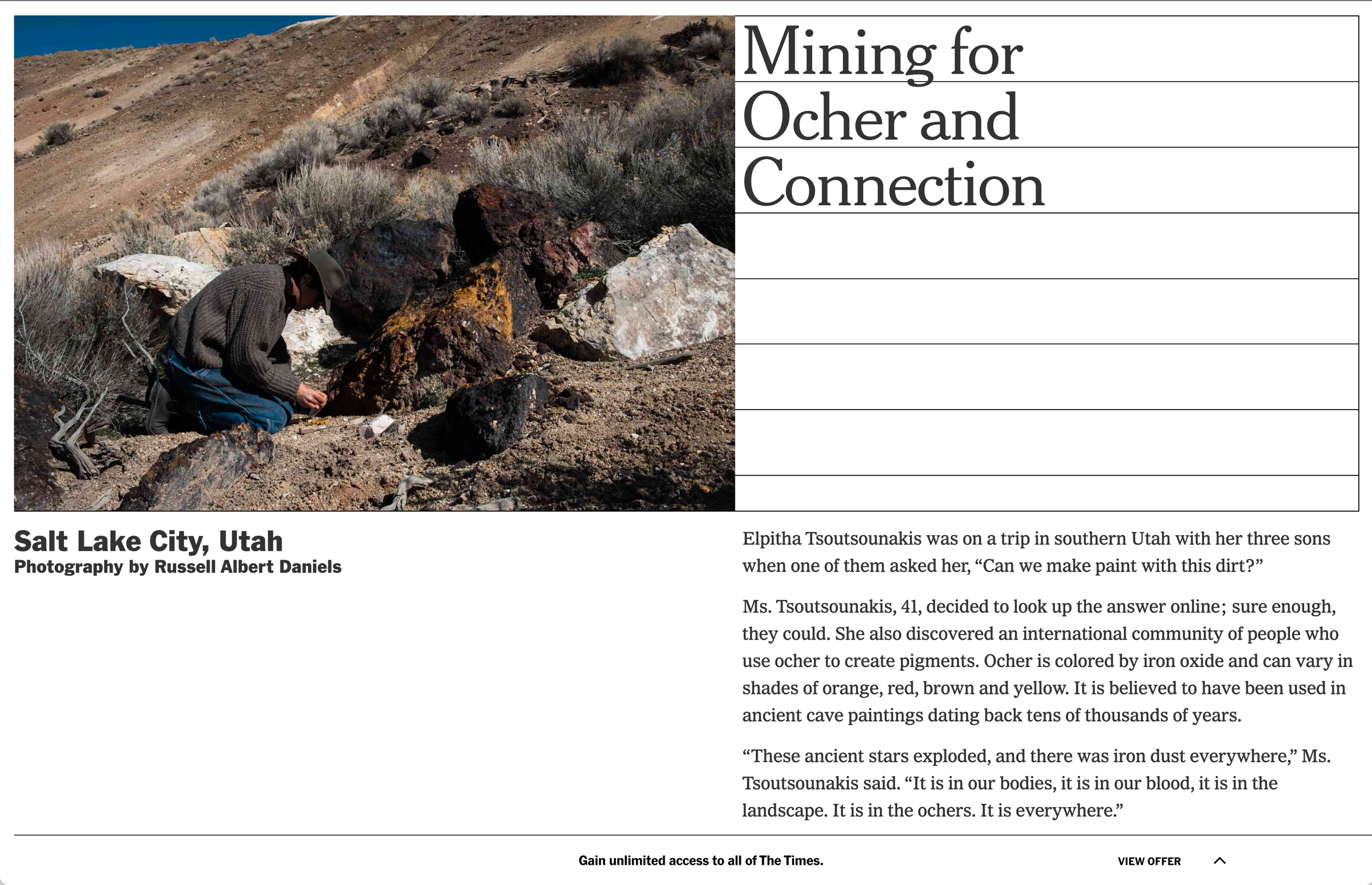
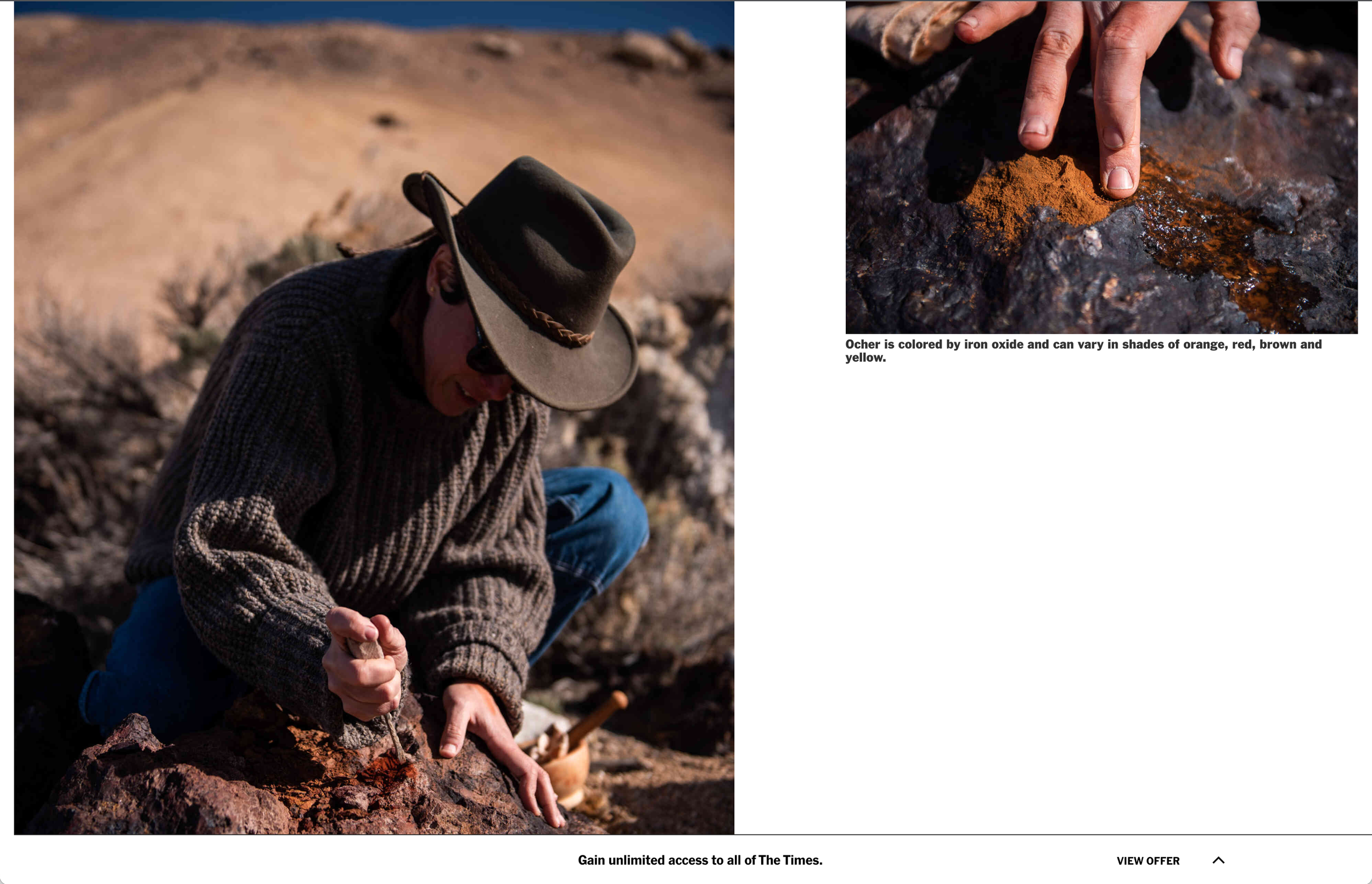
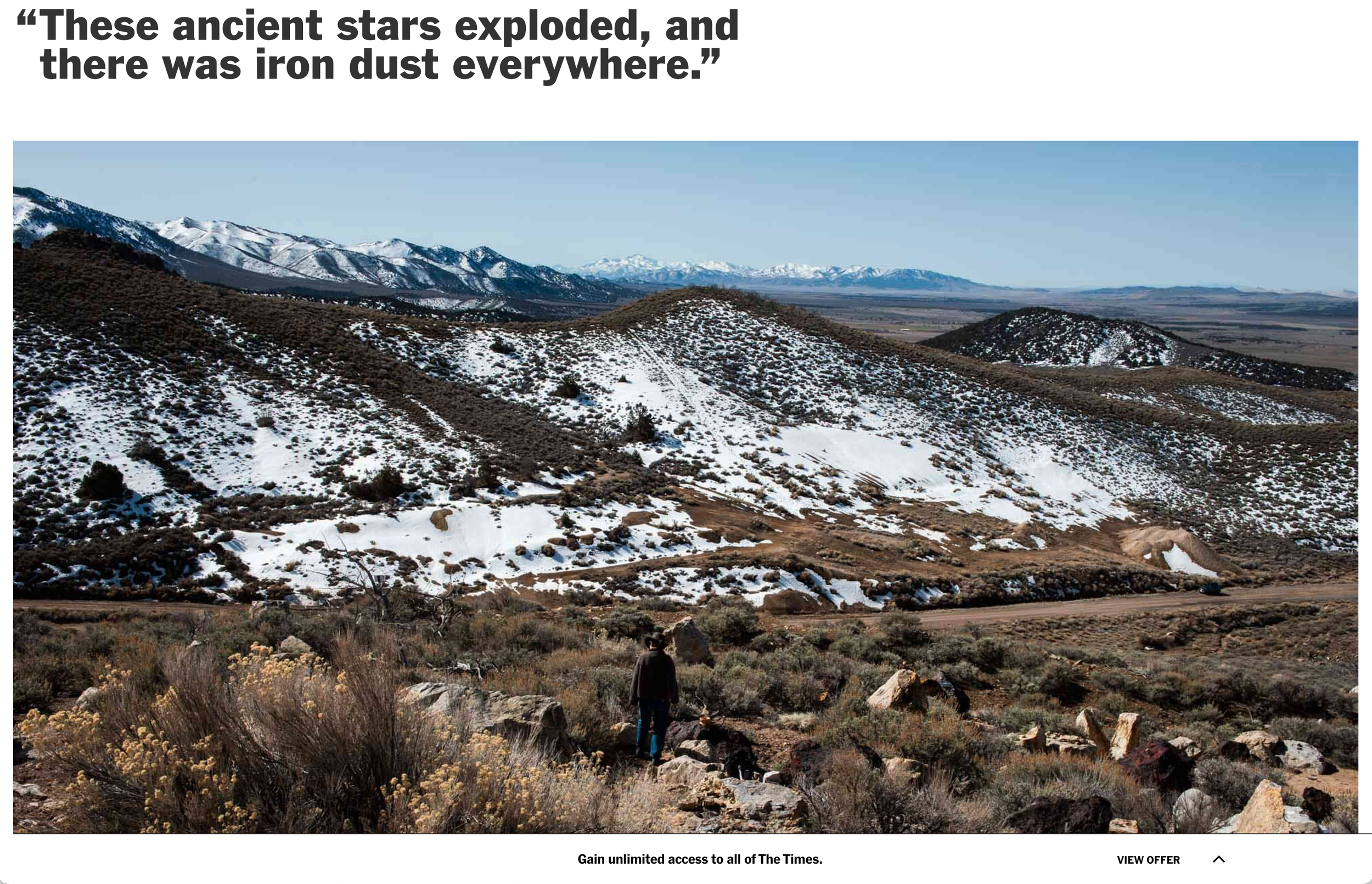
In March 2023, Hope & Hammer launched their online magazine. Russel contributed to Ann Larson’s latest story, portraits of Rae Duckworth and Tyeise Bellamy. See it here.
Salt Lake Tribune Thanksgiving story here.
Russel’s recent work in this 2022 Mother Jones article about the Uinta Railway slotted to be constructed in 2023. The railway will link Utah’s Uintah Basin energy extraction to the Union Pacific Rail Road. Article by Stephanie Mencimer. MJ story here.
From Russel: “I have so much love and respect for traditional print media, wether it’s newspapers, magazines, art books, photo zines, and silver prints. It’s a big reason why I do what I do and I am extremely grateful and love to do what I do. I recently returned home from a long reporting, research, and relaxation trip in the Southwest and am so excited to see the December High Country News magazine in my mailbox. This issue features a thoughtful and moody spread of my black and white photographs, on assignment on the Wind River Reservation, Wyoming. My photos illustrate Stephen Lezak’s beautiful and well written feature story about the social-economical-political wildness that has always been – since the Pleistocene – between the buffalo, horses, and humans. It’s a nuanced story about the reintroduction of buffalo back to their native habitat in care of the Arapaho and Shoshone. It’s a story to help us understand what Land Back means when the Indigenous say “Land Back.” “
See online story here.
Russel was included in a November 2021 National Geographic article about Native American photographers. Clips below. See story online here.
Russel’s latest for the High Country News – The nation’s last uranium mill plans to import Estonia’s radioactive waste. November 2021
See clips below. Read online story here
‘Utah Is a Destination Wedding Hot Spot, No Travel Required’ for The New York Times: here
July 7, 2021 National Geographic — Northern Ute Tribe — How Indigenous leaders are pushing to vaccinate their hard-hit communities.
See clips below. Read story here.
Mother Jones Magazine September/October 2021 . Feature photographs for Stephaine Mencimer’s excellent Ammon Bundy profile.
See clips below. Read article here.
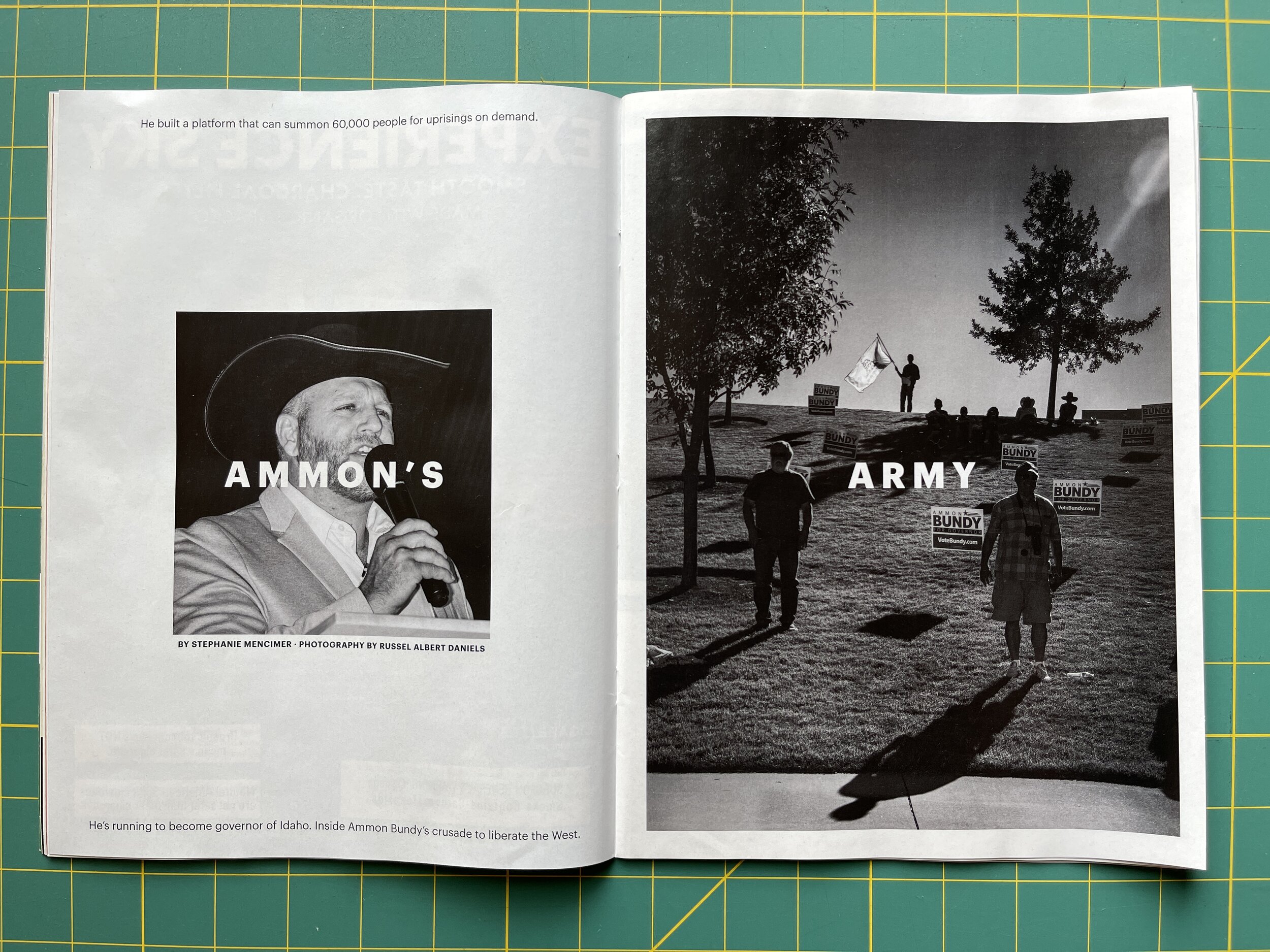


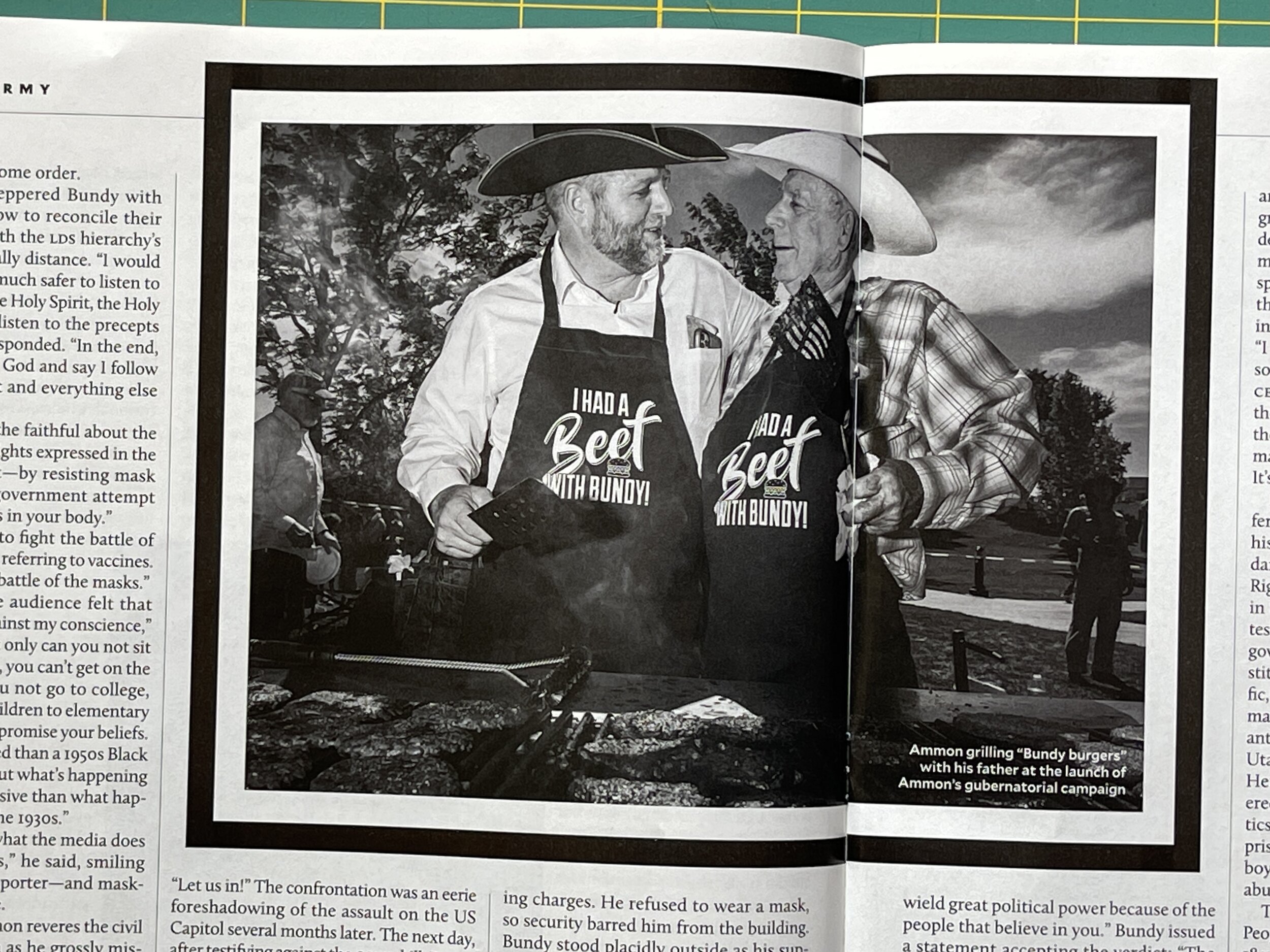
The Library of Congress print purchase. Summer 2021
This past 2021 summer, The Library of Congress Print and Photograph Department acquired a set of 20 limited edition prints from Russel’s ongoing project: Untitled Plateau. Russel spent 4 days working with John Paul Jespersen at Scale Up Art fine art printing in San Francisco, printing 20 limited edition 16x24 inch black and white pigment prints. Scale Up Art does amazing work for artists, museums and galleries. Russel’s over all goal with printing this portfolio was to have them look and feel like silver gelatin fiber prints, the foundation of Russel’s photography, and that is how they turned out. Photo by John Paul Jespersen. https://scaleupart.com/fine-art-printing/
Russel photo of Genízaro Delvin Garcia standing in the ruins of the Santa Rosa Catholic church is featured along with 6 other incredible Native American photographers in this National Public Radio online showcase about the conversation going on at 400 Years Project.
See the article here: https://www.npr.org/sections/pictureshow/2021/06/06/992742396/the-400-years-project-looks-at-native-american-identity-through-the-native-lens
I am thrilled to share that I have been selected to be one of the six Utah Arts and Museums 2021 Visual Arts Fellows.
Notes from the juror, Evan Garza: This is a precarious moment in which to look at, examine, and make works of art. After the events of the last year––namely the protests following the murder of George Floyd, the violence at the U.S. Capitol, and more than a year of quarantine amid a deadly global pandemic––it is an uncertain moment in which to simply exist in American society. And, like spring, it is also a moment of incredible hope, renewal, and dramatic change. The applicants to this year’s Utah Visual Arts Fellowship reflect the rich diversity of Utah’s artists and their various communities and cultural identities. I was excited to see the work of artists at various points in their professional career, from artists just out of graduate school to self-taught mid- and late-career artists working in several disciplines.
The winners of this year’s Utah Visual Arts Fellowship––Mitchell Barton, Annelisse Duque, Russell Albert Daniels, Levi Jackson, Anna Laurie Mackay, and Colour Maisch––are indicative of the depth, breadth, and quality of artistic talent found in Utah. They also reflect the cultural, generational and disciplinary diversity of this year’s applicant pool. The winners’ respective practices reflect the shifting artistic, social, and cultural landscape of Utah and the United States and their historical and political undercurrents.
Artists like Russell Albert Daniels and Annelisse Duque each use their practice as a means of exploring and deeply examining their cultural heritage, Native American and Filippino-American respectively, while establishing their own unique voices in the process. The sculptural work of Colour Maisch is interested in what often goes unseen and exists beneath the surface, exploring and creating new forms in the process. Mitchell Barton’s interdisciplinary practice repurposes web development tools and digital media to explore and distort meaning and potentiality. Levi Jackson explores our relationship to the land and the natural landscape through video and sumptuous photographs which combine the Earth and manmade objects. Anna Laurie Mackay’s delicate works on silk tissue paper demonstrate the fragility and temporality of memory. The respective practices of the 2021 Utah Visual Arts Fellows reflect the incredible diversity of artistic practice in Utah, incredible quality of work, and themes deeply relevant to contemporary discourse.
Daniels November “Takeover” at the New Yorker Photo Instagram profile, showcasing The Genízaro Pueblo of Abiquiú photo essay.
NMAI postcard design for the photo essay exhibits in NYC & DC. Both exhibits were postponed due to COVID-19.
Curator Cecile R. Ganteaume hosted a conversation with Russel Albert Daniels on his photo essay "The Genízaro Pueblo of Abiquiú", the first photo essay in the online exhibition "Developing Stories: Native Photographers in the Field."
Watch the conversation: https://youtu.be/gyhSm1cS3iQ
Visit the exhibition: https://americanindian.si.edu/develop...
Read more about Russel Albert Daniels’ work in American Indian Magazine: https://www.americanindianmagazine.or...
(Text from the NMAI exhibit, here)
The Genízaro (heˈnēsǝrō) people of Abiquiú have a profound sense of community. They have lived upon the same land in New Mexico for nearly 300 years. Their history, however, is born out of violence and slavery.
Spain and the Catholic Church profoundly impacted the lives of the Indigenous ancestors of the Genízaro people. Beginning in the early 1600s, Spanish colonists sought to “reeducate” (some say “detribalize”) the Native people of the Southwest.
Funded by the Spanish Crown, the Spanish first abducted and then later purchased war captives from surrounding tribes. Those “ransomed” were primarily from mixed tribal heritage, including Apache, Comanche, Kiowa, Navajo, Pawnee, and Ute. The colonists took these individuals to their households, where they were taught Spanish and converted to Catholicism. They were forced to work as household servants, tend fields, herd livestock, and serve as frontier militia to protect Spanish settlements. Many endured physical abuse, including sexual assault. The Spanish called these captives and their children “Genízaro.” The term originated from a Turkish word for slaves trained as soldiers.
Rio Chama Valley, Northern New Mexico
For centuries, the Apache, Navajo, Pueblo, and Ute peoples forged trails in and out of the rugged Rio Chama valley, while Tewa and other Pueblo peoples farmed along its river. The creation of New Spain in 1535, and then the extension of the Spanish Empire into the Southwest in the 1600s, transformed the region. By the 1700s, the Rio Chama valley had become a violent imperial frontier marked by deadly clashes, retaliatory raids, and a brutal trade in Native slaves. The conflicts forever altered the lives of Native peoples, including the Genízaro of Abiquiú in northern New Mexico. (from the NMAI website)
See the full photo essay in collaboration with the Smithsonian’s National Museum of the American Indian here.
El Cautivo Dance
The Santo Tomás feast day ceremony culminates on Sunday with El Cautivo (The Captive) Dance, which has been performed at Abiquiú for more than 150 years. Dancers dress as their ancestors, with face paint, feather hair ornaments, and ankle bells. They also wear dollar bills pinned to their ceremonial clothing, signifying their “ransom”—being purchased by the Spanish from other tribes—and the beginning of their enforced servitude. Spanish law allowed them to be free after 10 to 15 years. (from the NMAI website)
Maurice Archuleta
Abiquiu, NM
See the full photo essay in collaboration with the Smithsonian’s National Museum of the American Indian here.
Delvin Garcia Standing in Remains of the Santa Rosa de Lima Church
Sections of church walls are all that remain of the 18th-century Spanish colonial settlement Santa Rosa de Lima. Repeated attacks from Ute and Comanche peoples forced the colonists to abandon the village. In 1754, through a land grant, the Spanish gave Genízaro and Hopi families 16,000 acres of land that was one mile away. Here, the Santo Tomás de Abiquiú settlement was established.
During the ensuing years, as Spain, Mexico, and then the United States claimed parts of the region, the Genízaro people of Abiquiú lost some of their land. Delvin Garcia, former president of the Abiquiú land grant board, has worked with fellow community members to reclaim these lands. As Garcia states, “La Merced del Pueblo Abiquiú (the Town of Abiquiú Land Grant) is recognized and protected under the Treaty of Guadalupe Hidalgo and is historically unique.” (from the NMAI website)
NMAI Podcast Interview
Curator Cecile R. Ganteaume hosted a conversation with Russel Albert Daniels on his photo essay "The Genízaro Pueblo of Abiquiú", the first photo essay in the online exhibition "Developing Stories: Native Photographers in the Field."
Watch the conversation: https://youtu.be/gyhSm1cS3iQ
Visit the exhibition: https://americanindian.si.edu/develop...
Read more about Russel Albert Daniels’ work in American Indian Magazine: https://www.americanindianmagazine.or...
This conversation was presented to members of the museum on August 26, 2020.
The Genízaro Pueblo of Abiquiú photo essay at the National Museum of the American Indian website.

